
Category of Astronomical Heritage: tangible immovable
Remeis Observatory, Bamberg, Germany

Format: IAU - Outstanding Astronomical Heritage
Description
Geographical position - InfoTheme: Astronomy from the Renaissance to the mid-twentieth century
Entity: 143
Subentity: 1
Version: 4
Status: PUB
Date: 2022-02-07 20:04:47
Author(s): Gudrun Wolfschmidt
Dr. Karl-Remeis Observatory (Astronomical Institute of the University of Erlangen-Nürnberg),
Sternwartstr. 7, D-96049 Bamberg, Germany
Location - InfoTheme: Astronomy from the Renaissance to the mid-twentieth century
Entity: 143
Subentity: 1
Version: 3
Status: PUB
Date: 2022-02-07 20:02:10
Author(s): Gudrun Wolfschmidt
Latitude 48°53’05’’ N, Longitude 10°53’17’’ E, Elevation 290m above mean sea level.
IAU observatory code - InfoTheme: Astronomy from the Renaissance to the mid-twentieth century
Entity: 143
Subentity: 1
Version: 2
Status: PUB
Date: 2019-06-17 12:41:10
Author(s): Gudrun Wolfschmidt
521
Description of (scientific/cultural/natural) heritage - InfoTheme: Astronomy from the Renaissance to the mid-twentieth century
Entity: 143
Subentity: 1
Version: 11
Status: PUB
Date: 2022-03-15 22:37:28
Author(s): Gudrun Wolfschmidt
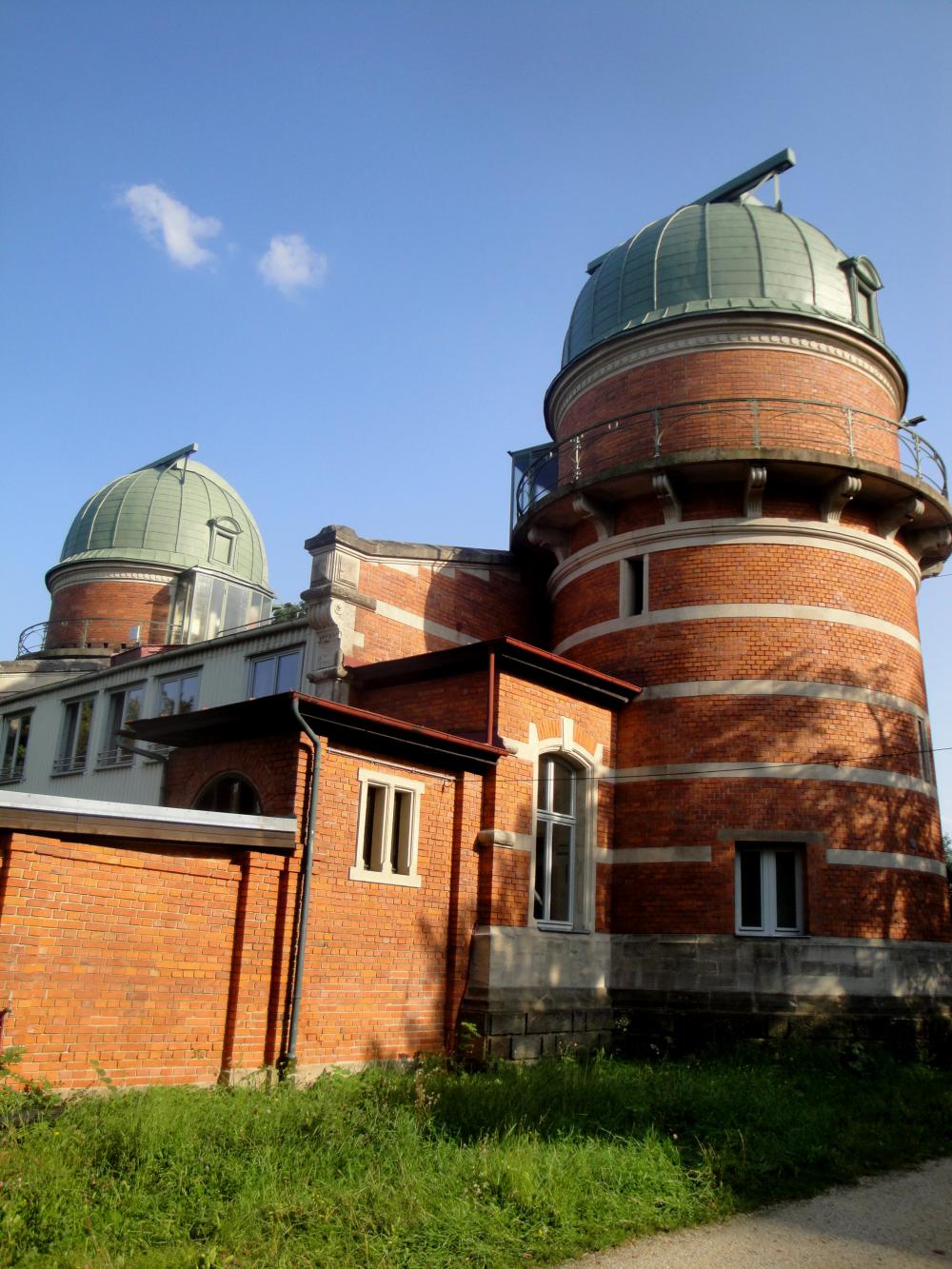
Fig. 1. Domes of Dr. Karl-Remeis Observatory (1889), (Photo: Gudrun Wolfschmidt, 2011)
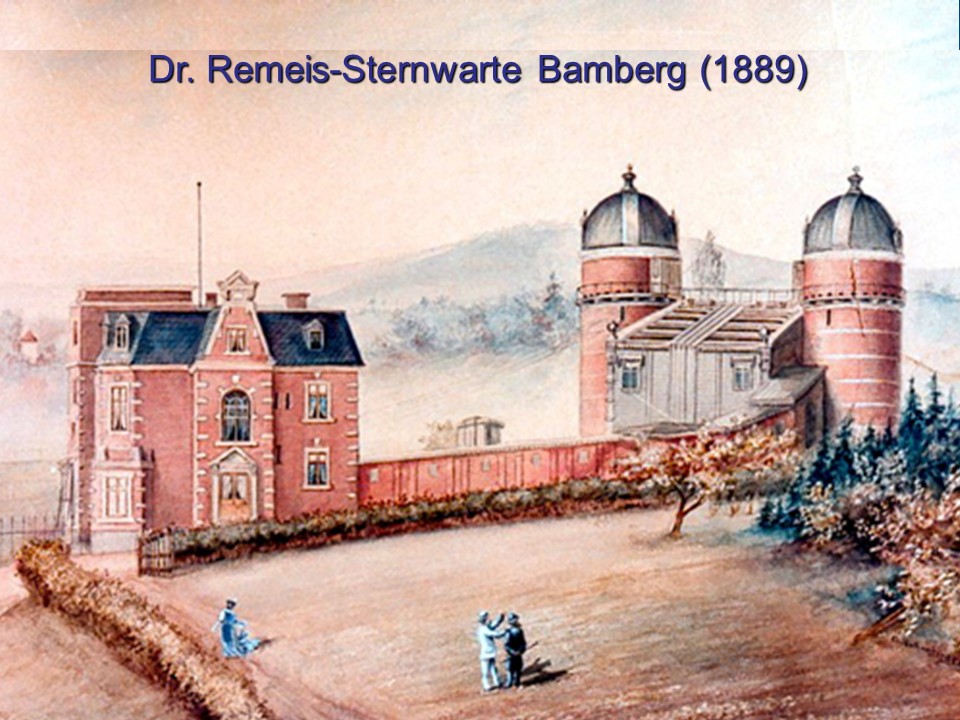
Fig. 2a. Dr. Karl-Remeis Observatory (1889) with the meridian hall between the towers, (Image courtesy: Remeis Observatory)
Founded in 1889, the Dr. Karl Remeis Observatory was built on one of Bamberg’s seven hills, the Stephansberg, at an altitude of 288m on the border of the town. The architect of this nice ensemble in historistic style was Georg Hofbauer of Bamberg according to plans by the architect Max Ißleiber, successor and employee of Hermann Eggen (1844--1920), who had already built the "German model observatory" in Strasbourg. The ceremonial opening of the Remeis Observatory took place on 24 October 1889.
The main building, a typical villa of the Wilhelminian period, built as a brick building with sandstone frames, had offices, the library and the custos’s flat on the ground floor. In the basement were the workshop and laboratory, on the first floor the director’s apartment (until 1978), the assistant’s flat on the second floor, and on the roof a platform for meteorological observations.
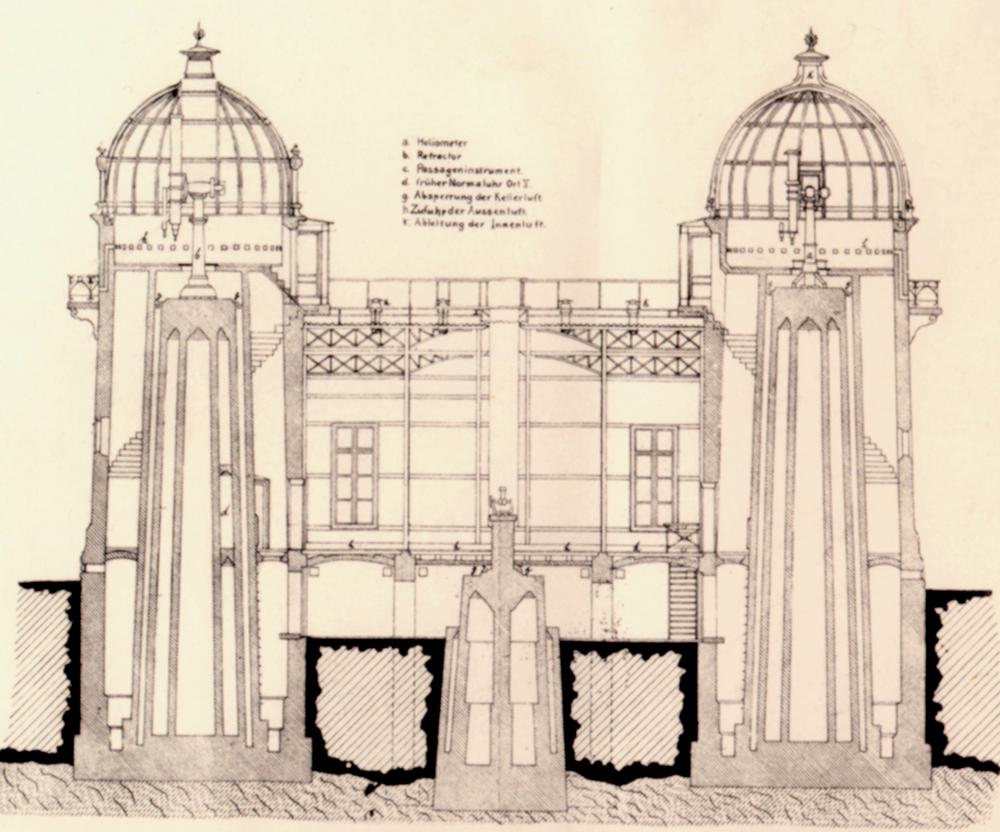
Fig. 2b. Dr. Karl-Remeis Observatory (1889) -- two towers with strong fundaments, and the meridian hall (Image courtesy: Remeis Observatory)
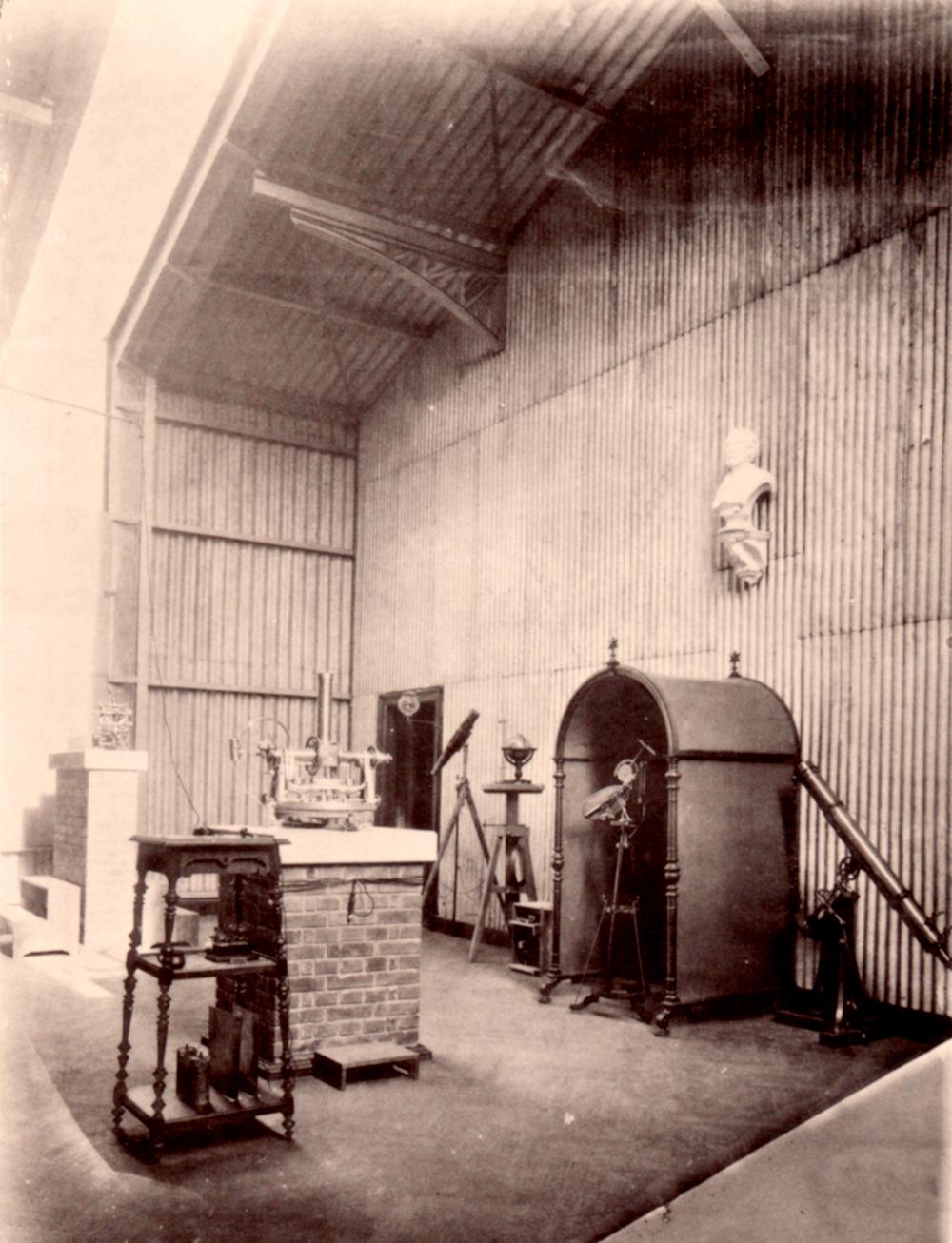
Fig. 2c. Meridian hall of Dr. Karl-Remeis Observatory (1889) with a transit instrument and portable telescopes (Image courtesy: Remeis Observatory)
A covered corridor provides the connection to the unheated observation building. Two towers (12m high with a dome of 6m diameter) are arranged in east-west direction with a meridian hall between them. The iron construction covered with corrugated metal leads to a rapid temperature equalisation due to its good thermal conductivity. The instruments in the tower are based on strong fundaments - without any vibrations, which was also realised in Strasbourg, but this was by no means a standard at that time.
Foundation of a research observatory
The funds of 400,000 Mark came from the Bamberg lawyer (PhD, University of Erlangen, faculty of law, 1863) and amateur astronomer Dr. Karl Remeis (1837--1882), who left his fortune for the construction of the observatory, because he had no heirs. Remeis had erected a private observatory in his villa on Michelsberg. In 1879, he replaced his 3-inch telescope (7.2cm, f = 80cm), made by Fraunhofer of Munich with a 4-inch refractor (10.8cm, f= 1.4m) from Reinfelder & Hertel of Munich. In addition, he owned a 3-inch comet finder (7.8cm) by Merz of Munich, two universal instruments from Ertel of Munich and August Becker of Göttingen, and various smaller instruments. Finally, in 1881, he succeeded in acquiring a large 10-inch refractor (26.4cm, f = 3.9m, 1:14, wooden tube) from Dr. Hugo Schröder of Oberursel.
Remeis’ will of September 24, 1879, provided a total of 400,000 Mark: 180,000 Mark for the construction of the observatory, 70,000 Mark for the instrumentation, 80,000 Mark capital, from the interest the astronomer has to be paid -- this amount was underestimated, as it turned out later. Even though the foundation was not met with enthusiasm by the citizens of Bamberg and the magistrate, it was accepted in 1883.
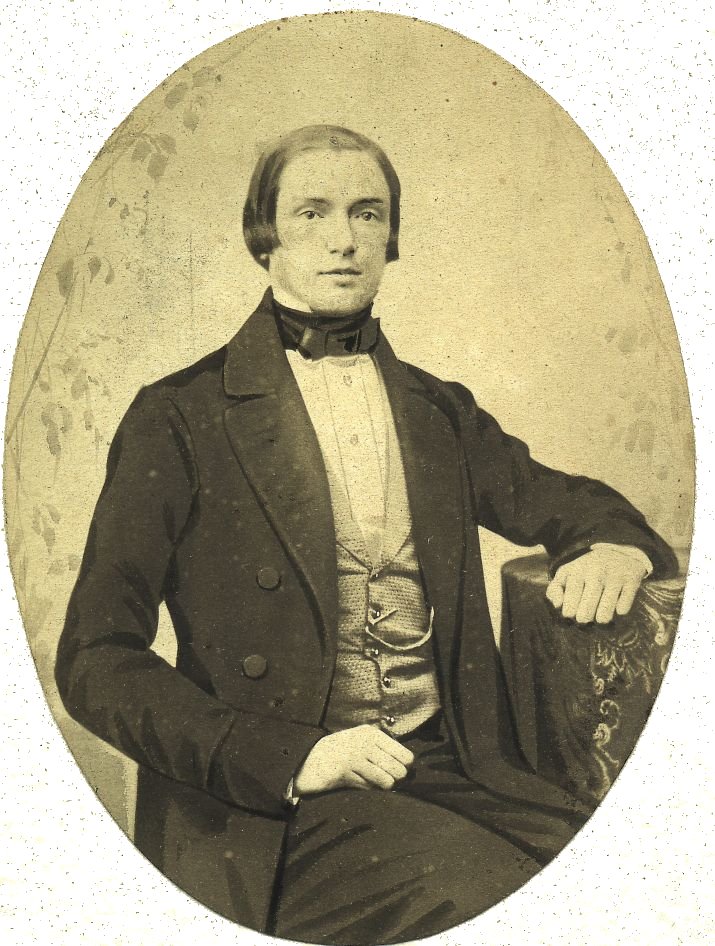
Fig. 3. Dr. Karl-Remeis (1837--1882), (Image courtesy: Remeis observatory)
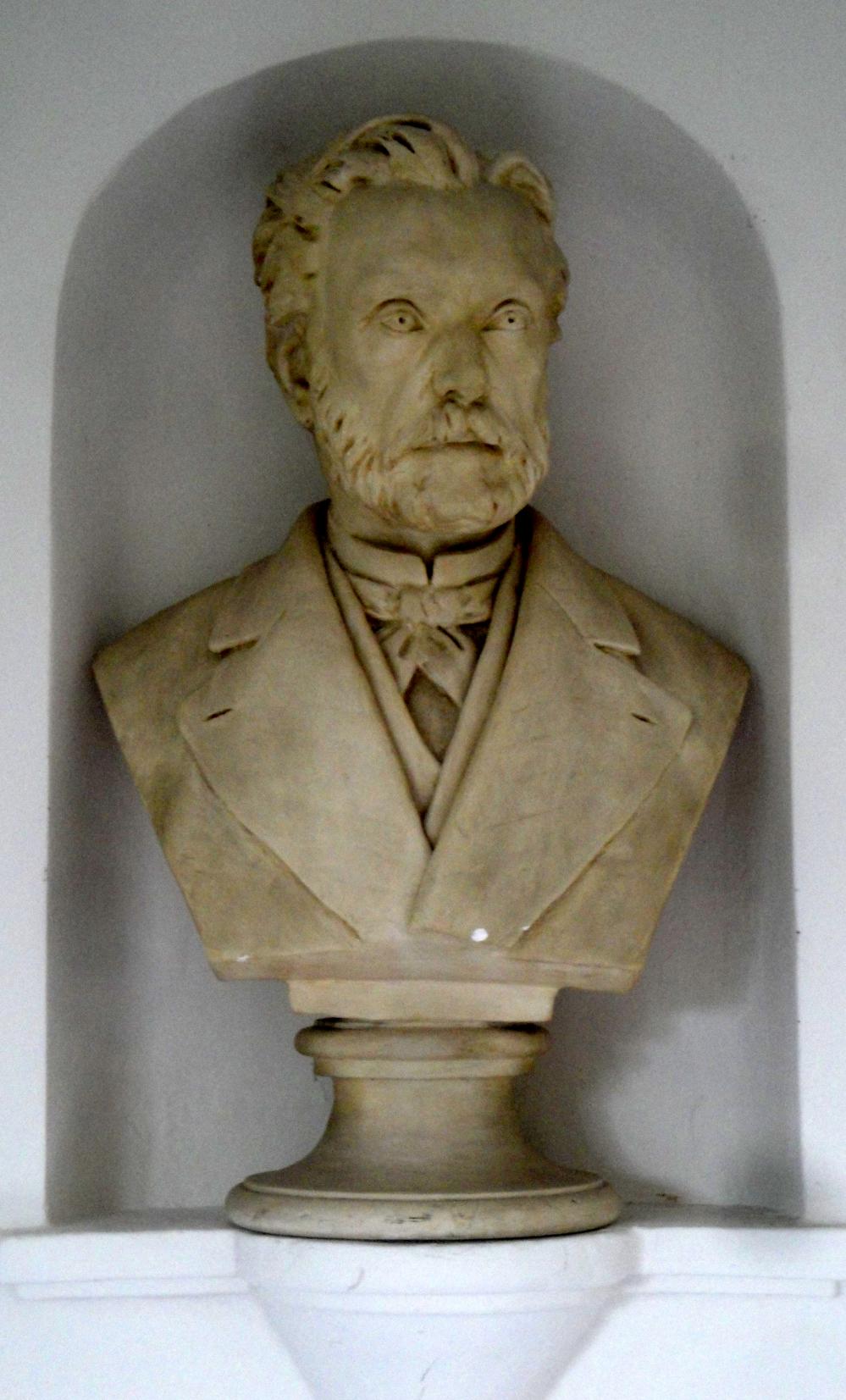
Fig. 3. Bust of Dr. Karl-Remeis (1837--1882), (Photo: Gudrun Wolfschmidt)
Thanks to the generous endowment of an observatory, the name Remeis has survived to this day:
"The main part of my fortune should be used to set up an observatory in Bamberg. I am convinced that the best use of material goods is to support and promote scientific research, which elevates and ennobles people spiritually ... Astronomy ... is the science which helps man to an appropriate sense of self and his position in the universe, and at the same time enables him to find the eternal laws of the cosmos, to reflect on the idea of creation, and to feel a divine spark."
("Mein Vemögen soll seinem Hauptbestandteile nach zur Errichtung einer Sternwarte in Bamberg verwendet werden. Ich bin überzeugt, dass die beste Verwendung der materiellen Güter darin besteht, die wissenschaftliche Forschung, welche den Menschen geistig erhebt und veredelt, zu unterstützen und zu fördem .... Die Astronomie ... ist die Wissenschaft, welche dem Menschen zur richtigen Erkenntnis seiner selbst und seiner Stellung im Universum verhilft und zugleich aber auch ihn in die Lage versetzt, die ewigen Gesetze des Alls zu finden, dem Schöpfungsgedanken nachzudenken und in sich selbst einen göttlichen Funken zu fühlen.")
An observatory that goes back to a foundation was something unique in Germany, in contrast to the USA: there was only one state observatory (Naval Observatory, Washington, D.C.), all other large observatories were financed by foundations.
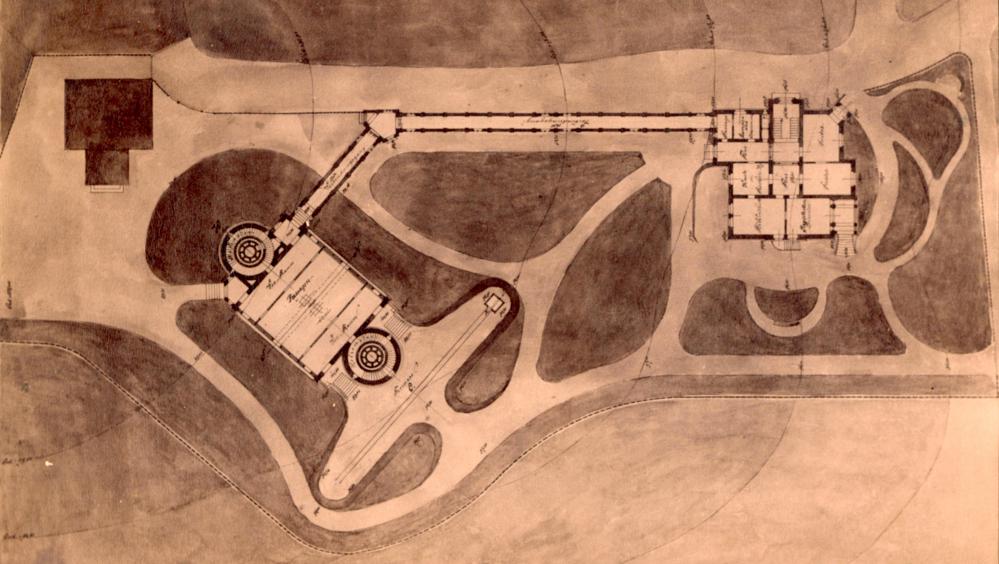
Fig. 4. Layout of Remeis Observatory (1889), 1:600 (Image courtesy: Remeis observatory)
The modern layout of Remeis Observatory was inspired by Strasbourg Observatory: The living quarters and offices are strictly separated from the observation buildings, the two domes and the meridian circle building -- laid out in west-east direction. The buildings are connected by a covered corridor.
After visiting 40 observatories, the first director Ernst Hartwig (1851--1923) planned the instrumentation of the Remeis Observatory. The main instrument was initially a heliometer -- the largest in the northern hemisphere -- in the Eastern dome, since 1946 it was replaced by a 60-cm-reflecting telescope. The Meridian Hall did not get a meridian circle for lack of money, but only a 3-inch transit instrument. In the Western dome was the 26-cm-Schröder refractor of Remeis, replaced by a Schmidt telescope.
From classical astronomy to modern astrophysics
At the end of the 19th century, the observation buildings were strictly separated from the office and residential buildings. This separation of functions only partially succeeded in the Strasbourg Observatory (1874), then in a mature form with the Observatorio de La Plata (1883/86), Argentina, and with the Nice Observatory (1888) -- the astronomy park was invented. The Bamberg (1889) and Hamburg observatories (1906--1912) as well as the American observatories on Mt. Wilson and Mt. Palomar also followed this modern idea of the layout of an observatory.
At the same time the emphasis of research is changing "From classical astronomy to modern astrophysics": This is associated with a change of the instrumentation: from meridian circle, refractor (equatorial), heliometer, comet finder to new astrophysical instruments such as astrographs, portrait lenses, reflecting telescopes, Schmidt telescopes, and various astrophysical laboratory instruments. Astrographs are instruments for determining star positions, i.e. for classic astronomical tasks, carried out using modern photographic methods. There are coordinate and spectra measuring devices as well as blink comparators for analysing the photographic plates.
The main activities of Remeis Observatory were not in classical astronomy but especially in the field of astrophysics. For more than 70 years, the observation of variable stars and the systematic sky survey of the northern hemisphere, in cooperation with the observatories in Babelsberg and Sonneberg, was the emphasis of research.
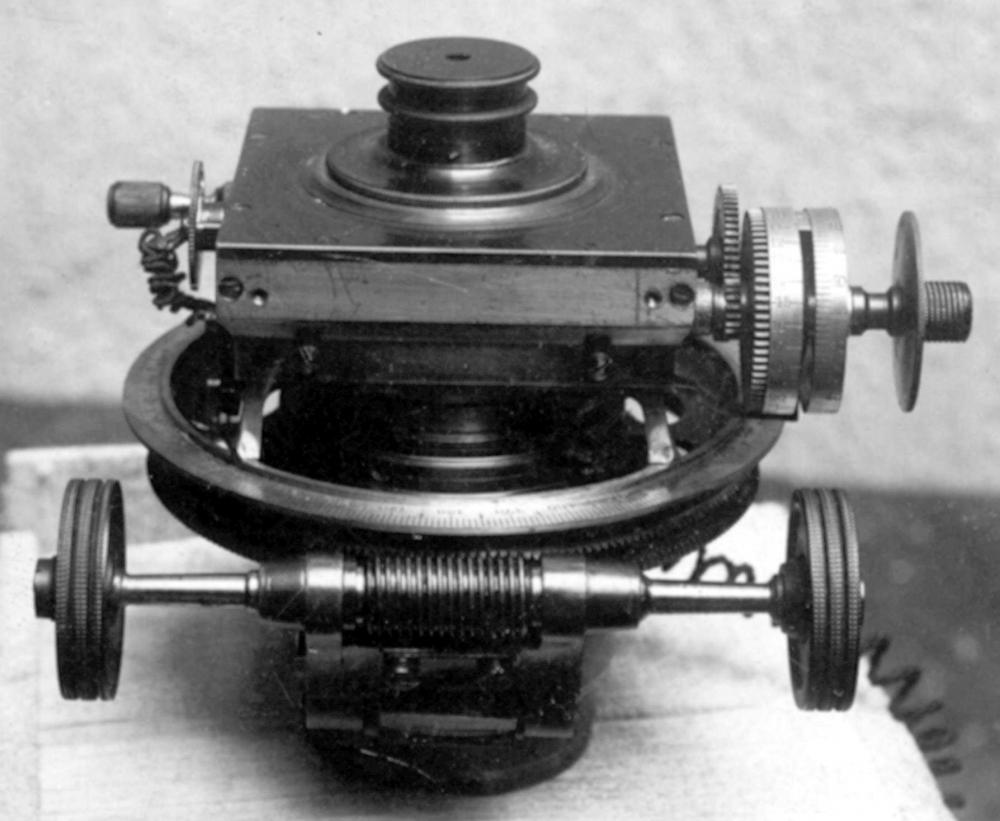
Fig. 5a. Nusser Astrograph (1911) (Image courtesy: Remeis observatory)
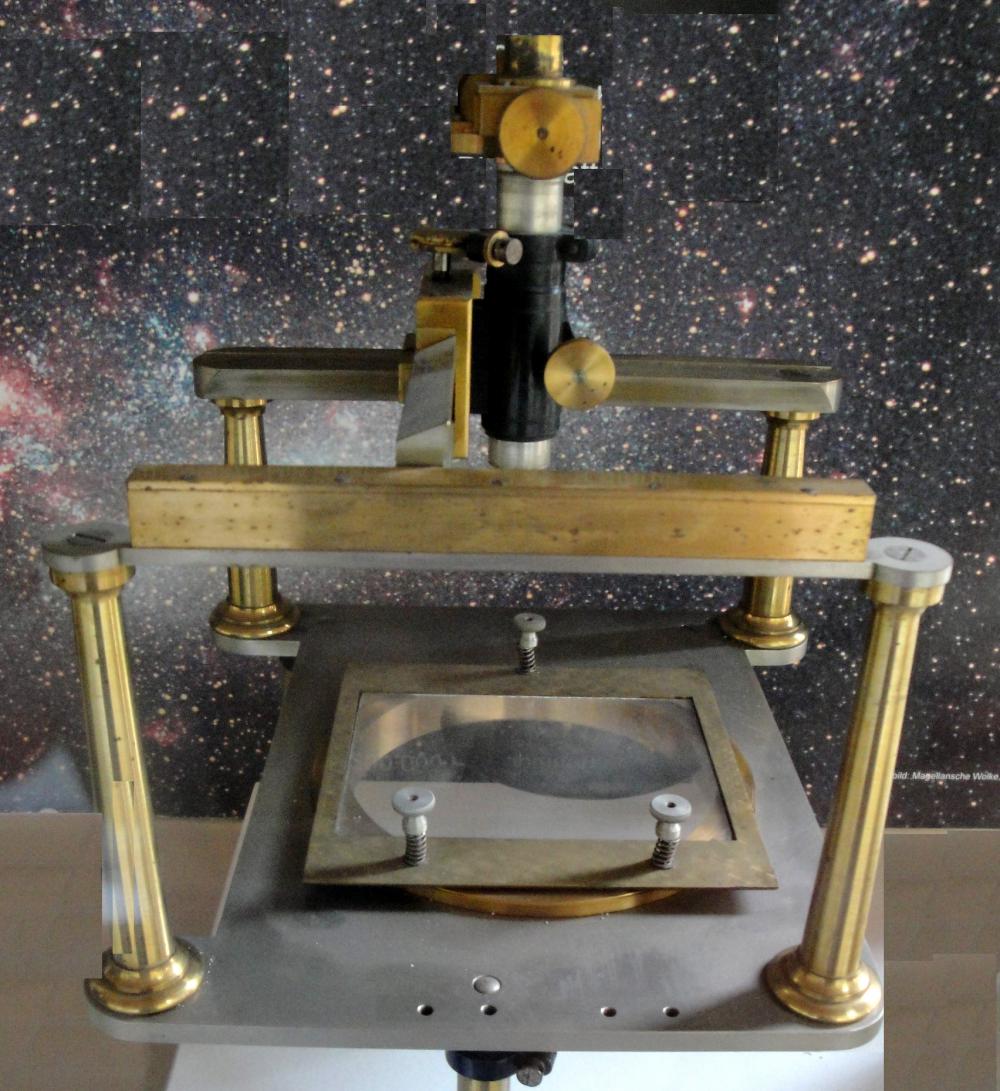
Fig. 5b. Heliograph Plate measuring machine, Fuess, Berlin (1899) (Image courtesy: Remeis observatory)
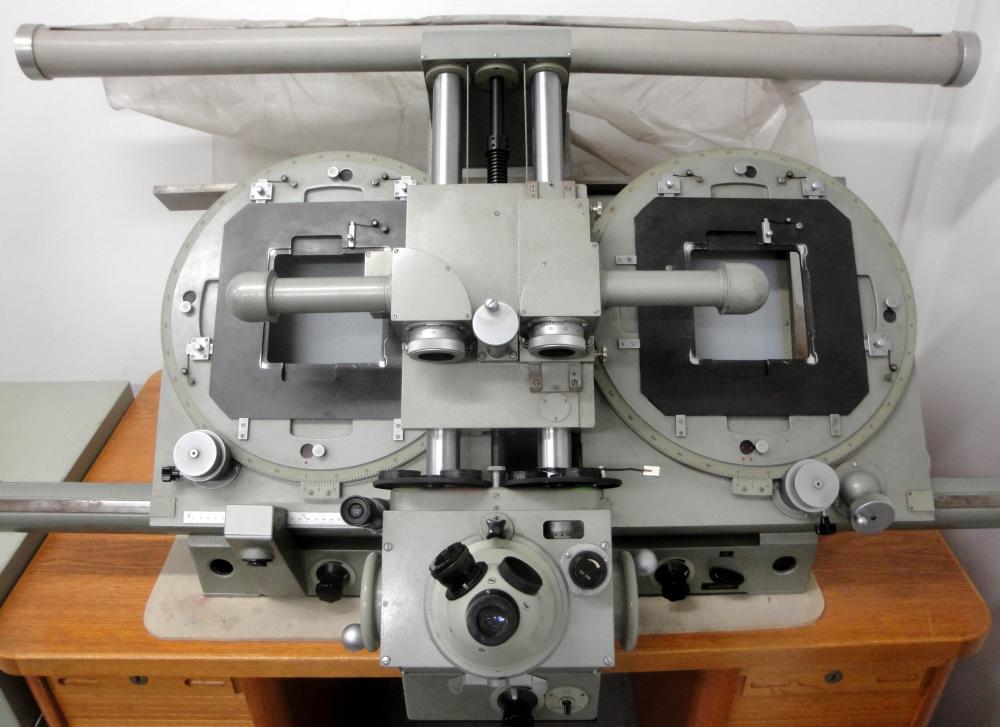
Fig. 5c. Zeiss Blinkcomparator (Image courtesy: Remeis observatory)
Already the first director Ernst Hartwig started with variable stars in 1891; they have been systematically examined for periods and type classification of the light curves, initially mainly variable stars of Algol type, but since 1897 also ß Lyrae type, and irregular variable stars like SS Cygni (today it is regarded as a cataclysmic variable -- a Close Binary System with the a red dwarf-type star, cooler than the Sun, and a white dwarf). From 1907 onwards, annual catalogues of positions and special features were published by the Remeis Observatory, which initiated a lively international exchange of observatory publications.
The interest in Variable Stars and Binaries continued also under Ernst Zinner. Together with Paul Guthnick of Potsdam-Babelsberg and Cuno Hoffmeister of Sonneberg, Zinner started a sky survey of the northern hemisphere in 1926 (until 1939). The sky was devided in 30 degree zones and photographed with identical Ernostar cameras (aperture 13.5cm, focal length 24cm) and 16x16cm photographic plates -- 6500 plates.
In Bamberg, also some smaller cameras were used: Tessar (aperture 3cm, focal length 14cm), 1931 to 1953, Tessar (aperture 9cm), 1953 to 1963, Dogmar (aperture 11cm, f=40cm), 1950 to 1963 -- 4500 plates.
But Zinner had never enough money to update the instrumentation of the observatory. In addition, he introduced the history of astronomy as a new field of research and got international recognition.
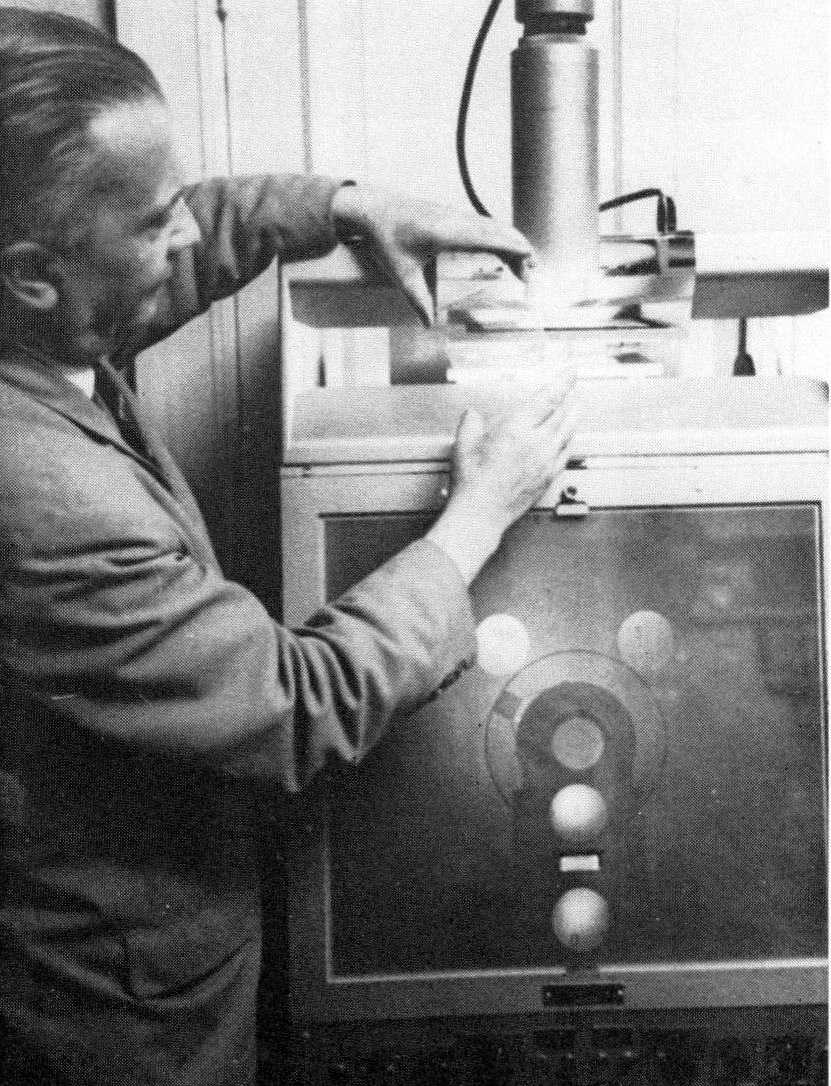
Fig. 6a. Wolfgang Strohmeier using the iris diaphragm photometer (Image courtesy: Remeis observatory)
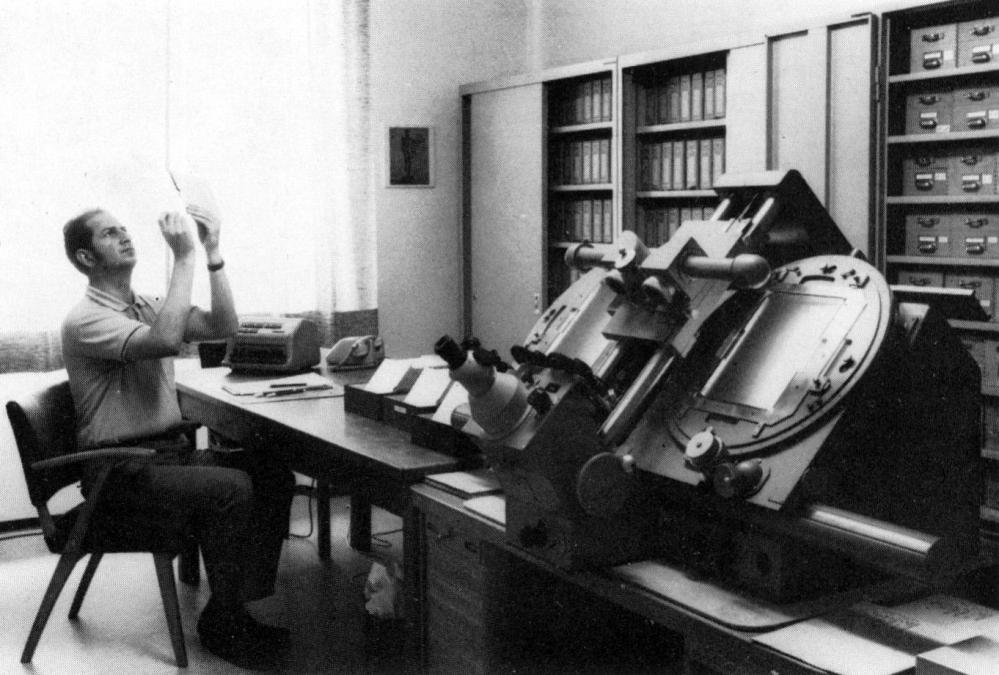
Fig. 6b. Knigge in the photographic plate archive (Image courtesy: Remeis observatory)
In 1959, 1962, 1965 and 1977, Wolfgang Strohmeier organized IAU variable star colloquia, which introduced the institute to international research.
He started a sky patrol of the southern hemisphere (sponsored by the German Research Organisation / Deutsche Forschungsgemeinschaft, DFG) with Aero Ektar cameras (aperture 10cm, focal length 61cm) in out stations in Boyden/South Africa (1963 to 1972, 10 cameras), San Miguel Observatory, Argentina (1969 to 1972, 6 cameras) and Mount John/New Zealand (1967 to 1976, 4 cameras) -- around 22.000 plates.
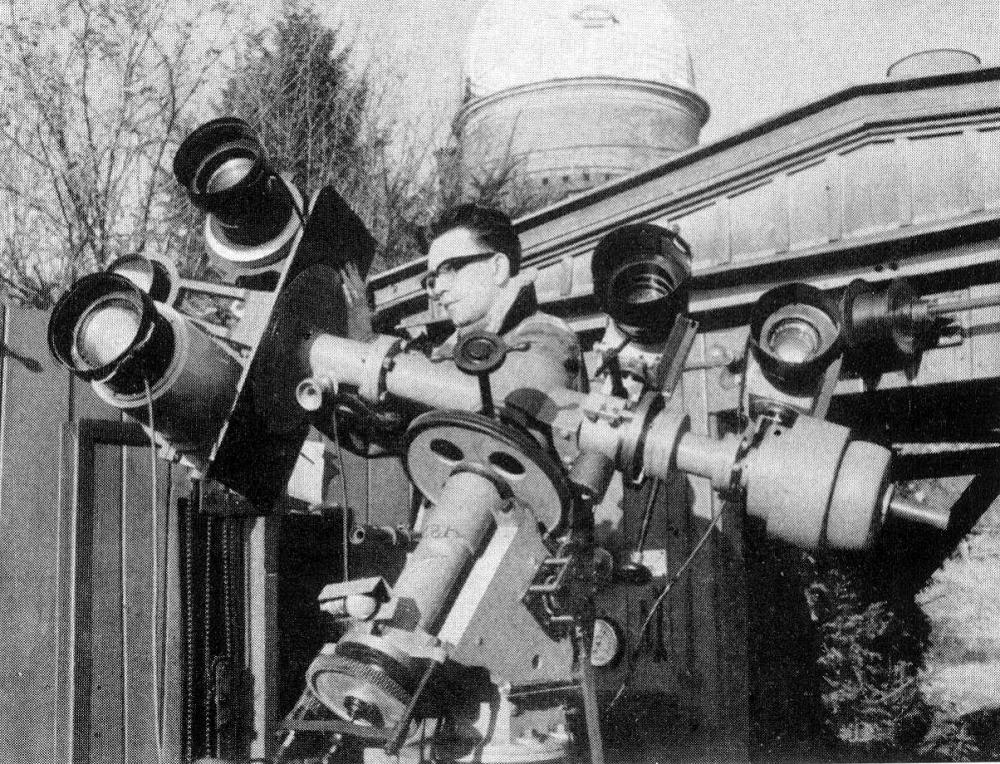
Fig. 7a. Portrait objectives in Remeis Observatory (Image courtesy: Remeis observatory)
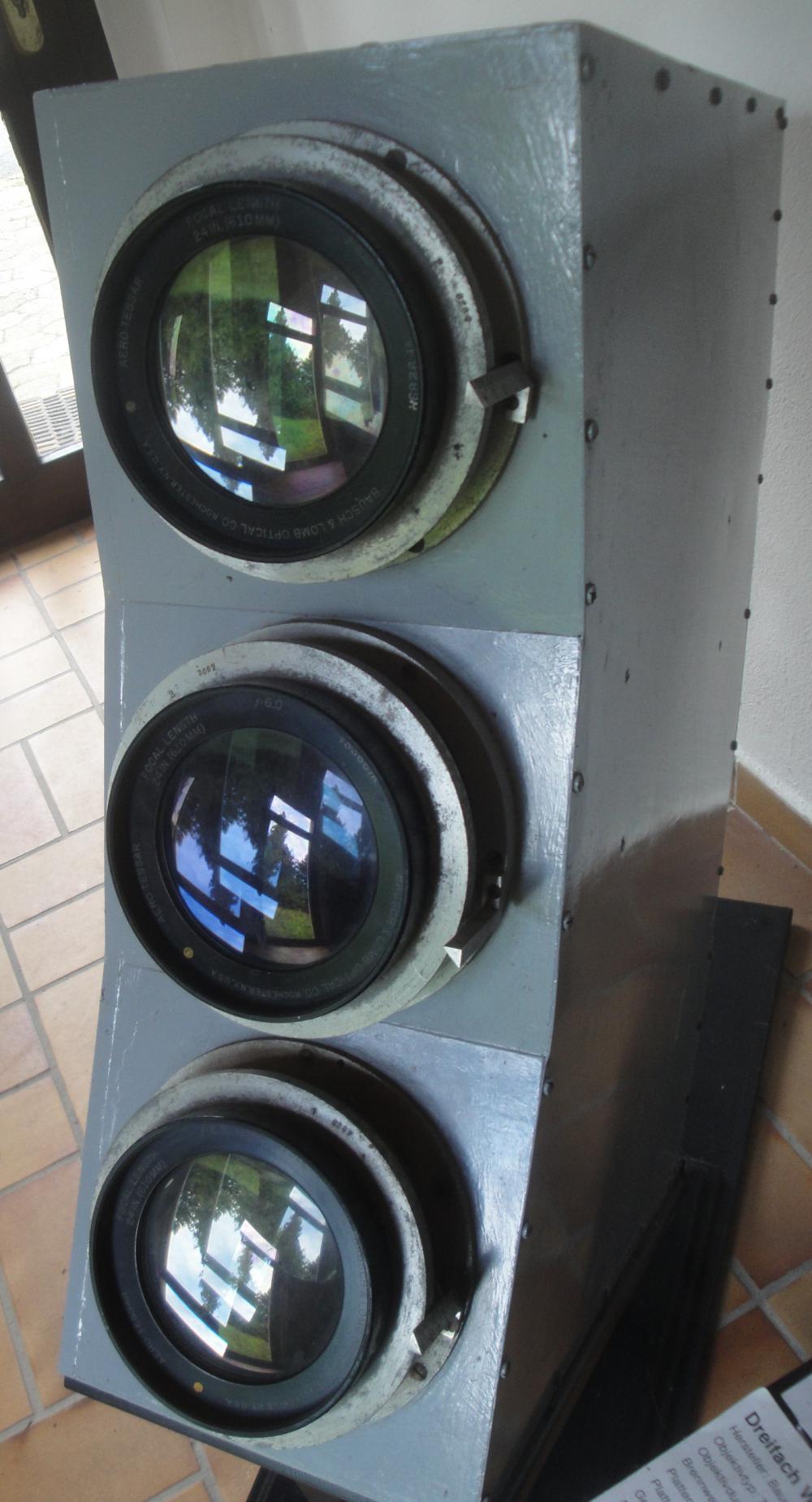
Fig. 7b. 10-cm-Aero Tessar objectives, Bausch & Lomb (Image courtesy: Remeis observatory)
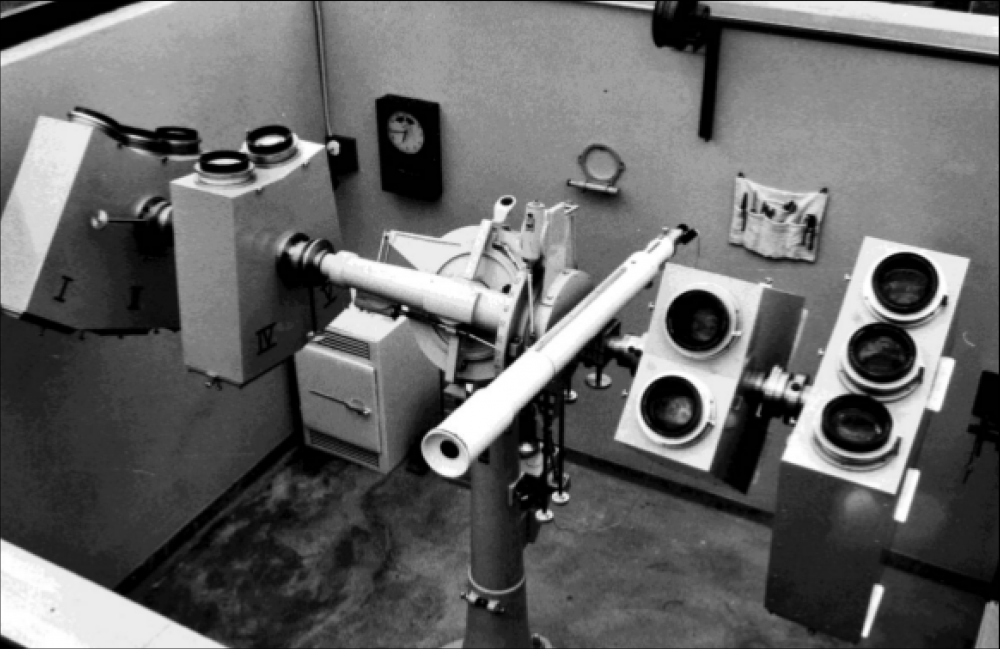
Fig. 7c. Ten Aero Ektar objectives of the southern survey mounted at Boyden station (Image courtesy: Remeis observatory)
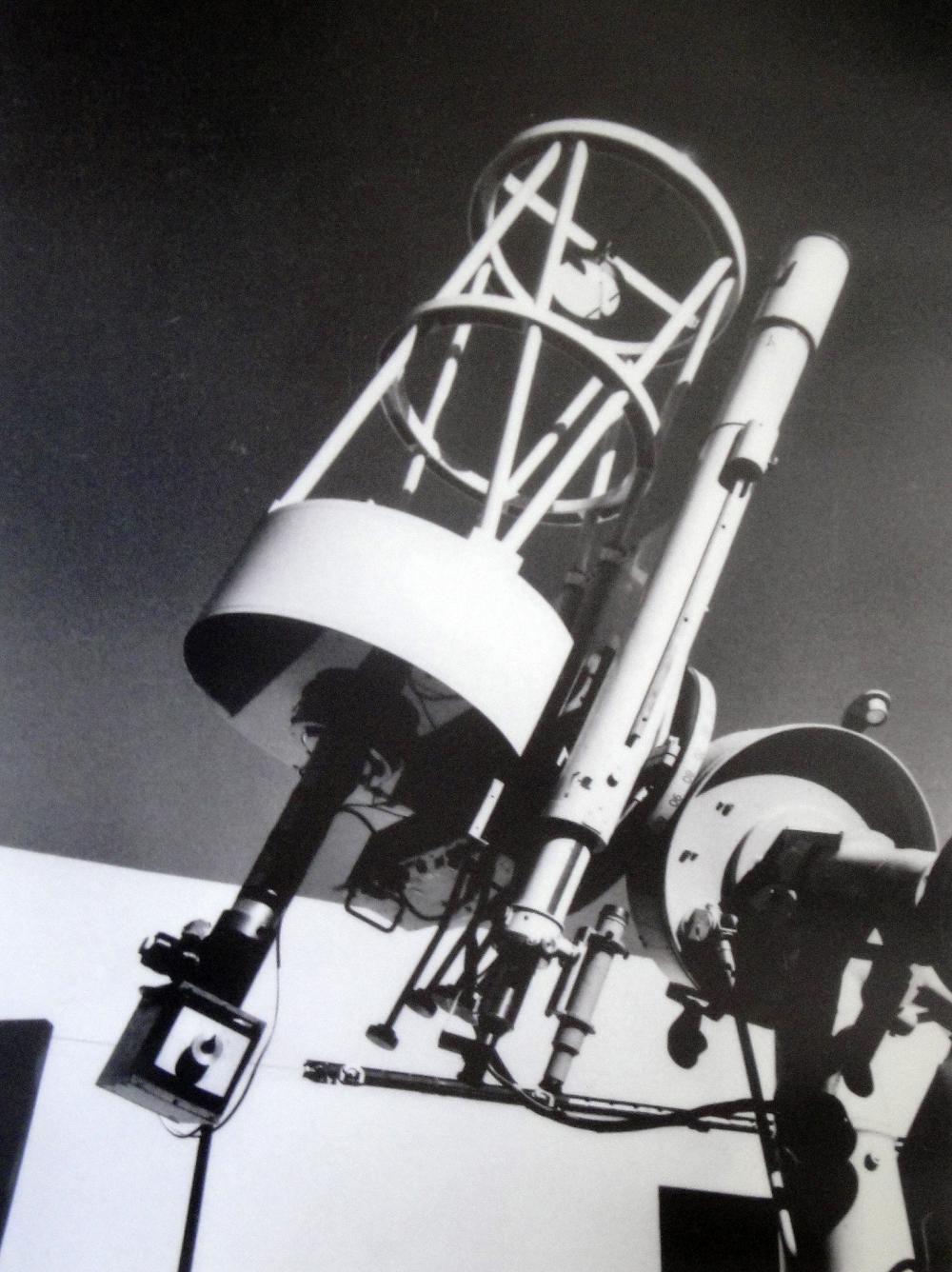
Fig. 7d. 40cm-Reflecting telescope at Boyden station (Image courtesy: Remeis observatory)
The result of the northern and southern sky patrol are 40,000 photographic plates, 1926--1939 and 1962--1976, which are archived in the old custos and workshop bulding. Sponsored by the DFG, in 2012 started a digitization research project of the plates, the APPLAUSE database and the integration into the international "Virtual Observatory".
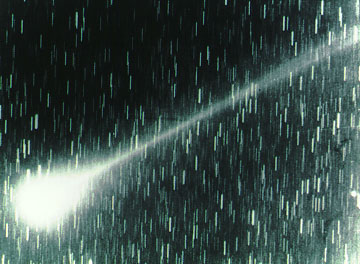
Fig. 7e. Comet 21P Giacobini-Zinner
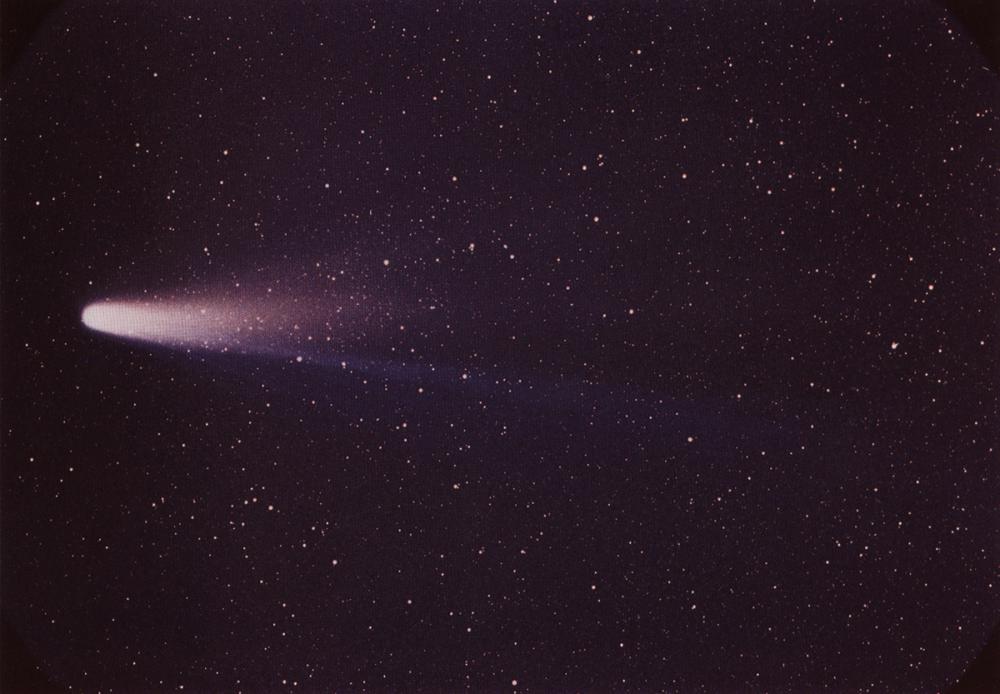
Fig. 7f. Comet Halley, photo: Dr. William Liller, Easter Island, 8 March1986 (credit: NASA)
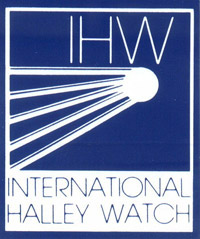
Fig. 7g. International Halley Watch (IHW) (1986), Logo (credit: NASA)
International Halley Watch (IHW) (1986)
Bamberg Observatory was the Eastern hemisphere center of the International Halley Watch (IHW) in 1986, in cooperation with NASA’s Jet Propulsion Laboratory in California as Western hemisphere center.
History - InfoTheme: Astronomy from the Renaissance to the mid-twentieth century
Entity: 143
Subentity: 1
Version: 5
Status: PUB
Date: 2022-03-15 21:33:59
Author(s): Gudrun Wolfschmidt
Hartwig started astrophysical research: he acquired a stellar spectroscope, made by Toepfer of Potsdam. In 1894, Hartwig bought a wedge photometer, made by Toepfer of Potsdam, and a Zöllner photometer (1895), which was improved several times by Toepfer until 1907.
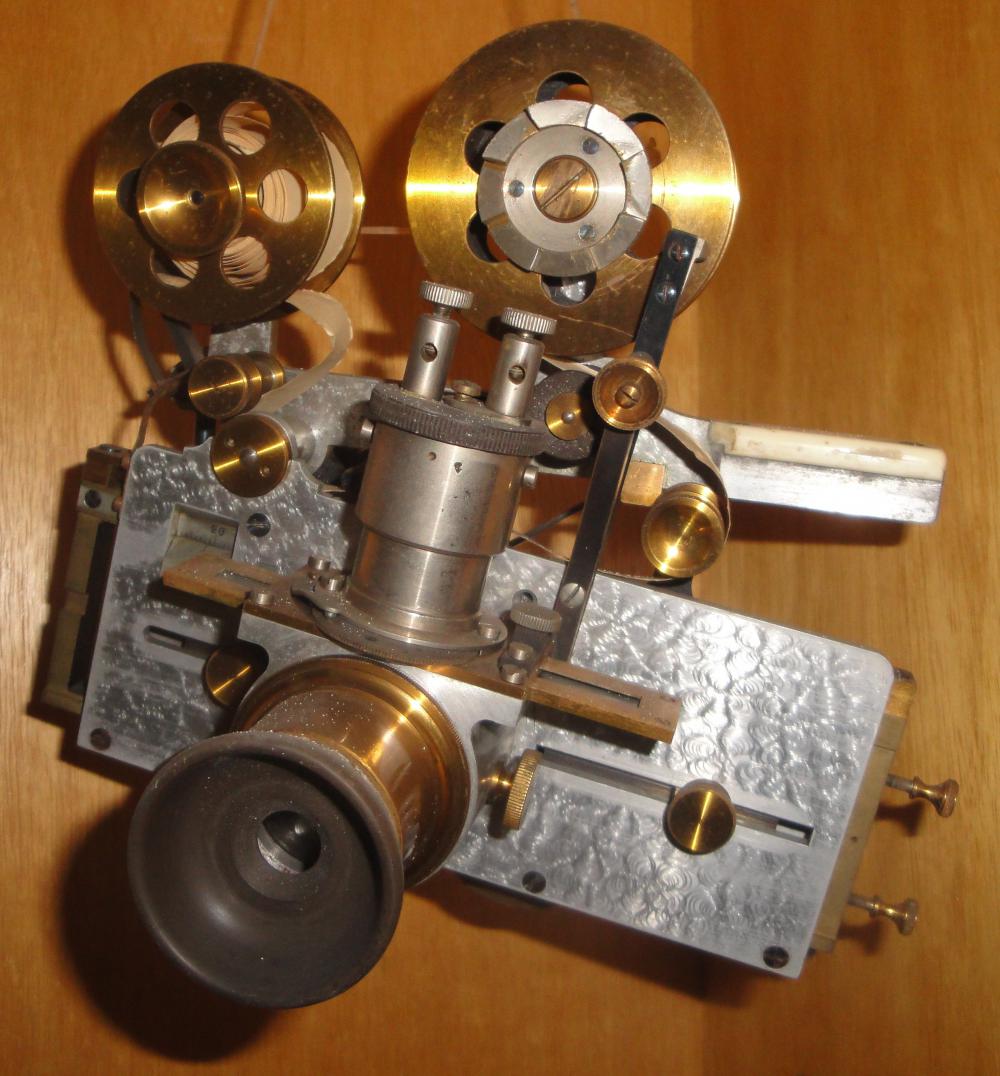
Fig. 8a. Wedge photometer, made by Toepfer of Potsdam (1895), (Photo: Gudrun Wolfschmidt)
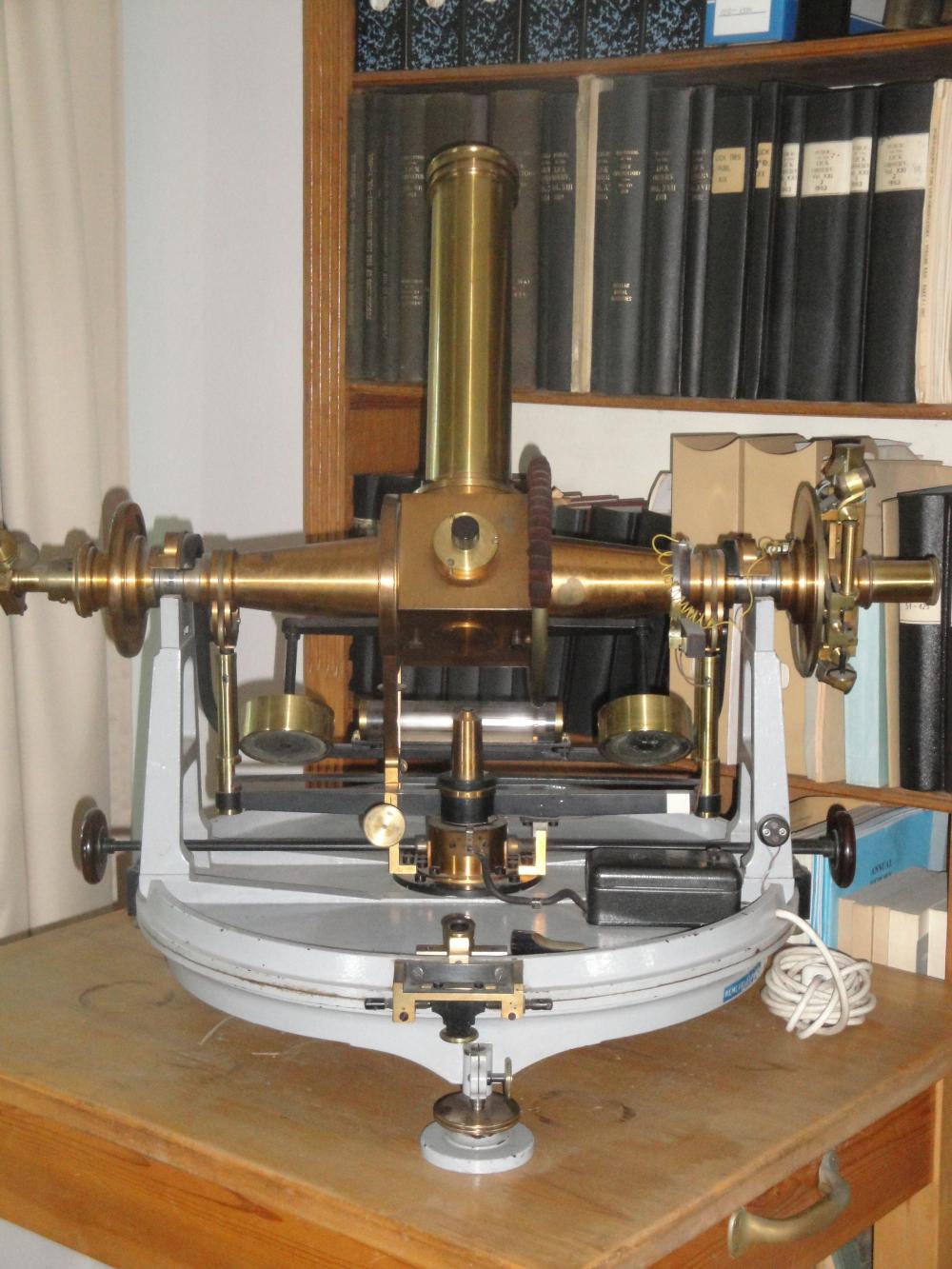
Fig. 8b. Transit instrument, made by Repsold & Söhne of Hamburg (Image courtesy: Remeis Observatory)
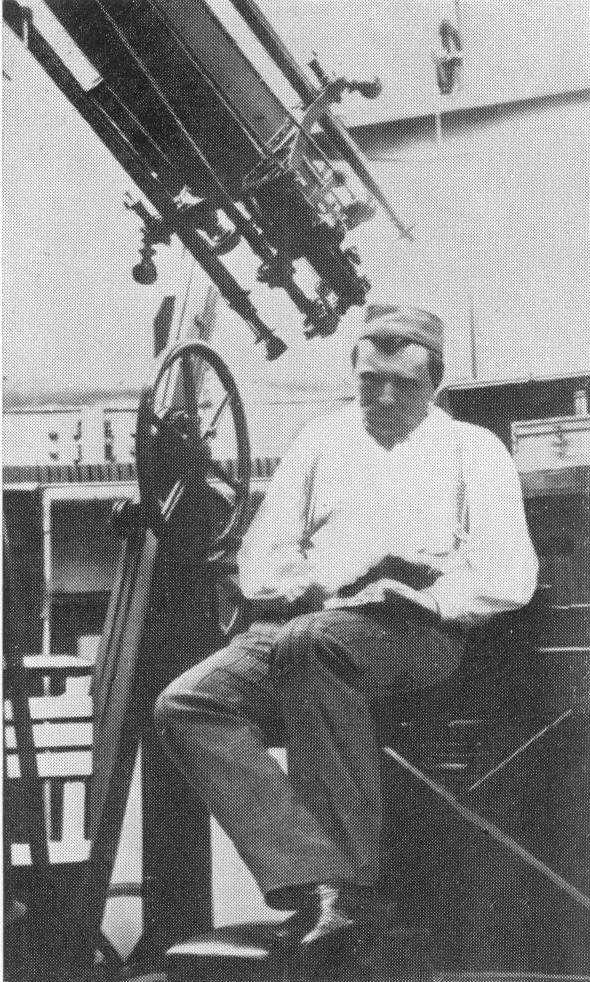
Fig. 8b. Hartwig observing with the Heliometer (Image courtesy: Remeis Observatory)
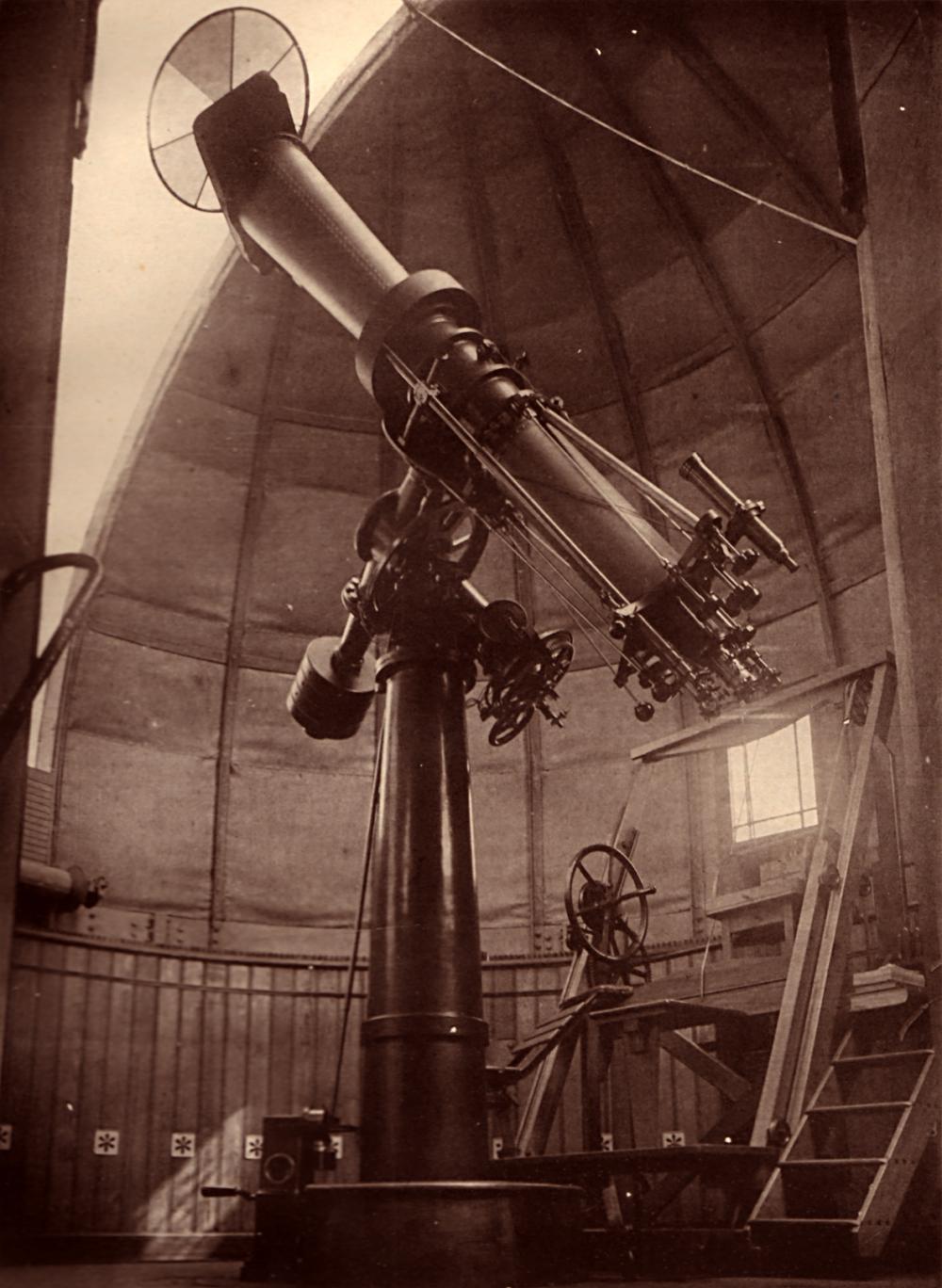
Fig. 8b. 18.4-cm-Heliometer, optics by Merz of Munich, mounting by Repsold of Hamburg (Image courtesy: Jürgen Kost)
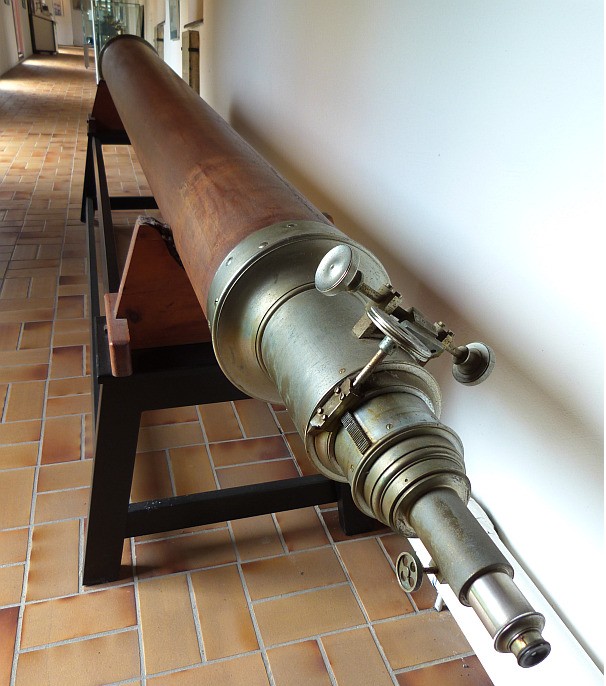
Fig. 8b. 26-cm-Schröder Refractor (Image courtesy: Remeis Observatory)
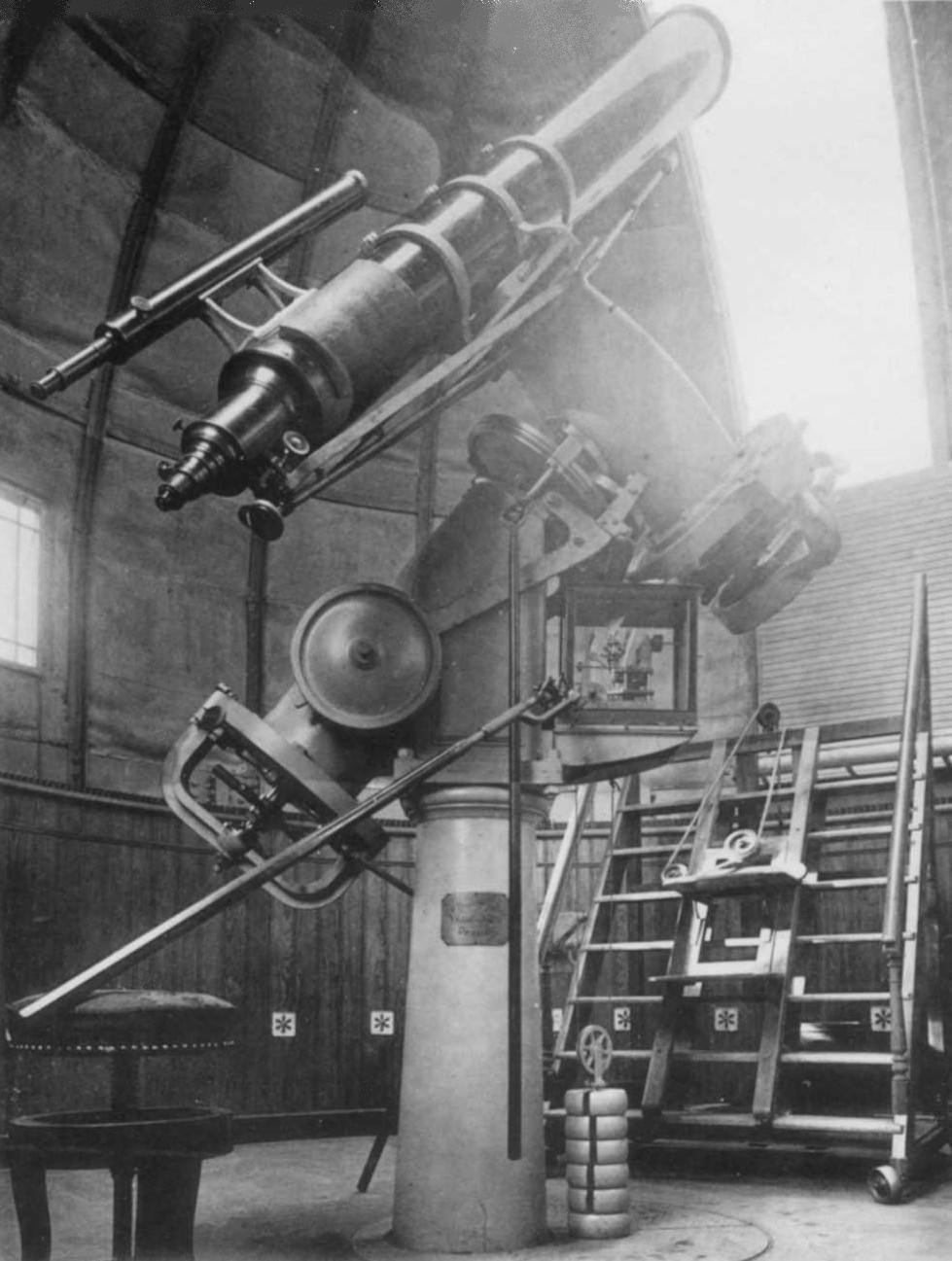
Fig. 8b. 26-cm-Schröder Refractor (Image courtesy: Remeis Observatory)
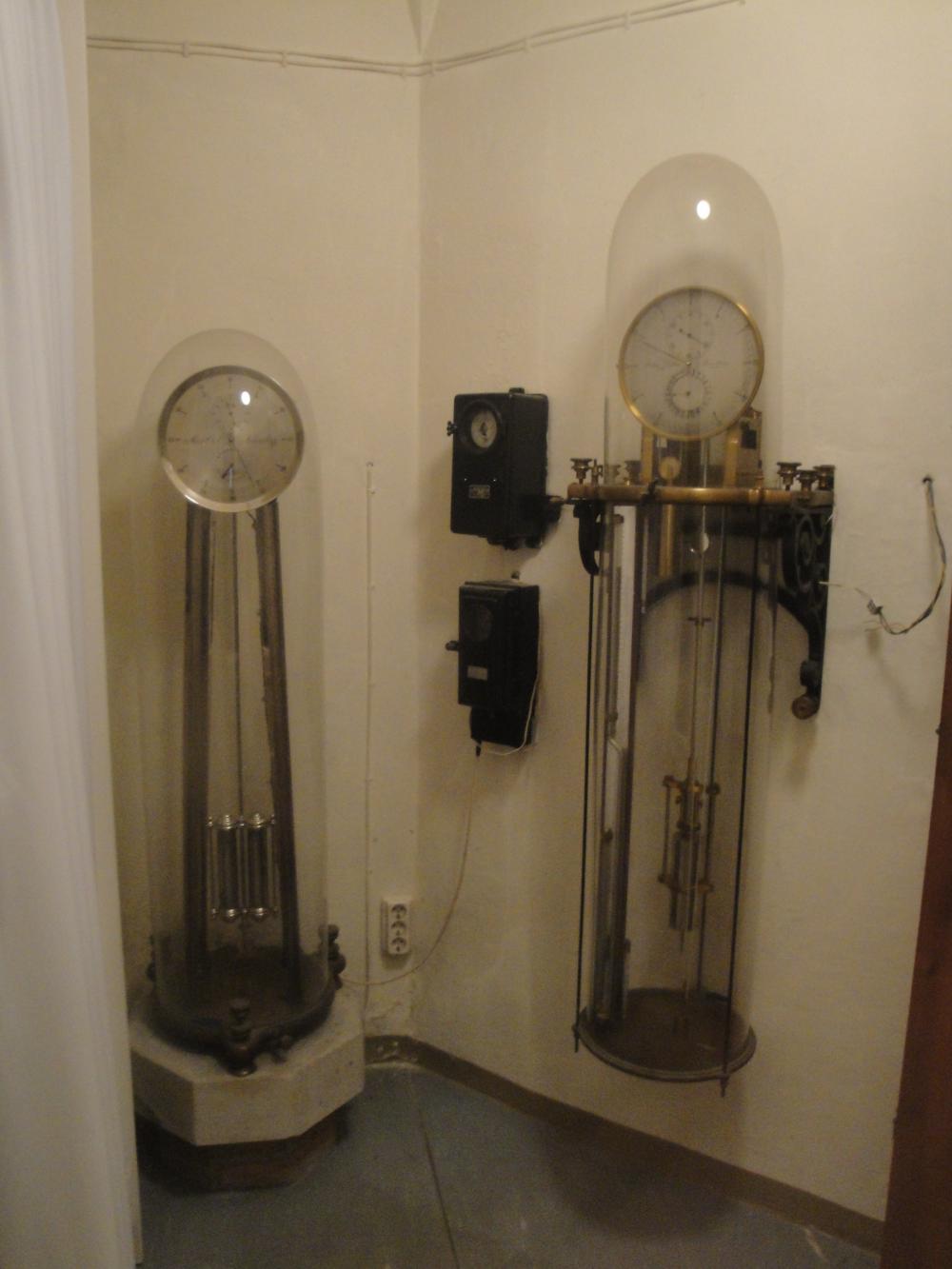
Fig. 8b. Pendulum clocks, Max Ort and Ziegler (Image courtesy: Remeis Observatory)
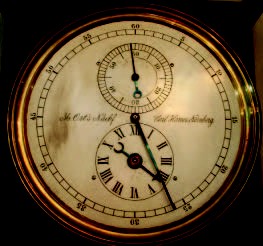
Fig. 8b. Pendulum clock, Max Ort (Image courtesy: Remeis Observatory)
Instruments of Remeis Observatory Bamberg
- Transit instrument (7cm, f=77cm) by Repsold of Hamburg, optics by Jakob Merz of Munich -- in the meridian hall.
It was used until the 1990s for hands-on training of students. - Sidereal Time - Pendulum Clock, made by Max Ort of Nuremberg
- Electric Chronograph by Hipp of Neuchâtel
- 6-inch- Comet finder (d=16.2cm, f=1.3m), G. & S. Merz of Munich,
mobile on rails with azimuthal chair mount, made by Repsold of Hamburg, used for observing bright variable stars.
- Heliometer (18,4cm, f=2,6m) -- in the Eastern dome,
optics by Merz of Munich, mounting by Repsold of Hamburg,
used for measuring stellar parallaxes in cooperation with David Gill (1843--1914) with the same instrument of the Cape Observatory -- both heliometers were the largest in the northern and southern hemisphere, respectively. It was used in Bamberg until 1946, and is today in the Deutsches Museum in Munich (Inv.Nr. 75214, 76545).
- 26-cm-Schröder Refractor, made by Hugo Schröder of Oberursel / Hamburg, in the Western dome, donated by Karl Remeis,
in 1894, the 4-cm-refractor of Remeis was mounted as a finder, used for the observation of faint variable stars.
- 10-cm-Heliograph, purchased in 1899 (used for the German Venus Expedition in 1874),
with an objective, made by Steinheil of Munich,
Heliostat, optics (objective and coelostat mirror) made by Steinheil of Munich, mounting by Linhof of Munich.
The instrument was used for the photographic recording of sunspots, mounted opposite to the comet finder.
In 1950, Zinner mentioned the impressive number of 1350 solar photos. - Plate measuring apparatus, made by R. Fuess
- Reflecting sextant, made by J. Wanschaff of Berlin (1906)
- Reflecting prism circle, made by Pistor & Martins of Berlin
- Reflecting prism circle, made by H. Haecke of Berlin (1918)
- Astrograph (1911), two photographic objectives 5-inch Hermagis-portrait objective and 5-inch Steinheil UV-objective, 13cm, f = 1.35m, 4 x 5, photographic plates 13.5crn x 13.5cm,
and a 4-inch Merz guiding telescope, 10cm) with a mounting by Eduard Nusser of Barnberg.
36-cm-Schmidt telescope (1954) -- similar to the first in Hamburg, made by Bernhard Schmidt (1879--1935),
the Bamberg Schmidt telescope consisted of a 44cm original mirror by Bernhard Schmidt of Hamburg (1930s), and a 36cm correction plate by Friedrich Ohlmüller of Berlin (1950s). It was mounted in the Western dome instead of the 26-cm-Schröder-Refractor.
The Bamberg Schmidt telescope is preserved in the astronomy exhibition, opened in 1992 in the Deutsches Museum in Munich (Inv.-Nr. 1990-920).
Iris diaphragm photometer according to Wilhelm Becker (1907--1997), made by Askania of Berlin (1960)
Measuring microscope by Leitz of Wetzlar (1964)
7° objective lens prism (1961)
Registrating microphotometer, Jarrell-Ash of Boston, Mass. (1970)
60-cm-reflecting telescope in the Eastern dome, made by Carl Zeiss of Jena (1939), acquired in 1946 from the Physics institute of the University Erlangen-Nürnberg
60-cm-Cassegrain reflecting telescope (1954), instead of the 60cm reflector (1939) -- This new 60cm reflector was transferred to Kirchheim in 2013.- 40-cm-reflecting telescope (1985), used before in South Africa -- mounted in the Western dome instead of the Schmidt telescope
- New 40-cm-reflecting telescope (2009)
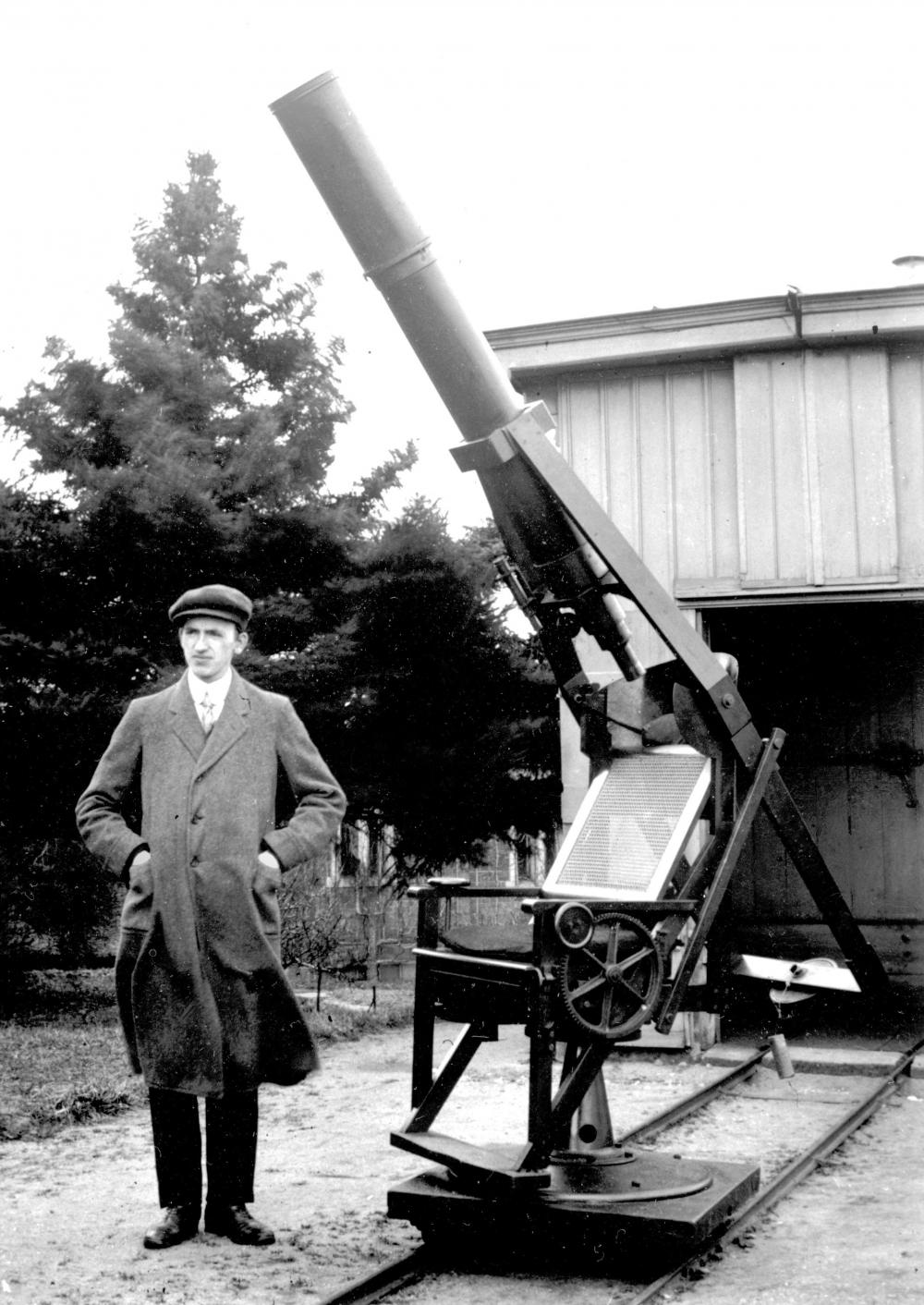
Fig. 9a. Cuno Hoffmeister with the Comet seeker (Image courtesy: Björn Kunzmann)
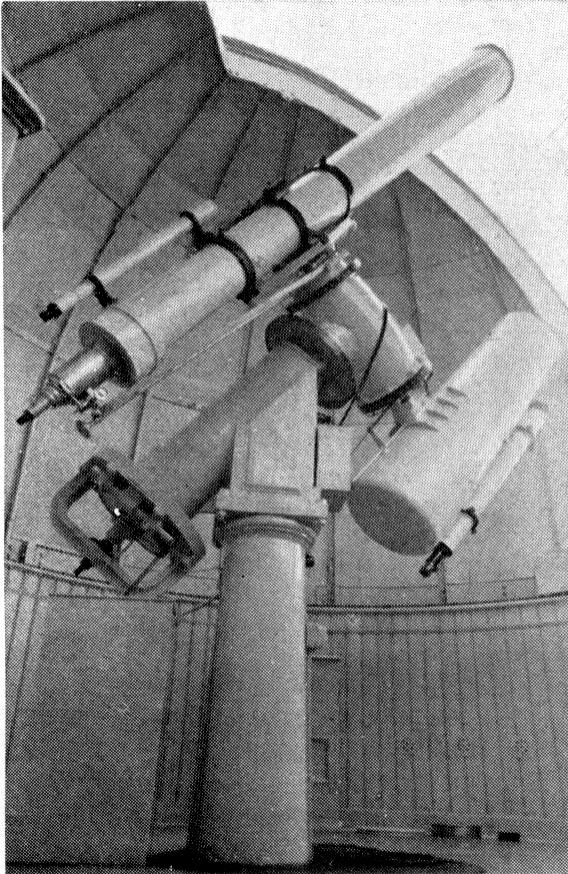
Fig. 9b. Schmidt telescope (Image courtesy: Remeis Observatory)
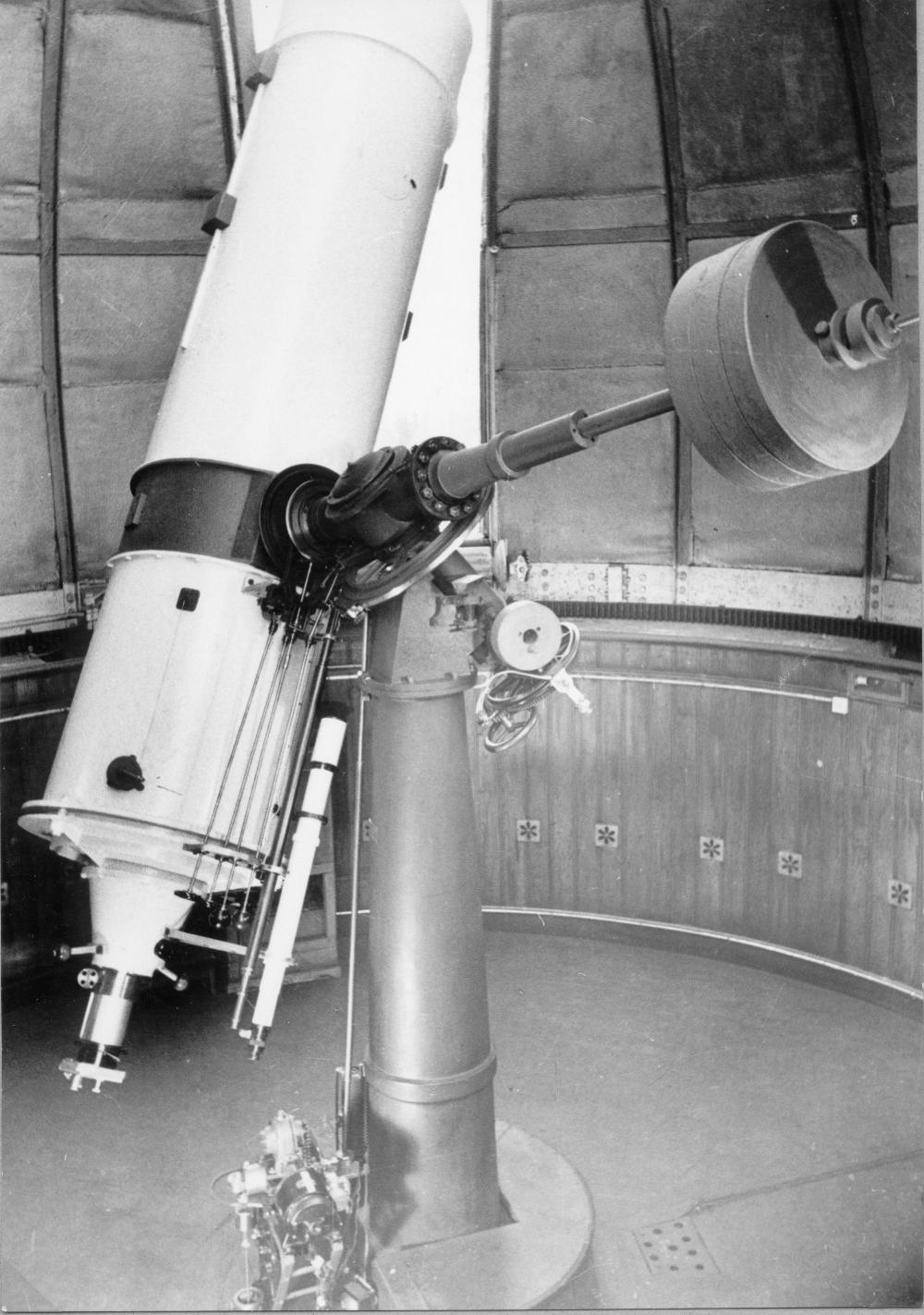
Fig. 9c. 60-cm-Reflecting telescope (1946) (Image courtesy: Remeis Observatory)
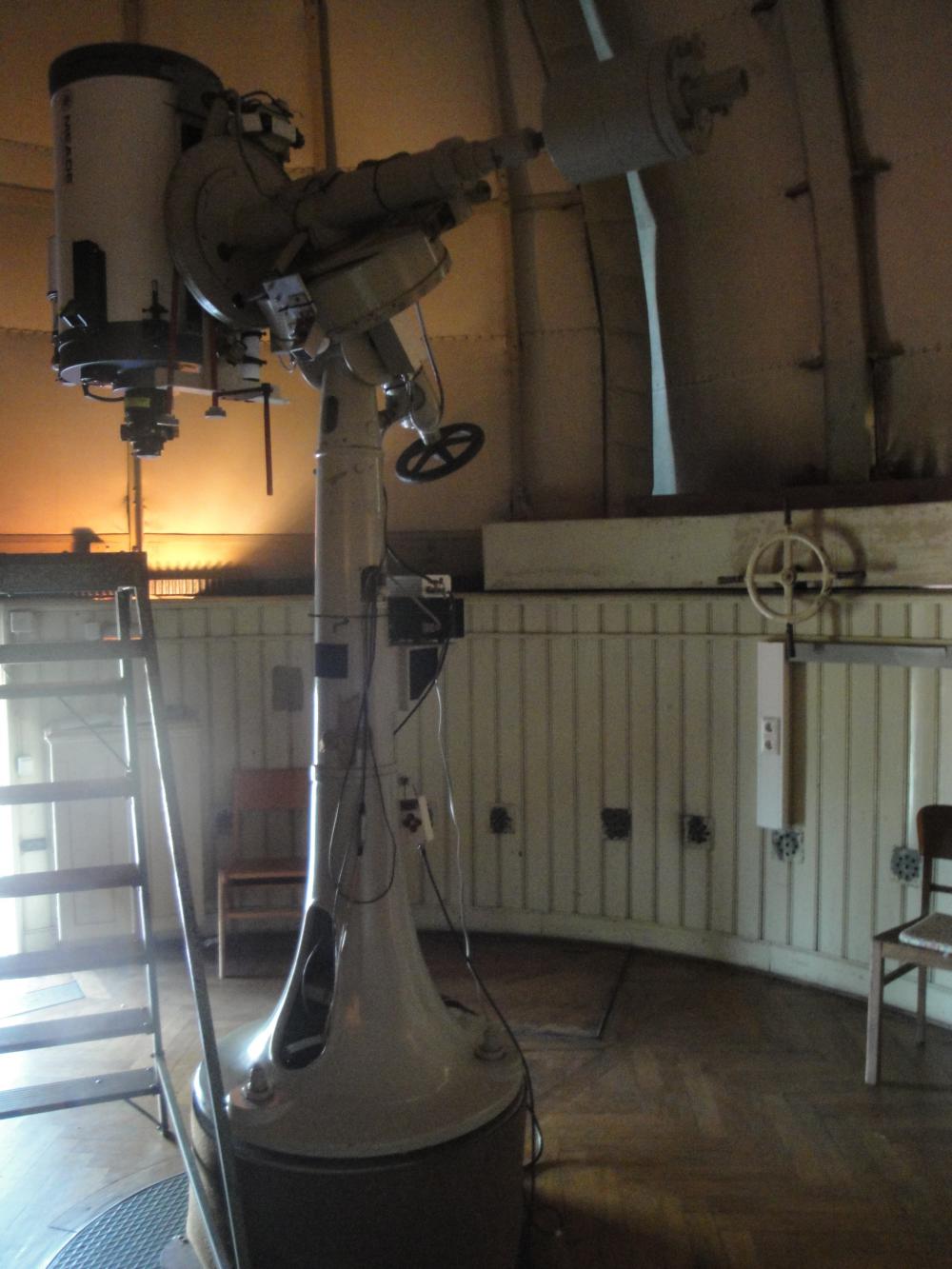
Fig. 9d. 40-cm-reflecting telescope (1985) (Image courtesy: Remeis Observatory)
Directors
- Ernst Hartwig (1851--1923), 1886/1898 to 1923
- Eduard Heise (1891--1965), the assistant was acting director from 1923 to 1926
- Ernst Zinner (1886--1970), 1926 to 1953
- Wolfgang Strohmeier (1913--2004), 1969 apl. professor, director 1954 to 1978.
In 1962, he succeeded to incorporate the Remeis Observatory as Astronomical Institute of the University Erlangen-Nürnberg.
- Irmela Bues, 1978 to 2005
and Jürgen Rahe (1939--1997), professor since 1971, director 1978 to 1985
Tibor Jozsef Herczeg (1926--2014), University of Oklahoma, and Vladimir Vanysek (1926--1997), Charles University Prague, acting directors from 1985 to 1990.
- Prof. Dr. Ulrich Heber (*1954), director since 1992
with Prof. Dr. Manami Sasaki and Prof. Dr. Jörn Wilms
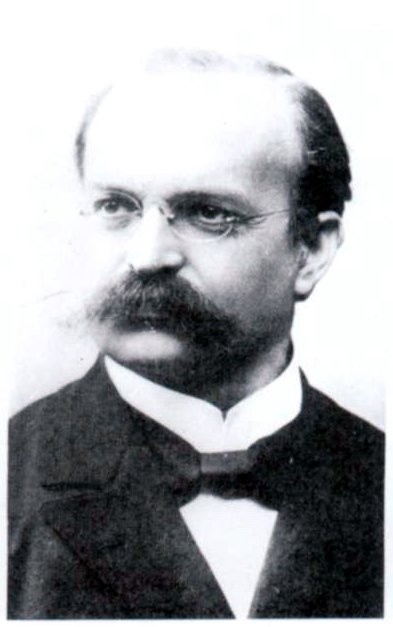
Fig. 10a. Ernst Hartwig (1851--1923) (Image courtesy: Remeis Observatory)
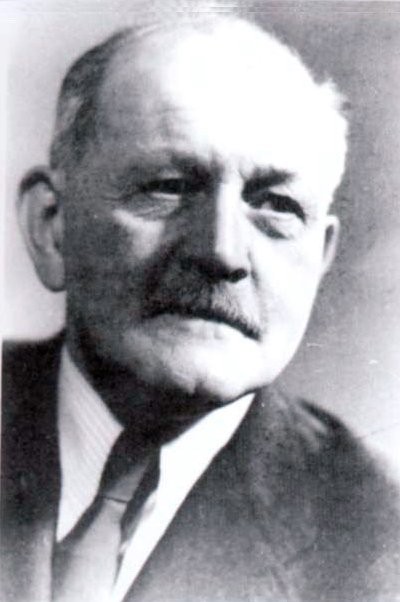
Fig. 10b. Ernst Zinner (1886--1970) (Image courtesy: Remeis Observatory)
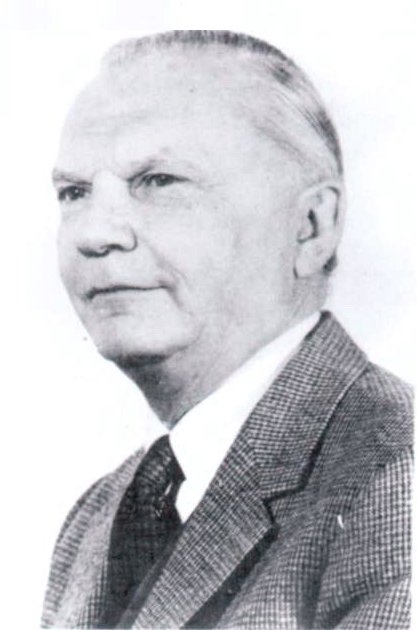
Fig. 10c. Wolfgang Strohmeier (1913--2004) (Image courtesy: Remeis Observatory)
State of preservation - InfoTheme: Astronomy from the Renaissance to the mid-twentieth century
Entity: 143
Subentity: 1
Version: 3
Status: PUB
Date: 2022-03-15 21:56:39
Author(s): Gudrun Wolfschmidt
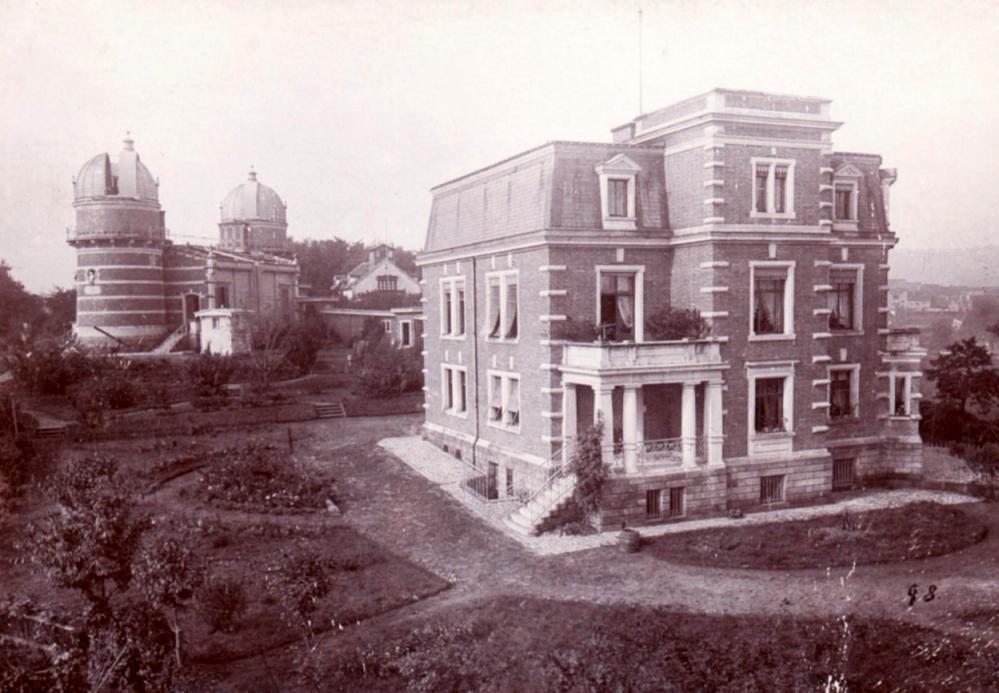
Fig. 11a. Villa and domes of Dr. Karl-Remeis Observatory (1889) (Image courtesy: Remeis Observatory)
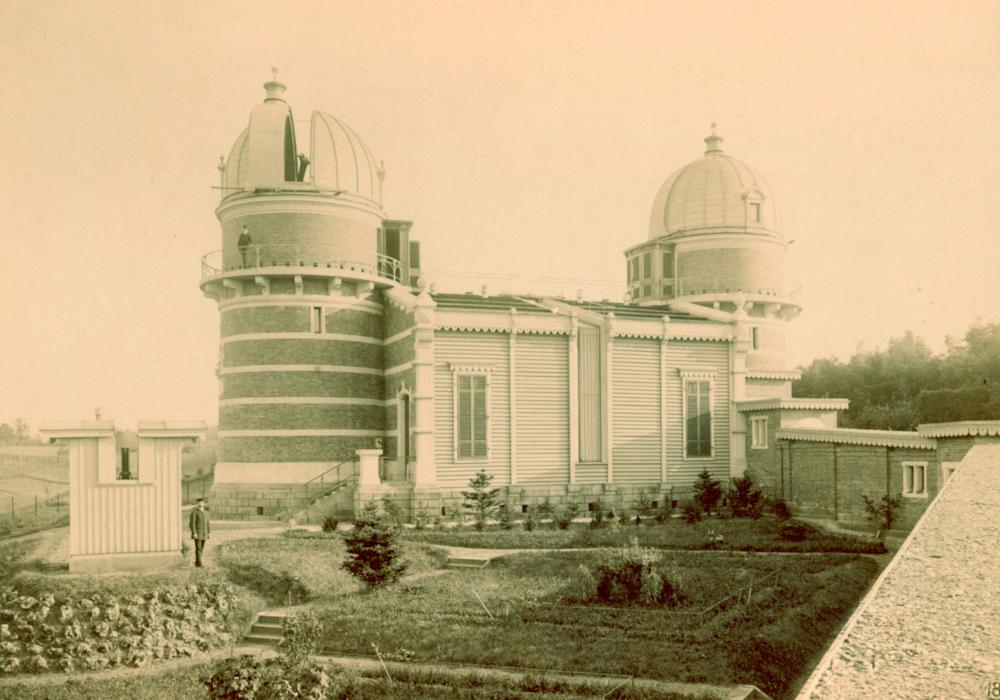
Fig. 11b. Dr. Karl-Remeis Observatory (1889) -- two towers and the meridian hall (Image courtesy: Remeis Observatory)
The building of Dr. Karl-Remeis Observatory, founded in 1889, is well restored. Only the meridian hall was later converted to a library, which has countless international journals, historically valuable publications from 263 observatories worldwide; in the upper floor were offices and flats for observers and students.

Fig. 11a. Wall painting in the villa of Dr. Karl-Remeis Observatory (1889) (Image courtesy: Remeis Observatory)
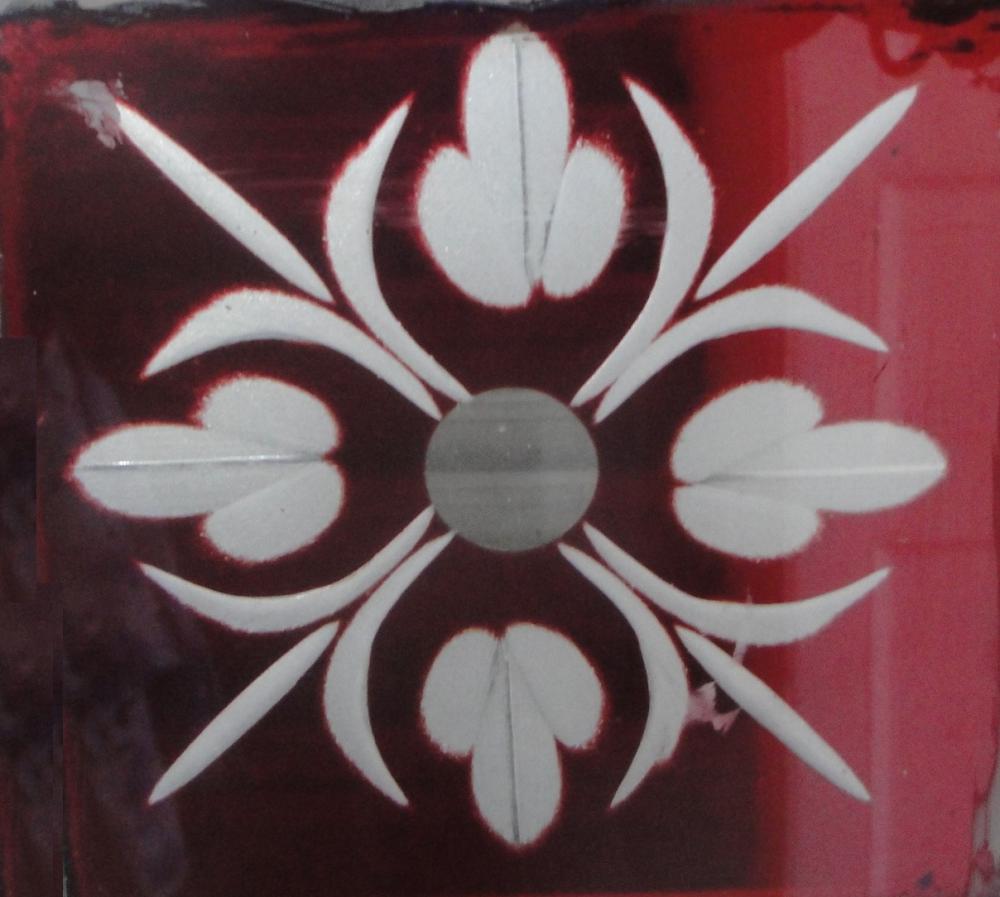
Fig. 11b. Dr. Karl-Remeis Observatory, glass decoration in the doors of the villa (Photo: Gudrun Wolfschmidt)
Comparison with related/similar sites - InfoTheme: Astronomy from the Renaissance to the mid-twentieth century
Entity: 143
Subentity: 1
Version: 3
Status: PUB
Date: 2022-05-25 19:05:19
Author(s): Gudrun Wolfschmidt
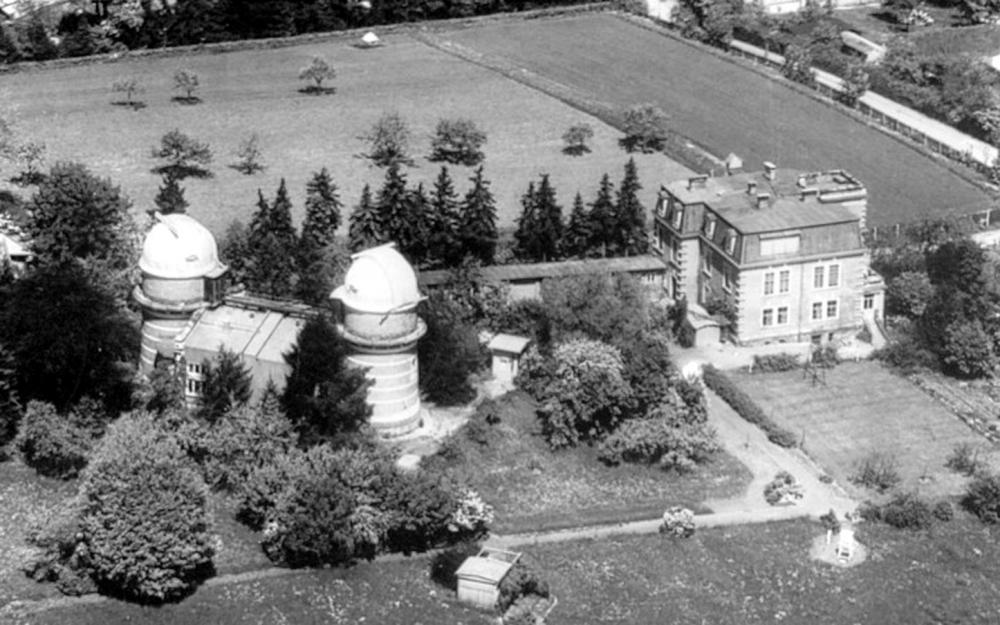
Fig. 12a. Dr. Karl-Remeis Observatory, aerial view (Image courtesy: Remeis Observatory)
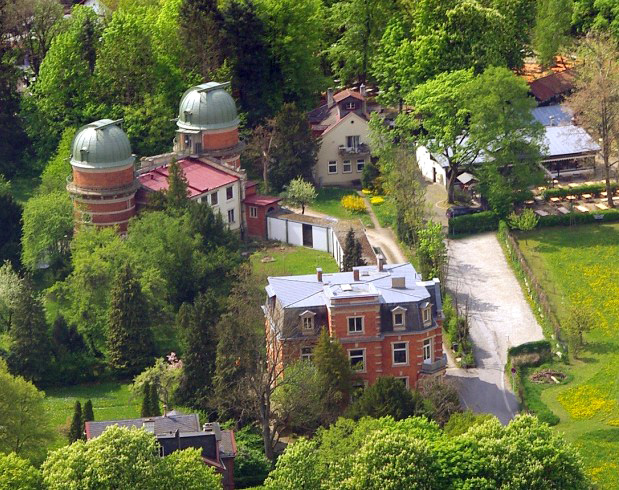
Fig. 12b. Dr. Karl-Remeis Observatory, aerial view with villa, custos building and the two towers with domes (Image courtesy: Friedrich-Alexander University Erlangen-Nürnberg)
The Remeis Observatory is a good example for an astronomy park with separated buildings in a parc, the villa and the - unheated - observation buildings.
Other examples are: Nice (1886), Strasbourg (not a real parc, one dome is still on the main building), La Plata, Argentina (1883), Uccle Observatory Brussels (1891), Heidelberg-Königstuhl (1898), EAO Kazan (1901), and Hamburg-Bergedorf (1906--1912) - the best example of this kind, it follows very strictly this park layout.
Threats or potential threats - InfoTheme: Astronomy from the Renaissance to the mid-twentieth century
Entity: 143
Subentity: 1
Version: 2
Status: PUB
Date: 2022-02-19 04:33:41
Author(s): Gudrun Wolfschmidt
no threats
Present use - InfoTheme: Astronomy from the Renaissance to the mid-twentieth century
Entity: 143
Subentity: 1
Version: 3
Status: PUB
Date: 2022-02-19 04:34:09
Author(s): Gudrun Wolfschmidt
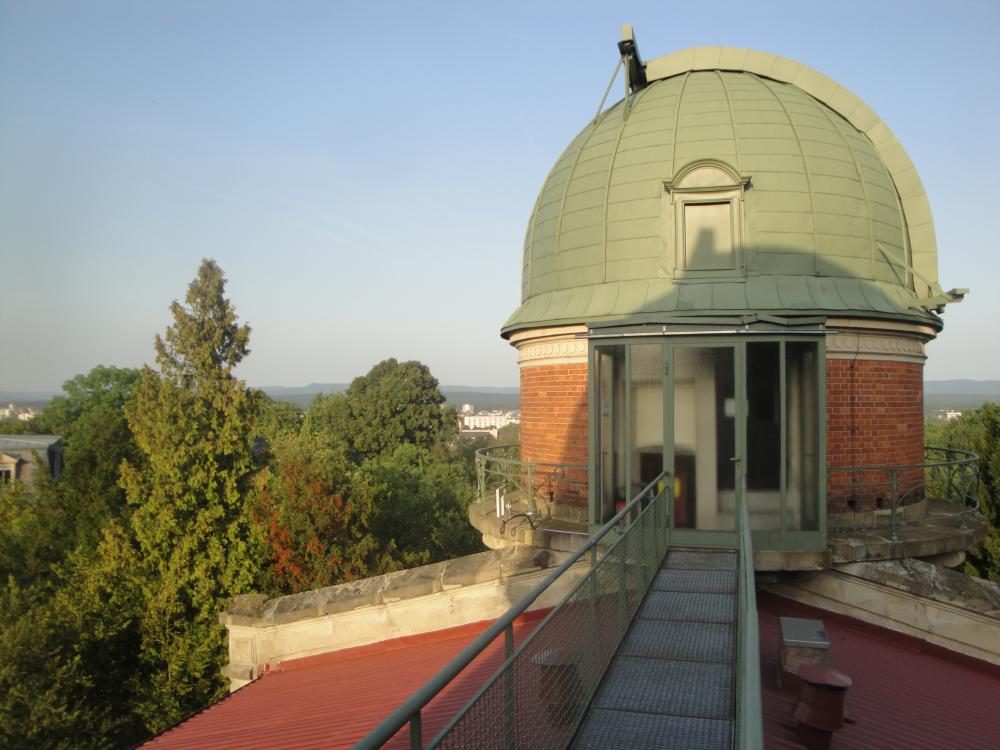
Fig. 13a. Gallery between the domes (Photo: Gudrun Wolfschmidt)
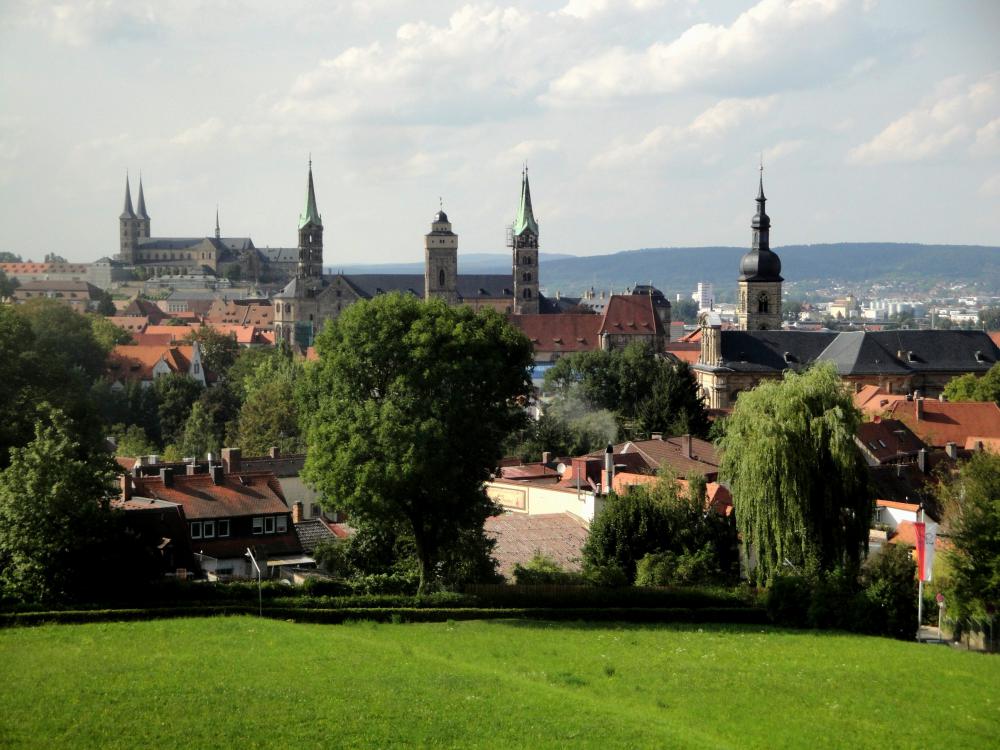
Fig. 13b. View from the Remeis Observatory at the towers of Bamberg (Photo: Gudrun Wolfschmidt)
The Remeis observatory was originally a public-local foundation and was only attached to the University of Erlangen-Nuremberg as an astronomical institute in 1962.
Astronomical relevance today - InfoTheme: Astronomy from the Renaissance to the mid-twentieth century
Entity: 143
Subentity: 1
Version: 2
Status: PUB
Date: 2022-02-19 04:35:42
Author(s): Gudrun Wolfschmidt
Research at Remeis-Observatory is done in three areas:
- Multiwavelength Astronomy,
- Stellar Astronomy, and
- X-ray Astronomy.
Since 2007 Remeis observatory has been part of the Erlangen Center for Astroparticle Physics (ECAP), in which the university has merged the research in the fields of neutrino physics, X-ray astronomy and space- and ground based gamma-ray astronomy.
References
Bibliography (books and published articles) - InfoTheme: Astronomy from the Renaissance to the mid-twentieth century
Entity: 143
Subentity: 1
Version: 6
Status: PUB
Date: 2022-03-15 22:23:46
Author(s): Gudrun Wolfschmidt
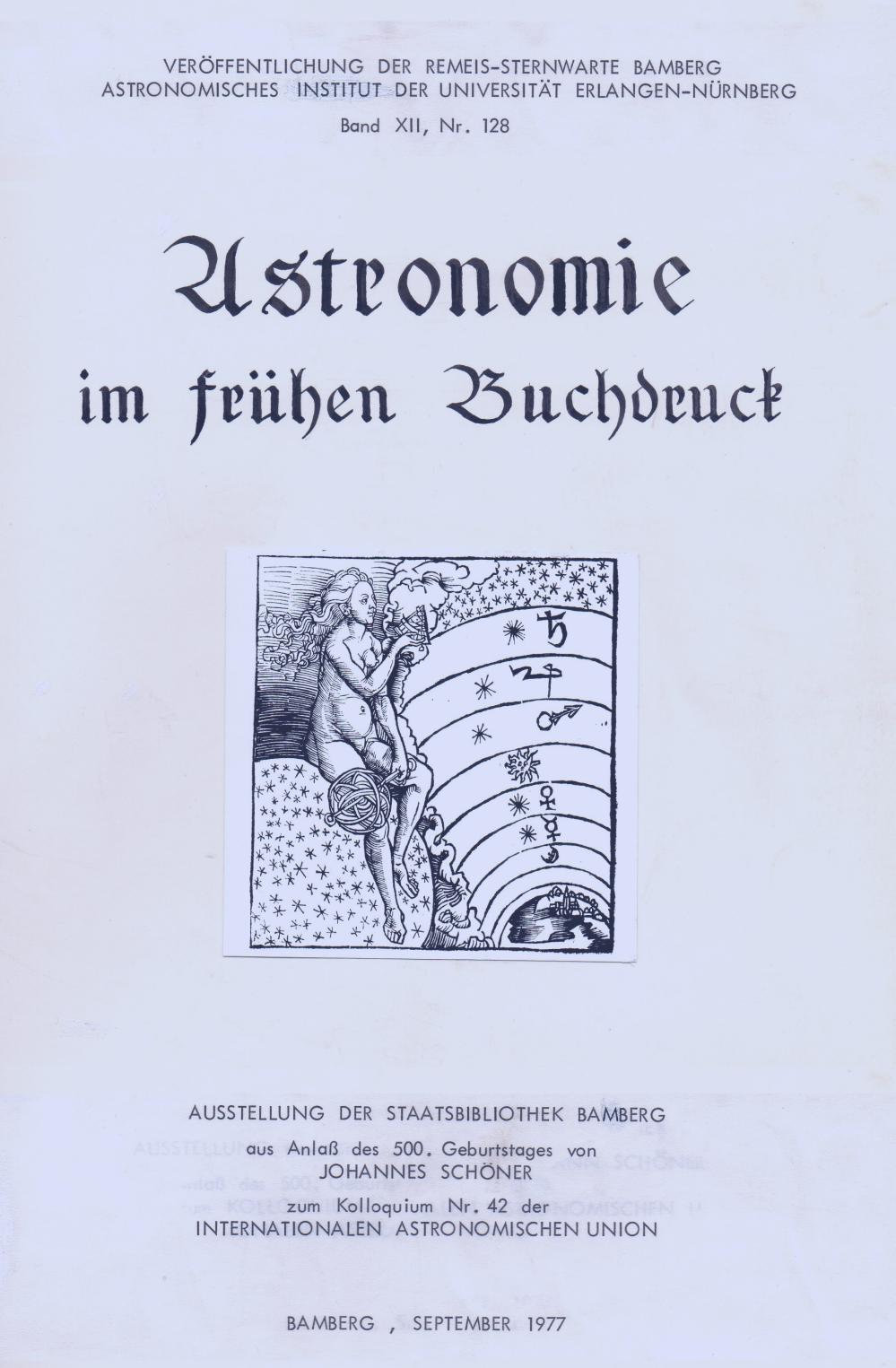
Fig. 14a. Wolfschmidt, Gudrun: Astronomie im frühen Buchdruck (1977)
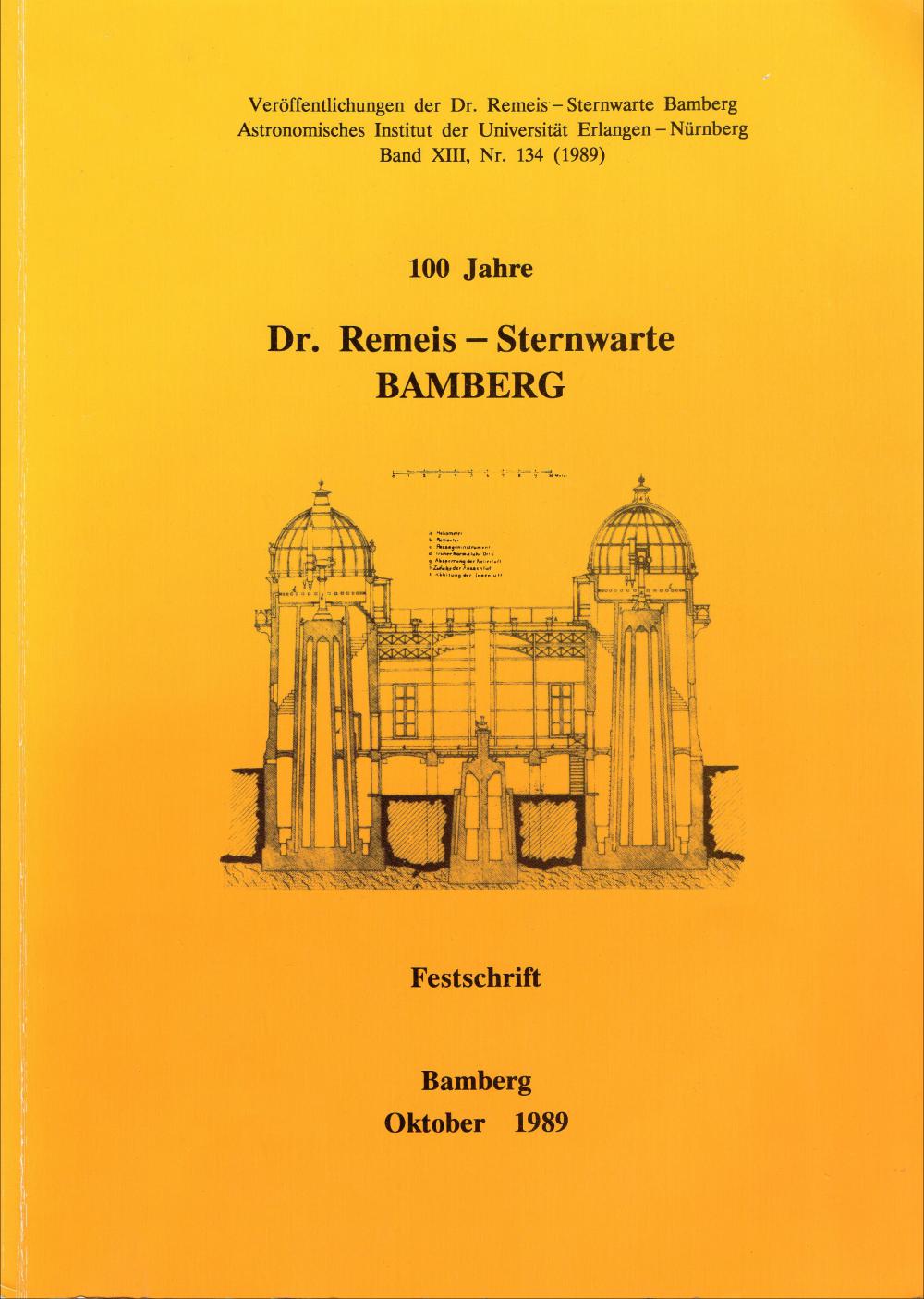
Fig. 14b. Bues & Wolfschmidt: 100 Jahre Dr. Remeis-Sternwarte Bamberg (1989)
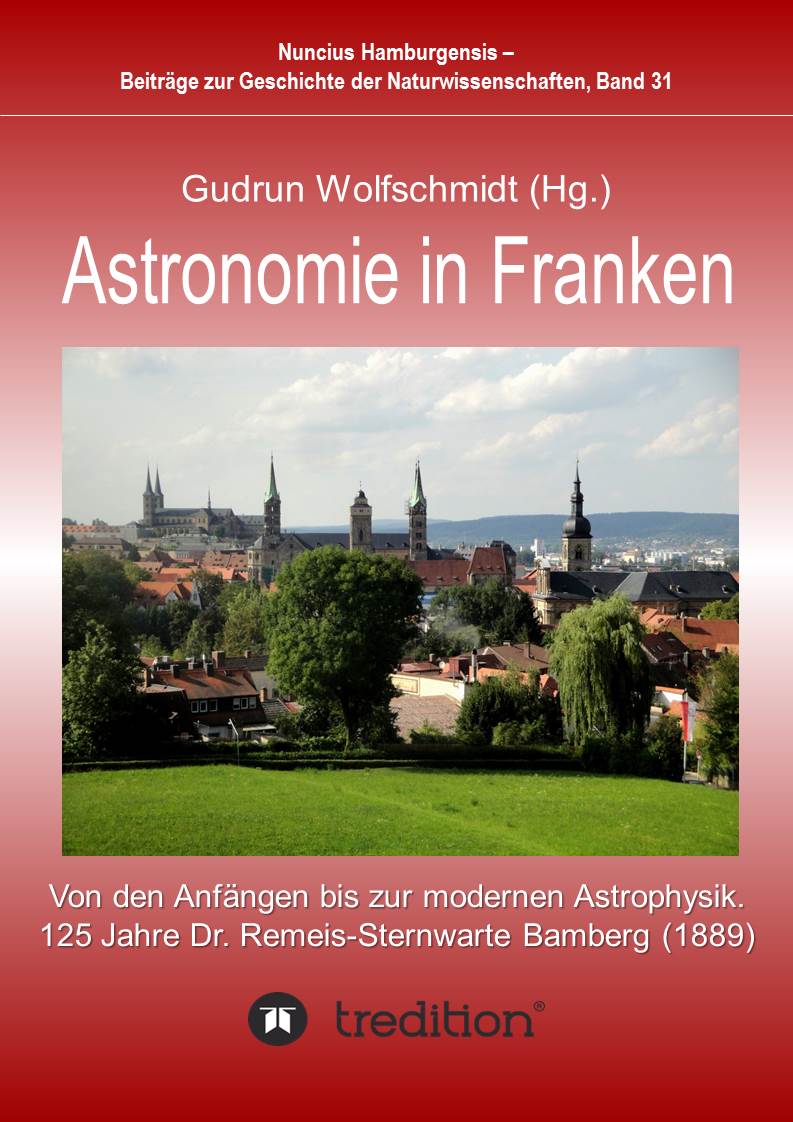
Fig. 14c. Wolfschmidt, Gudrun: Astronomy in Franconia -- From the Beginnings to Modern Astrophysics -- 125 Years of Dr. Karl Remeis Observatory Bamberg (1889). (2015)
- Baron, Edward A.: Tibor J. Herczeg (1926--2014) Obituary. In: Bulletin of the AAS 46 (2014), Issue 1.
- Bues, Irmela & Gudrun Wolfschmidt (Hg.): 100 Jahre Dr. Remeis-Sternwarte Bamberg. (Festschrift). Bamberg (Veröffentlichungen der Dr. Remeis-Sternwarte Bamberg, Astronomisches Institut der Universität Erlangen-Nürnberg, Band XIII, Nr. 134) 1989. (1989jrsb.conf.....B).
- Bues, Irmela: Wolfgang Strohmeier (1913--2004). In: Mitteilungen der Astronomischen Gesellschaft 87 (2004), p.13-14.
- Eggert, Hermann. Die Sternwarte in Bamberg. In: Zentralblatt der Bauverwaltung 7 (1887), p. 353-354. Schweizerische Bauzeitung 10 (1887), p. 80.
- Drechsel, Horst; Rahe, Jürgen; Wolfschmidt, Gudrun; Kondo, Yoji & George E. McCluskey: Observational Evidence for Mass Exchange in Close Binary Systems. (Wolfschmidt Vortrag am 7.9.1977 beim IAU-Kolloquium No. 42 in Bamberg, September 6-9, 1977). In: ’’The Interaction of Variable Stars with their Environment’’, Proceedings of the International Astronomical Union (IAU), Colloquium No. 42. Bamberg: Remeis-Sternwarte, edited by Rudolf Kippenhahn, Jürgen Rahe & Wolfgang Strohmeier. VB 11, Nr. 121 (1977), p. 371-382. (DOI: 10.1017/S0252921100069566, published online: 12 April 2016).
- Drechsel, Horst; Meyer, Pavel & Martin Šolc: Vladimir Vanysek (1926--1997) Obituary. In: Bulletin of the AAS 29 (1997), Issue 4.
- Edelmann, Heinz; Jansen, Norbert; Heber, Uli; Wilms, Jörn & Ingo Kreykenbohm: Digitalisierungsprojekt: Bamberger Photoplattenarchiv. In: Astronomie in Franken -- Von den Anfängen bis zur modernen Astrophysik. Ed. by Gudrun Wolfschmidt. Hamburg: tredition (Nuncius Hamburgensis; Band 31) 2015, p. 402-417.
- Graefe, Christina; Wilms, Jörn & Uli Heber: Ernst Hartwig (1851--1923). In: Astronomie in Franken -- Von den Anfängen bis zur modernen Astrophysik. Ed. by Gudrun Wolfschmidt. Hamburg: tredition (Nuncius Hamburgensis; Band 31) 2015, p. 368-389.
- Hartwig, Ernst: Ueber die Bamberger Sternwarte. In: Vierteljahrsschrift der Astronomischen Gesellschaft 22 (1887), p. 277 and 329-335.
- Hartwig, Ernst & Gustav Müller: Geschichte und Literatur des Lichtwechsels der bis Ende 1915 als sicher veränderlich anerkannten Sterne nebst einem Katalog der Elemente ihres Lichtwechsels, 3 Bände. Berlin 1918, 1920, 1922.
- Heise, Eduard: Hartwig, Ernst. In: Deutsches Bibliographisches Jahrbuch 1923, p. 154-157.
- Heise, Eduard: Die Bamberger Dr. Remeis-Sternwarte. In: Das Bayerland 38 (1927), p. 512-517.
- Hoffmeister. Cuno: Ernst Hartwig. In: Astronomische Nachrichten 219 (1923), p. 185.
- Hoffmeister. Cuno: Ernst Hartwig. In: Vierteljahrsschrift der Astronomischen Gesellschaft 59 (1924), p. 19-24.
- Hoffmeister. Cuno: Fünf Jahre photographische Überwachung des Himmels in Sonneberg. In: Astronomische Nachrichten 250 (1933), p. 397 f.
- Hudec, René: Bamberg Observatory Photographic Plate Archive in the context of European Research, Related Past and Recent Projects and Use in Modern Astrophysics. In: Astronomie in Franken -- Von den Anfängen bis zur modernen Astrophysik. Ed. by Gudrun Wolfschmidt. Hamburg: tredition (Nuncius Hamburgensis; Band 31) 2015, p. 390-401.
- Kunzmann, Björn: Bamberg und Sonneberg -- Zentren der Erforschung Veränderlicher Sterne, ihre Beziehungen und Zusammenarbeit. In: Astronomie in Franken -- Von den Anfängen bis zur modernen Astrophysik. Ed. by Gudrun Wolfschmidt. Hamburg: tredition (Nuncius Hamburgensis; Band 31) 2015, p. 418-439.
- Litten, Freddy: Astronomie in Bayern 1914--1945. (Dissertation Universität München 1990). Stuttgart: Steiner 1992, S. 3-42, 125-136.
- Müller, Gustav & Ernst Hartwig: Geschichte und Literatur des Lichtwechsels der bis Ende 1915 als sicher veränderlich anerkannten Sterne nebst einem Katalog der Elemente ihres Lichtwechsels (3 Bände). Berlin, Leipzig 1918, 1920, 1922.
- Newburn, R.L. Jr.: The International Halley Watch. In: Cometary Exploration, Vol. III. Ed. by T.I. Gombosi. Budapest: Central Research Institute for Physics, Hungarian Academy of Sciences 1983, p. 19-32.
- Remeis, Karl: Die Wiederaufnahme im Strafverfahren. Erlangen: Deichert, 1864.
- Sandig, H.U.: Der 60cm-Spiegel der Remeis-Sternwarte. In: Sternenwelt (1950), Heft 9.
- Schmögner, Mathias: SuW Besuch bei der Sternwarte Sonneberg. In: Sterne und Weltraum 29 (1990), p. 108-109.
- Strohmeier, Wolfgang: 70 Jahre Remeis- Sternwarte. Bamberg 1959, p. 1-17.
- Strohmeier, Wolfgang: Fünf Jahre Veränderlichen-Suche in Bamberg. In: Die Sterne 33 (1959), p. 227-228.
- Strohmeier, Wolfgang & Edward Geyer: Lichtelektrische Photometrie auf der Remeis- Sternwarte Bamberg. In: Kleine Veröffentlichungen der Remeis-Sternwarte Bamberg, Bd. II, Nr. 13, p. 1- 8.
- Strohmeier, Wolfgang: Die Dr.-Remeis-Sternwarte Bamberg. In: Sterne und Weltraum 6 (1967), p. 61- 63.
- Strohmeier, Wolfgang & Horst Mauder: Discovery and Study of Bright Variable Stars. In: Sky and Telescope 37 (1969), p. 10-12.
- Strohmeier, Wolfgang: Die Dr. Remeis-Sternwarte in Bamberg und die Veränderlichen Sterne als Objekte ihrer Forschung. Bamberg 1972.
- Thorbecke, Franz: Dr. Karl Remeis. der Stifter einer grossen Sternwarte in Bamberg. In: Sirius NP Bd. 10 (1882), p. 149-152, here 152.
- Thorbecke, Franz: Die Remeis -- Sternwarte zu Bamberg. In: Sirius 23 (1890), p. 57-66 and p. 82-84.
- Thorbecke, F.H.: 100 Jahre Bestehen und Wirken der Naturforschenden Gesellschaft in Bamberg (1834--1934). Bamberg (27. Bericht der Naturforschenden Gesellschaft) 1934.
- Wanderka, Dieter: Der Schröder’sche Refraktor der Remeis-Sternwarte in Bamberg. In: Astronomie in Franken -- Von den Anfängen bis zur modernen Astrophysik. Ed. by Gudrun Wolfschmidt. Hamburg: tredition (Nuncius Hamburgensis; Band 31) 2015, p. 346-367.
- Wartenberg. Dietrich: Ernst Zinner. In: Astronomische Nachrichten 293 (1971), p. 79-80.
- Wolfschmidt, Gudrun: Astronomie in Bamberg - 100 Jahre Remeis-Sternwarte. Bamberg (LXIV. Bericht der Naturforschenden Gesellschaft Bamberg) 1990, p. 61-78.
- Wolfschmidt, Gudrun: Astronomie im frühen Buchdruck. Katalog zur Ausstellung der Staatsbibliothek in Bamberg vom 1. Sept. bis 1. Okt. 1977. Bamberg (Veröffentlichung der Dr. Remeis-Sternwarte, Band XII) 1977, Nr. 128, p. 1-96.
- Wolfschmidt, Gudrun: Astronomische Werke in der Schloßbibliothek Pommersfelden. In: Bues, Irmela & Gudrun Wolfschmidt (Hg.): 100 Jahre Dr. Remeis-Sternwarte Bamberg. (Festschrift). Bamberg (Veröffentlichungen der Dr. Remeis-Sternwarte Bamberg, Astronomisches Institut der Universität Erlangen-Nürnberg, Band XIII) 1989, Nr. 134, p. 34-102.
- Wolfschmidt, Gudrun: Development of the Bamberg Observatory. From Private Donation to University Observatory. In: Klare, G. (Hg.): Astronomische Gesellschaft Abstract Series No. 6, 1991. Hamburg 1991, S. 124.
- Wolfschmidt, Gudrun: Karl Remeis (1837--1882) und die Stiftung der Bamberger Sternwarte. In: Wolfschmidt, Gudrun (Hg.): Astronomisches Mäzenatentum. Astronomical Patronage. Proceedings der Tagung an der Kuffner-Sternwarte in Wien, ,,Astronomisches Mäzenatentum in Europa’’, 7.-9. Oktober 2004. Norderstedt: Books on Demand (Nuncius Hamburgensis - Beiträge zur Geschichte der Naturwissenschaften; Band 11) 2008, p. 154-191.
- Wolfschmidt, Gudrun: Bernhard Schmidt and the Schmidt Telescope for Mapping the Sky. In: Expanding the Universe. Proceedings of the International Scientific Conference celebrating 200th anniversary of opening the Old Tartu Observatory, April 27-29, 2011 Tartu, Estonia. Ed by Chris Sterken, Laurits Leedjärv and Elmo Tempel. Baltic Astronomy 20 (2011), p. 111-119.
- Wolfschmidt, Gudrun (Hg.): Booklet of Abstracts: Astronomie in Franken Simon Marius und seine Zeit Von den Anfängen bis zur modernen Astrophysik -- 125 Jahre Dr. Remeis-Sternwarte Bamberg (1889). Colloquium of the Working Group History of Astronomy in the Astronomical Society, Nürnberg, 20. September 2014, Bamberg, 21.--22. September 2014. Hamburg: GNT 2014 (84 Seiten).
- Wolfschmidt, Gudrun: Bamberg -- Astronomie- und Kulturgeschichte. In: Astronomie in Franken -- Von den Anfängen bis zur modernen Astrophysik. Ed. by Gudrun Wolfschmidt. Hamburg: tredition (Nuncius Hamburgensis; Band 31) 2015, p. 20-57.
- Wolfschmidt, Gudrun: Die Bamberger Sternwarte im Kontext der Observatorien um 1900 am Übergang von klassischer Astronomie zu moderner Astrophysik. In: Astronomie in Franken -- Von den Anfängen bis zur modernen Astrophysik. Ed. by Gudrun Wolfschmidt. Hamburg: tredition (Nuncius Hamburgensis; Band 31) 2015, p. 272-307.
- Wolfschmidt, Gudrun: Das Bamberger Schmidtteleskop. In: Astronomie in Franken -- Von den Anfängen bis zur modernen Astrophysik. Ed. by Gudrun Wolfschmidt. Hamburg: tredition (Nuncius Hamburgensis; Band 31) 2015, p. 440-445.
- Wolfschmidt, Gudrun (ed.): Astronomie in Franken -- Von den Anfängen bis zur modernen Astrophysik -- 125 Jahre Dr. Karl Remeis-Sternwarte Bamberg (1889). Astronomy in Franconia -- From the Beginnings to Modern Astrophysics -- 125 Years of Dr. Karl Remeis Observatory Bamberg (1889). Proceedings der Tagung des Arbeitskreises Astronomiegeschichte in der Astronomischen Gesellschaft 2014. Hamburg: tredition (Nuncius Hamburgensis -- Beiträge zur Geschichte der Naturwissenschaften; Band 31) 2015.
- Zinner, Ernst: Die Remeis-Sternwarte zu Bamberg 1889--1939. Bamberg (Veröffentlichungen der Remeis-Sternwarte zu Bamberg, Band IV) 1939, p. 1-95, here p. 49.
- Zinner, Ernst: Die Remeis-Sternwarte zu Bamberg in den Jahren 1940-49. Bamberg (32. Bericht der Naturforschenden Gesellschaft) 1950, p. 1-12.
- Zinner, Ernst: Die Remeis-Sternwarte von 1889--1953. Bamberg (34. Bericht der Naturforschenden Gesellschaft) 1954, p. 1-8.
Links to external sites - InfoTheme: Astronomy from the Renaissance to the mid-twentieth century
Entity: 143
Subentity: 1
Version: 3
Status: PUB
Date: 2022-02-19 04:38:05
Author(s): Gudrun Wolfschmidt
- Dr. Karl Remeis-Observatory, Astronomical Institute of the University of Erlangen-Nuremberg
- Wiki of the Dr. Karl Remeis Observatory
- Plate Archive:
Northern Sky Patrol (1926 to 1939 to 1963) monitoring in Bamberg
Southern Sky Patrol (1963 to 1976) -- Boyden Observatory (South Africa), Mount John (New Zeeland), and San Miguel Observatory (Argentina).
- Online Archive APPLAUSE - Project "Digitalisierung astronomischer Fotoplatten und ihre Integration in das internationale Virtual Observatory", funded by the DFG.
- Collections of scientific instruments of Remeis Observatory Bamberg, University of Erlangen Nürnberg, Prof. Ulrich Heber
Links to external on-line pictures - InfoTheme: Astronomy from the Renaissance to the mid-twentieth century
Entity: 143
Subentity: 1
Version: 1
Status: PUB
Date: 2018-08-17 11:55:41
Author(s): Gudrun Wolfschmidt
no information available
PrintPrint contents of 'Description' tab
(opens in a new window) Theme
Astronomy from the Renaissance to the mid-twentieth century
Case Study Navigation
- InfoTheme: Astronomy from the Renaissance to the mid-twentieth century
Entity: 143
Subentity: 1
Version: 4
Status: PUB
Date: 2022-02-07 20:04:47
Author(s): Gudrun Wolfschmidt
Dr. Karl-Remeis Observatory (Astronomical Institute of the University of Erlangen-Nürnberg),
Sternwartstr. 7, D-96049 Bamberg, Germany
Location - InfoTheme: Astronomy from the Renaissance to the mid-twentieth century
Entity: 143
Subentity: 1
Version: 3
Status: PUB
Date: 2022-02-07 20:02:10
Author(s): Gudrun Wolfschmidt
Latitude 48°53’05’’ N, Longitude 10°53’17’’ E, Elevation 290m above mean sea level.
IAU observatory code - InfoTheme: Astronomy from the Renaissance to the mid-twentieth century
Entity: 143
Subentity: 1
Version: 2
Status: PUB
Date: 2019-06-17 12:41:10
Author(s): Gudrun Wolfschmidt
521
Description of (scientific/cultural/natural) heritage - InfoTheme: Astronomy from the Renaissance to the mid-twentieth century
Entity: 143
Subentity: 1
Version: 11
Status: PUB
Date: 2022-03-15 22:37:28
Author(s): Gudrun Wolfschmidt

Fig. 1. Domes of Dr. Karl-Remeis Observatory (1889), (Photo: Gudrun Wolfschmidt, 2011)

Fig. 2a. Dr. Karl-Remeis Observatory (1889) with the meridian hall between the towers, (Image courtesy: Remeis Observatory)
Founded in 1889, the Dr. Karl Remeis Observatory was built on one of Bamberg’s seven hills, the Stephansberg, at an altitude of 288m on the border of the town. The architect of this nice ensemble in historistic style was Georg Hofbauer of Bamberg according to plans by the architect Max Ißleiber, successor and employee of Hermann Eggen (1844--1920), who had already built the "German model observatory" in Strasbourg. The ceremonial opening of the Remeis Observatory took place on 24 October 1889.
The main building, a typical villa of the Wilhelminian period, built as a brick building with sandstone frames, had offices, the library and the custos’s flat on the ground floor. In the basement were the workshop and laboratory, on the first floor the director’s apartment (until 1978), the assistant’s flat on the second floor, and on the roof a platform for meteorological observations.

Fig. 2b. Dr. Karl-Remeis Observatory (1889) -- two towers with strong fundaments, and the meridian hall (Image courtesy: Remeis Observatory)

Fig. 2c. Meridian hall of Dr. Karl-Remeis Observatory (1889) with a transit instrument and portable telescopes (Image courtesy: Remeis Observatory)
A covered corridor provides the connection to the unheated observation building. Two towers (12m high with a dome of 6m diameter) are arranged in east-west direction with a meridian hall between them. The iron construction covered with corrugated metal leads to a rapid temperature equalisation due to its good thermal conductivity. The instruments in the tower are based on strong fundaments - without any vibrations, which was also realised in Strasbourg, but this was by no means a standard at that time.
Foundation of a research observatory
The funds of 400,000 Mark came from the Bamberg lawyer (PhD, University of Erlangen, faculty of law, 1863) and amateur astronomer Dr. Karl Remeis (1837--1882), who left his fortune for the construction of the observatory, because he had no heirs. Remeis had erected a private observatory in his villa on Michelsberg. In 1879, he replaced his 3-inch telescope (7.2cm, f = 80cm), made by Fraunhofer of Munich with a 4-inch refractor (10.8cm, f= 1.4m) from Reinfelder & Hertel of Munich. In addition, he owned a 3-inch comet finder (7.8cm) by Merz of Munich, two universal instruments from Ertel of Munich and August Becker of Göttingen, and various smaller instruments. Finally, in 1881, he succeeded in acquiring a large 10-inch refractor (26.4cm, f = 3.9m, 1:14, wooden tube) from Dr. Hugo Schröder of Oberursel.
Remeis’ will of September 24, 1879, provided a total of 400,000 Mark: 180,000 Mark for the construction of the observatory, 70,000 Mark for the instrumentation, 80,000 Mark capital, from the interest the astronomer has to be paid -- this amount was underestimated, as it turned out later. Even though the foundation was not met with enthusiasm by the citizens of Bamberg and the magistrate, it was accepted in 1883.

Fig. 3. Dr. Karl-Remeis (1837--1882), (Image courtesy: Remeis observatory)

Fig. 3. Bust of Dr. Karl-Remeis (1837--1882), (Photo: Gudrun Wolfschmidt)
Thanks to the generous endowment of an observatory, the name Remeis has survived to this day:
"The main part of my fortune should be used to set up an observatory in Bamberg. I am convinced that the best use of material goods is to support and promote scientific research, which elevates and ennobles people spiritually ... Astronomy ... is the science which helps man to an appropriate sense of self and his position in the universe, and at the same time enables him to find the eternal laws of the cosmos, to reflect on the idea of creation, and to feel a divine spark."
("Mein Vemögen soll seinem Hauptbestandteile nach zur Errichtung einer Sternwarte in Bamberg verwendet werden. Ich bin überzeugt, dass die beste Verwendung der materiellen Güter darin besteht, die wissenschaftliche Forschung, welche den Menschen geistig erhebt und veredelt, zu unterstützen und zu fördem .... Die Astronomie ... ist die Wissenschaft, welche dem Menschen zur richtigen Erkenntnis seiner selbst und seiner Stellung im Universum verhilft und zugleich aber auch ihn in die Lage versetzt, die ewigen Gesetze des Alls zu finden, dem Schöpfungsgedanken nachzudenken und in sich selbst einen göttlichen Funken zu fühlen.")
An observatory that goes back to a foundation was something unique in Germany, in contrast to the USA: there was only one state observatory (Naval Observatory, Washington, D.C.), all other large observatories were financed by foundations.

Fig. 4. Layout of Remeis Observatory (1889), 1:600 (Image courtesy: Remeis observatory)
The modern layout of Remeis Observatory was inspired by Strasbourg Observatory: The living quarters and offices are strictly separated from the observation buildings, the two domes and the meridian circle building -- laid out in west-east direction. The buildings are connected by a covered corridor.
After visiting 40 observatories, the first director Ernst Hartwig (1851--1923) planned the instrumentation of the Remeis Observatory. The main instrument was initially a heliometer -- the largest in the northern hemisphere -- in the Eastern dome, since 1946 it was replaced by a 60-cm-reflecting telescope. The Meridian Hall did not get a meridian circle for lack of money, but only a 3-inch transit instrument. In the Western dome was the 26-cm-Schröder refractor of Remeis, replaced by a Schmidt telescope.
From classical astronomy to modern astrophysics
At the end of the 19th century, the observation buildings were strictly separated from the office and residential buildings. This separation of functions only partially succeeded in the Strasbourg Observatory (1874), then in a mature form with the Observatorio de La Plata (1883/86), Argentina, and with the Nice Observatory (1888) -- the astronomy park was invented. The Bamberg (1889) and Hamburg observatories (1906--1912) as well as the American observatories on Mt. Wilson and Mt. Palomar also followed this modern idea of the layout of an observatory.
At the same time the emphasis of research is changing "From classical astronomy to modern astrophysics": This is associated with a change of the instrumentation: from meridian circle, refractor (equatorial), heliometer, comet finder to new astrophysical instruments such as astrographs, portrait lenses, reflecting telescopes, Schmidt telescopes, and various astrophysical laboratory instruments. Astrographs are instruments for determining star positions, i.e. for classic astronomical tasks, carried out using modern photographic methods. There are coordinate and spectra measuring devices as well as blink comparators for analysing the photographic plates.
The main activities of Remeis Observatory were not in classical astronomy but especially in the field of astrophysics. For more than 70 years, the observation of variable stars and the systematic sky survey of the northern hemisphere, in cooperation with the observatories in Babelsberg and Sonneberg, was the emphasis of research.

Fig. 5a. Nusser Astrograph (1911) (Image courtesy: Remeis observatory)

Fig. 5b. Heliograph Plate measuring machine, Fuess, Berlin (1899) (Image courtesy: Remeis observatory)

Fig. 5c. Zeiss Blinkcomparator (Image courtesy: Remeis observatory)
Already the first director Ernst Hartwig started with variable stars in 1891; they have been systematically examined for periods and type classification of the light curves, initially mainly variable stars of Algol type, but since 1897 also ß Lyrae type, and irregular variable stars like SS Cygni (today it is regarded as a cataclysmic variable -- a Close Binary System with the a red dwarf-type star, cooler than the Sun, and a white dwarf). From 1907 onwards, annual catalogues of positions and special features were published by the Remeis Observatory, which initiated a lively international exchange of observatory publications.
The interest in Variable Stars and Binaries continued also under Ernst Zinner. Together with Paul Guthnick of Potsdam-Babelsberg and Cuno Hoffmeister of Sonneberg, Zinner started a sky survey of the northern hemisphere in 1926 (until 1939). The sky was devided in 30 degree zones and photographed with identical Ernostar cameras (aperture 13.5cm, focal length 24cm) and 16x16cm photographic plates -- 6500 plates.
In Bamberg, also some smaller cameras were used: Tessar (aperture 3cm, focal length 14cm), 1931 to 1953, Tessar (aperture 9cm), 1953 to 1963, Dogmar (aperture 11cm, f=40cm), 1950 to 1963 -- 4500 plates.
But Zinner had never enough money to update the instrumentation of the observatory. In addition, he introduced the history of astronomy as a new field of research and got international recognition.

Fig. 6a. Wolfgang Strohmeier using the iris diaphragm photometer (Image courtesy: Remeis observatory)

Fig. 6b. Knigge in the photographic plate archive (Image courtesy: Remeis observatory)
In 1959, 1962, 1965 and 1977, Wolfgang Strohmeier organized IAU variable star colloquia, which introduced the institute to international research.
He started a sky patrol of the southern hemisphere (sponsored by the German Research Organisation / Deutsche Forschungsgemeinschaft, DFG) with Aero Ektar cameras (aperture 10cm, focal length 61cm) in out stations in Boyden/South Africa (1963 to 1972, 10 cameras), San Miguel Observatory, Argentina (1969 to 1972, 6 cameras) and Mount John/New Zealand (1967 to 1976, 4 cameras) -- around 22.000 plates.

Fig. 7a. Portrait objectives in Remeis Observatory (Image courtesy: Remeis observatory)

Fig. 7b. 10-cm-Aero Tessar objectives, Bausch & Lomb (Image courtesy: Remeis observatory)

Fig. 7c. Ten Aero Ektar objectives of the southern survey mounted at Boyden station (Image courtesy: Remeis observatory)

Fig. 7d. 40cm-Reflecting telescope at Boyden station (Image courtesy: Remeis observatory)
The result of the northern and southern sky patrol are 40,000 photographic plates, 1926--1939 and 1962--1976, which are archived in the old custos and workshop bulding. Sponsored by the DFG, in 2012 started a digitization research project of the plates, the APPLAUSE database and the integration into the international "Virtual Observatory".

Fig. 7e. Comet 21P Giacobini-Zinner

Fig. 7f. Comet Halley, photo: Dr. William Liller, Easter Island, 8 March1986 (credit: NASA)

Fig. 7g. International Halley Watch (IHW) (1986), Logo (credit: NASA)
International Halley Watch (IHW) (1986)
Bamberg Observatory was the Eastern hemisphere center of the International Halley Watch (IHW) in 1986, in cooperation with NASA’s Jet Propulsion Laboratory in California as Western hemisphere center.
History - InfoTheme: Astronomy from the Renaissance to the mid-twentieth century
Entity: 143
Subentity: 1
Version: 5
Status: PUB
Date: 2022-03-15 21:33:59
Author(s): Gudrun Wolfschmidt
Hartwig started astrophysical research: he acquired a stellar spectroscope, made by Toepfer of Potsdam. In 1894, Hartwig bought a wedge photometer, made by Toepfer of Potsdam, and a Zöllner photometer (1895), which was improved several times by Toepfer until 1907.

Fig. 8a. Wedge photometer, made by Toepfer of Potsdam (1895), (Photo: Gudrun Wolfschmidt)

Fig. 8b. Transit instrument, made by Repsold & Söhne of Hamburg (Image courtesy: Remeis Observatory)

Fig. 8b. Hartwig observing with the Heliometer (Image courtesy: Remeis Observatory)

Fig. 8b. 18.4-cm-Heliometer, optics by Merz of Munich, mounting by Repsold of Hamburg (Image courtesy: Jürgen Kost)

Fig. 8b. 26-cm-Schröder Refractor (Image courtesy: Remeis Observatory)

Fig. 8b. 26-cm-Schröder Refractor (Image courtesy: Remeis Observatory)

Fig. 8b. Pendulum clocks, Max Ort and Ziegler (Image courtesy: Remeis Observatory)

Fig. 8b. Pendulum clock, Max Ort (Image courtesy: Remeis Observatory)
Instruments of Remeis Observatory Bamberg
- Transit instrument (7cm, f=77cm) by Repsold of Hamburg, optics by Jakob Merz of Munich -- in the meridian hall.
It was used until the 1990s for hands-on training of students. - Sidereal Time - Pendulum Clock, made by Max Ort of Nuremberg
- Electric Chronograph by Hipp of Neuchâtel
- 6-inch- Comet finder (d=16.2cm, f=1.3m), G. & S. Merz of Munich,
mobile on rails with azimuthal chair mount, made by Repsold of Hamburg, used for observing bright variable stars.
- Heliometer (18,4cm, f=2,6m) -- in the Eastern dome,
optics by Merz of Munich, mounting by Repsold of Hamburg,
used for measuring stellar parallaxes in cooperation with David Gill (1843--1914) with the same instrument of the Cape Observatory -- both heliometers were the largest in the northern and southern hemisphere, respectively. It was used in Bamberg until 1946, and is today in the Deutsches Museum in Munich (Inv.Nr. 75214, 76545).
- 26-cm-Schröder Refractor, made by Hugo Schröder of Oberursel / Hamburg, in the Western dome, donated by Karl Remeis,
in 1894, the 4-cm-refractor of Remeis was mounted as a finder, used for the observation of faint variable stars.
- 10-cm-Heliograph, purchased in 1899 (used for the German Venus Expedition in 1874),
with an objective, made by Steinheil of Munich,
Heliostat, optics (objective and coelostat mirror) made by Steinheil of Munich, mounting by Linhof of Munich.
The instrument was used for the photographic recording of sunspots, mounted opposite to the comet finder.
In 1950, Zinner mentioned the impressive number of 1350 solar photos. - Plate measuring apparatus, made by R. Fuess
- Reflecting sextant, made by J. Wanschaff of Berlin (1906)
- Reflecting prism circle, made by Pistor & Martins of Berlin
- Reflecting prism circle, made by H. Haecke of Berlin (1918)
- Astrograph (1911), two photographic objectives 5-inch Hermagis-portrait objective and 5-inch Steinheil UV-objective, 13cm, f = 1.35m, 4 x 5, photographic plates 13.5crn x 13.5cm,
and a 4-inch Merz guiding telescope, 10cm) with a mounting by Eduard Nusser of Barnberg.
36-cm-Schmidt telescope (1954) -- similar to the first in Hamburg, made by Bernhard Schmidt (1879--1935),
the Bamberg Schmidt telescope consisted of a 44cm original mirror by Bernhard Schmidt of Hamburg (1930s), and a 36cm correction plate by Friedrich Ohlmüller of Berlin (1950s). It was mounted in the Western dome instead of the 26-cm-Schröder-Refractor.
The Bamberg Schmidt telescope is preserved in the astronomy exhibition, opened in 1992 in the Deutsches Museum in Munich (Inv.-Nr. 1990-920).
Iris diaphragm photometer according to Wilhelm Becker (1907--1997), made by Askania of Berlin (1960)
Measuring microscope by Leitz of Wetzlar (1964)
7° objective lens prism (1961)
Registrating microphotometer, Jarrell-Ash of Boston, Mass. (1970)
60-cm-reflecting telescope in the Eastern dome, made by Carl Zeiss of Jena (1939), acquired in 1946 from the Physics institute of the University Erlangen-Nürnberg
60-cm-Cassegrain reflecting telescope (1954), instead of the 60cm reflector (1939) -- This new 60cm reflector was transferred to Kirchheim in 2013.- 40-cm-reflecting telescope (1985), used before in South Africa -- mounted in the Western dome instead of the Schmidt telescope
- New 40-cm-reflecting telescope (2009)

Fig. 9a. Cuno Hoffmeister with the Comet seeker (Image courtesy: Björn Kunzmann)

Fig. 9b. Schmidt telescope (Image courtesy: Remeis Observatory)

Fig. 9c. 60-cm-Reflecting telescope (1946) (Image courtesy: Remeis Observatory)

Fig. 9d. 40-cm-reflecting telescope (1985) (Image courtesy: Remeis Observatory)
Directors
- Ernst Hartwig (1851--1923), 1886/1898 to 1923
- Eduard Heise (1891--1965), the assistant was acting director from 1923 to 1926
- Ernst Zinner (1886--1970), 1926 to 1953
- Wolfgang Strohmeier (1913--2004), 1969 apl. professor, director 1954 to 1978.
In 1962, he succeeded to incorporate the Remeis Observatory as Astronomical Institute of the University Erlangen-Nürnberg.
- Irmela Bues, 1978 to 2005
and Jürgen Rahe (1939--1997), professor since 1971, director 1978 to 1985
Tibor Jozsef Herczeg (1926--2014), University of Oklahoma, and Vladimir Vanysek (1926--1997), Charles University Prague, acting directors from 1985 to 1990.
- Prof. Dr. Ulrich Heber (*1954), director since 1992
with Prof. Dr. Manami Sasaki and Prof. Dr. Jörn Wilms

Fig. 10a. Ernst Hartwig (1851--1923) (Image courtesy: Remeis Observatory)

Fig. 10b. Ernst Zinner (1886--1970) (Image courtesy: Remeis Observatory)

Fig. 10c. Wolfgang Strohmeier (1913--2004) (Image courtesy: Remeis Observatory)
State of preservation - InfoTheme: Astronomy from the Renaissance to the mid-twentieth century
Entity: 143
Subentity: 1
Version: 3
Status: PUB
Date: 2022-03-15 21:56:39
Author(s): Gudrun Wolfschmidt

Fig. 11a. Villa and domes of Dr. Karl-Remeis Observatory (1889) (Image courtesy: Remeis Observatory)

Fig. 11b. Dr. Karl-Remeis Observatory (1889) -- two towers and the meridian hall (Image courtesy: Remeis Observatory)
The building of Dr. Karl-Remeis Observatory, founded in 1889, is well restored. Only the meridian hall was later converted to a library, which has countless international journals, historically valuable publications from 263 observatories worldwide; in the upper floor were offices and flats for observers and students.

Fig. 11a. Wall painting in the villa of Dr. Karl-Remeis Observatory (1889) (Image courtesy: Remeis Observatory)

Fig. 11b. Dr. Karl-Remeis Observatory, glass decoration in the doors of the villa (Photo: Gudrun Wolfschmidt)
Comparison with related/similar sites - InfoTheme: Astronomy from the Renaissance to the mid-twentieth century
Entity: 143
Subentity: 1
Version: 3
Status: PUB
Date: 2022-05-25 19:05:19
Author(s): Gudrun Wolfschmidt

Fig. 12a. Dr. Karl-Remeis Observatory, aerial view (Image courtesy: Remeis Observatory)

Fig. 12b. Dr. Karl-Remeis Observatory, aerial view with villa, custos building and the two towers with domes (Image courtesy: Friedrich-Alexander University Erlangen-Nürnberg)
The Remeis Observatory is a good example for an astronomy park with separated buildings in a parc, the villa and the - unheated - observation buildings.
Other examples are: Nice (1886), Strasbourg (not a real parc, one dome is still on the main building), La Plata, Argentina (1883), Uccle Observatory Brussels (1891), Heidelberg-Königstuhl (1898), EAO Kazan (1901), and Hamburg-Bergedorf (1906--1912) - the best example of this kind, it follows very strictly this park layout.
Threats or potential threats - InfoTheme: Astronomy from the Renaissance to the mid-twentieth century
Entity: 143
Subentity: 1
Version: 2
Status: PUB
Date: 2022-02-19 04:33:41
Author(s): Gudrun Wolfschmidt
no threats
Present use - InfoTheme: Astronomy from the Renaissance to the mid-twentieth century
Entity: 143
Subentity: 1
Version: 3
Status: PUB
Date: 2022-02-19 04:34:09
Author(s): Gudrun Wolfschmidt

Fig. 13a. Gallery between the domes (Photo: Gudrun Wolfschmidt)

Fig. 13b. View from the Remeis Observatory at the towers of Bamberg (Photo: Gudrun Wolfschmidt)
The Remeis observatory was originally a public-local foundation and was only attached to the University of Erlangen-Nuremberg as an astronomical institute in 1962.
Astronomical relevance today - InfoTheme: Astronomy from the Renaissance to the mid-twentieth century
Entity: 143
Subentity: 1
Version: 2
Status: PUB
Date: 2022-02-19 04:35:42
Author(s): Gudrun Wolfschmidt
Research at Remeis-Observatory is done in three areas:
- Multiwavelength Astronomy,
- Stellar Astronomy, and
- X-ray Astronomy.
Since 2007 Remeis observatory has been part of the Erlangen Center for Astroparticle Physics (ECAP), in which the university has merged the research in the fields of neutrino physics, X-ray astronomy and space- and ground based gamma-ray astronomy.
References
Bibliography (books and published articles) - InfoTheme: Astronomy from the Renaissance to the mid-twentieth century
Entity: 143
Subentity: 1
Version: 6
Status: PUB
Date: 2022-03-15 22:23:46
Author(s): Gudrun Wolfschmidt

Fig. 14a. Wolfschmidt, Gudrun: Astronomie im frühen Buchdruck (1977)

Fig. 14b. Bues & Wolfschmidt: 100 Jahre Dr. Remeis-Sternwarte Bamberg (1989)

Fig. 14c. Wolfschmidt, Gudrun: Astronomy in Franconia -- From the Beginnings to Modern Astrophysics -- 125 Years of Dr. Karl Remeis Observatory Bamberg (1889). (2015)
- Baron, Edward A.: Tibor J. Herczeg (1926--2014) Obituary. In: Bulletin of the AAS 46 (2014), Issue 1.
- Bues, Irmela & Gudrun Wolfschmidt (Hg.): 100 Jahre Dr. Remeis-Sternwarte Bamberg. (Festschrift). Bamberg (Veröffentlichungen der Dr. Remeis-Sternwarte Bamberg, Astronomisches Institut der Universität Erlangen-Nürnberg, Band XIII, Nr. 134) 1989. (1989jrsb.conf.....B).
- Bues, Irmela: Wolfgang Strohmeier (1913--2004). In: Mitteilungen der Astronomischen Gesellschaft 87 (2004), p.13-14.
- Eggert, Hermann. Die Sternwarte in Bamberg. In: Zentralblatt der Bauverwaltung 7 (1887), p. 353-354. Schweizerische Bauzeitung 10 (1887), p. 80.
- Drechsel, Horst; Rahe, Jürgen; Wolfschmidt, Gudrun; Kondo, Yoji & George E. McCluskey: Observational Evidence for Mass Exchange in Close Binary Systems. (Wolfschmidt Vortrag am 7.9.1977 beim IAU-Kolloquium No. 42 in Bamberg, September 6-9, 1977). In: ’’The Interaction of Variable Stars with their Environment’’, Proceedings of the International Astronomical Union (IAU), Colloquium No. 42. Bamberg: Remeis-Sternwarte, edited by Rudolf Kippenhahn, Jürgen Rahe & Wolfgang Strohmeier. VB 11, Nr. 121 (1977), p. 371-382. (DOI: 10.1017/S0252921100069566, published online: 12 April 2016).
- Drechsel, Horst; Meyer, Pavel & Martin Šolc: Vladimir Vanysek (1926--1997) Obituary. In: Bulletin of the AAS 29 (1997), Issue 4.
- Edelmann, Heinz; Jansen, Norbert; Heber, Uli; Wilms, Jörn & Ingo Kreykenbohm: Digitalisierungsprojekt: Bamberger Photoplattenarchiv. In: Astronomie in Franken -- Von den Anfängen bis zur modernen Astrophysik. Ed. by Gudrun Wolfschmidt. Hamburg: tredition (Nuncius Hamburgensis; Band 31) 2015, p. 402-417.
- Graefe, Christina; Wilms, Jörn & Uli Heber: Ernst Hartwig (1851--1923). In: Astronomie in Franken -- Von den Anfängen bis zur modernen Astrophysik. Ed. by Gudrun Wolfschmidt. Hamburg: tredition (Nuncius Hamburgensis; Band 31) 2015, p. 368-389.
- Hartwig, Ernst: Ueber die Bamberger Sternwarte. In: Vierteljahrsschrift der Astronomischen Gesellschaft 22 (1887), p. 277 and 329-335.
- Hartwig, Ernst & Gustav Müller: Geschichte und Literatur des Lichtwechsels der bis Ende 1915 als sicher veränderlich anerkannten Sterne nebst einem Katalog der Elemente ihres Lichtwechsels, 3 Bände. Berlin 1918, 1920, 1922.
- Heise, Eduard: Hartwig, Ernst. In: Deutsches Bibliographisches Jahrbuch 1923, p. 154-157.
- Heise, Eduard: Die Bamberger Dr. Remeis-Sternwarte. In: Das Bayerland 38 (1927), p. 512-517.
- Hoffmeister. Cuno: Ernst Hartwig. In: Astronomische Nachrichten 219 (1923), p. 185.
- Hoffmeister. Cuno: Ernst Hartwig. In: Vierteljahrsschrift der Astronomischen Gesellschaft 59 (1924), p. 19-24.
- Hoffmeister. Cuno: Fünf Jahre photographische Überwachung des Himmels in Sonneberg. In: Astronomische Nachrichten 250 (1933), p. 397 f.
- Hudec, René: Bamberg Observatory Photographic Plate Archive in the context of European Research, Related Past and Recent Projects and Use in Modern Astrophysics. In: Astronomie in Franken -- Von den Anfängen bis zur modernen Astrophysik. Ed. by Gudrun Wolfschmidt. Hamburg: tredition (Nuncius Hamburgensis; Band 31) 2015, p. 390-401.
- Kunzmann, Björn: Bamberg und Sonneberg -- Zentren der Erforschung Veränderlicher Sterne, ihre Beziehungen und Zusammenarbeit. In: Astronomie in Franken -- Von den Anfängen bis zur modernen Astrophysik. Ed. by Gudrun Wolfschmidt. Hamburg: tredition (Nuncius Hamburgensis; Band 31) 2015, p. 418-439.
- Litten, Freddy: Astronomie in Bayern 1914--1945. (Dissertation Universität München 1990). Stuttgart: Steiner 1992, S. 3-42, 125-136.
- Müller, Gustav & Ernst Hartwig: Geschichte und Literatur des Lichtwechsels der bis Ende 1915 als sicher veränderlich anerkannten Sterne nebst einem Katalog der Elemente ihres Lichtwechsels (3 Bände). Berlin, Leipzig 1918, 1920, 1922.
- Newburn, R.L. Jr.: The International Halley Watch. In: Cometary Exploration, Vol. III. Ed. by T.I. Gombosi. Budapest: Central Research Institute for Physics, Hungarian Academy of Sciences 1983, p. 19-32.
- Remeis, Karl: Die Wiederaufnahme im Strafverfahren. Erlangen: Deichert, 1864.
- Sandig, H.U.: Der 60cm-Spiegel der Remeis-Sternwarte. In: Sternenwelt (1950), Heft 9.
- Schmögner, Mathias: SuW Besuch bei der Sternwarte Sonneberg. In: Sterne und Weltraum 29 (1990), p. 108-109.
- Strohmeier, Wolfgang: 70 Jahre Remeis- Sternwarte. Bamberg 1959, p. 1-17.
- Strohmeier, Wolfgang: Fünf Jahre Veränderlichen-Suche in Bamberg. In: Die Sterne 33 (1959), p. 227-228.
- Strohmeier, Wolfgang & Edward Geyer: Lichtelektrische Photometrie auf der Remeis- Sternwarte Bamberg. In: Kleine Veröffentlichungen der Remeis-Sternwarte Bamberg, Bd. II, Nr. 13, p. 1- 8.
- Strohmeier, Wolfgang: Die Dr.-Remeis-Sternwarte Bamberg. In: Sterne und Weltraum 6 (1967), p. 61- 63.
- Strohmeier, Wolfgang & Horst Mauder: Discovery and Study of Bright Variable Stars. In: Sky and Telescope 37 (1969), p. 10-12.
- Strohmeier, Wolfgang: Die Dr. Remeis-Sternwarte in Bamberg und die Veränderlichen Sterne als Objekte ihrer Forschung. Bamberg 1972.
- Thorbecke, Franz: Dr. Karl Remeis. der Stifter einer grossen Sternwarte in Bamberg. In: Sirius NP Bd. 10 (1882), p. 149-152, here 152.
- Thorbecke, Franz: Die Remeis -- Sternwarte zu Bamberg. In: Sirius 23 (1890), p. 57-66 and p. 82-84.
- Thorbecke, F.H.: 100 Jahre Bestehen und Wirken der Naturforschenden Gesellschaft in Bamberg (1834--1934). Bamberg (27. Bericht der Naturforschenden Gesellschaft) 1934.
- Wanderka, Dieter: Der Schröder’sche Refraktor der Remeis-Sternwarte in Bamberg. In: Astronomie in Franken -- Von den Anfängen bis zur modernen Astrophysik. Ed. by Gudrun Wolfschmidt. Hamburg: tredition (Nuncius Hamburgensis; Band 31) 2015, p. 346-367.
- Wartenberg. Dietrich: Ernst Zinner. In: Astronomische Nachrichten 293 (1971), p. 79-80.
- Wolfschmidt, Gudrun: Astronomie in Bamberg - 100 Jahre Remeis-Sternwarte. Bamberg (LXIV. Bericht der Naturforschenden Gesellschaft Bamberg) 1990, p. 61-78.
- Wolfschmidt, Gudrun: Astronomie im frühen Buchdruck. Katalog zur Ausstellung der Staatsbibliothek in Bamberg vom 1. Sept. bis 1. Okt. 1977. Bamberg (Veröffentlichung der Dr. Remeis-Sternwarte, Band XII) 1977, Nr. 128, p. 1-96.
- Wolfschmidt, Gudrun: Astronomische Werke in der Schloßbibliothek Pommersfelden. In: Bues, Irmela & Gudrun Wolfschmidt (Hg.): 100 Jahre Dr. Remeis-Sternwarte Bamberg. (Festschrift). Bamberg (Veröffentlichungen der Dr. Remeis-Sternwarte Bamberg, Astronomisches Institut der Universität Erlangen-Nürnberg, Band XIII) 1989, Nr. 134, p. 34-102.
- Wolfschmidt, Gudrun: Development of the Bamberg Observatory. From Private Donation to University Observatory. In: Klare, G. (Hg.): Astronomische Gesellschaft Abstract Series No. 6, 1991. Hamburg 1991, S. 124.
- Wolfschmidt, Gudrun: Karl Remeis (1837--1882) und die Stiftung der Bamberger Sternwarte. In: Wolfschmidt, Gudrun (Hg.): Astronomisches Mäzenatentum. Astronomical Patronage. Proceedings der Tagung an der Kuffner-Sternwarte in Wien, ,,Astronomisches Mäzenatentum in Europa’’, 7.-9. Oktober 2004. Norderstedt: Books on Demand (Nuncius Hamburgensis - Beiträge zur Geschichte der Naturwissenschaften; Band 11) 2008, p. 154-191.
- Wolfschmidt, Gudrun: Bernhard Schmidt and the Schmidt Telescope for Mapping the Sky. In: Expanding the Universe. Proceedings of the International Scientific Conference celebrating 200th anniversary of opening the Old Tartu Observatory, April 27-29, 2011 Tartu, Estonia. Ed by Chris Sterken, Laurits Leedjärv and Elmo Tempel. Baltic Astronomy 20 (2011), p. 111-119.
- Wolfschmidt, Gudrun (Hg.): Booklet of Abstracts: Astronomie in Franken Simon Marius und seine Zeit Von den Anfängen bis zur modernen Astrophysik -- 125 Jahre Dr. Remeis-Sternwarte Bamberg (1889). Colloquium of the Working Group History of Astronomy in the Astronomical Society, Nürnberg, 20. September 2014, Bamberg, 21.--22. September 2014. Hamburg: GNT 2014 (84 Seiten).
- Wolfschmidt, Gudrun: Bamberg -- Astronomie- und Kulturgeschichte. In: Astronomie in Franken -- Von den Anfängen bis zur modernen Astrophysik. Ed. by Gudrun Wolfschmidt. Hamburg: tredition (Nuncius Hamburgensis; Band 31) 2015, p. 20-57.
- Wolfschmidt, Gudrun: Die Bamberger Sternwarte im Kontext der Observatorien um 1900 am Übergang von klassischer Astronomie zu moderner Astrophysik. In: Astronomie in Franken -- Von den Anfängen bis zur modernen Astrophysik. Ed. by Gudrun Wolfschmidt. Hamburg: tredition (Nuncius Hamburgensis; Band 31) 2015, p. 272-307.
- Wolfschmidt, Gudrun: Das Bamberger Schmidtteleskop. In: Astronomie in Franken -- Von den Anfängen bis zur modernen Astrophysik. Ed. by Gudrun Wolfschmidt. Hamburg: tredition (Nuncius Hamburgensis; Band 31) 2015, p. 440-445.
- Wolfschmidt, Gudrun (ed.): Astronomie in Franken -- Von den Anfängen bis zur modernen Astrophysik -- 125 Jahre Dr. Karl Remeis-Sternwarte Bamberg (1889). Astronomy in Franconia -- From the Beginnings to Modern Astrophysics -- 125 Years of Dr. Karl Remeis Observatory Bamberg (1889). Proceedings der Tagung des Arbeitskreises Astronomiegeschichte in der Astronomischen Gesellschaft 2014. Hamburg: tredition (Nuncius Hamburgensis -- Beiträge zur Geschichte der Naturwissenschaften; Band 31) 2015.
- Zinner, Ernst: Die Remeis-Sternwarte zu Bamberg 1889--1939. Bamberg (Veröffentlichungen der Remeis-Sternwarte zu Bamberg, Band IV) 1939, p. 1-95, here p. 49.
- Zinner, Ernst: Die Remeis-Sternwarte zu Bamberg in den Jahren 1940-49. Bamberg (32. Bericht der Naturforschenden Gesellschaft) 1950, p. 1-12.
- Zinner, Ernst: Die Remeis-Sternwarte von 1889--1953. Bamberg (34. Bericht der Naturforschenden Gesellschaft) 1954, p. 1-8.
Links to external sites - InfoTheme: Astronomy from the Renaissance to the mid-twentieth century
Entity: 143
Subentity: 1
Version: 3
Status: PUB
Date: 2022-02-19 04:38:05
Author(s): Gudrun Wolfschmidt
- Dr. Karl Remeis-Observatory, Astronomical Institute of the University of Erlangen-Nuremberg
- Wiki of the Dr. Karl Remeis Observatory
- Plate Archive:
Northern Sky Patrol (1926 to 1939 to 1963) monitoring in Bamberg
Southern Sky Patrol (1963 to 1976) -- Boyden Observatory (South Africa), Mount John (New Zeeland), and San Miguel Observatory (Argentina).
- Online Archive APPLAUSE - Project "Digitalisierung astronomischer Fotoplatten und ihre Integration in das internationale Virtual Observatory", funded by the DFG.
- Collections of scientific instruments of Remeis Observatory Bamberg, University of Erlangen Nürnberg, Prof. Ulrich Heber
Links to external on-line pictures - InfoTheme: Astronomy from the Renaissance to the mid-twentieth century
Entity: 143
Subentity: 1
Version: 1
Status: PUB
Date: 2018-08-17 11:55:41
Author(s): Gudrun Wolfschmidt
no information available
PrintPrint contents of 'Description' tab
(opens in a new window) Theme
Astronomy from the Renaissance to the mid-twentieth century
Case Study Navigation
- InfoTheme: Astronomy from the Renaissance to the mid-twentieth century
Entity: 143
Subentity: 1
Version: 3
Status: PUB
Date: 2022-02-07 20:02:10
Author(s): Gudrun Wolfschmidt
Latitude 48°53’05’’ N, Longitude 10°53’17’’ E, Elevation 290m above mean sea level.
IAU observatory code - InfoTheme: Astronomy from the Renaissance to the mid-twentieth century
Entity: 143
Subentity: 1
Version: 2
Status: PUB
Date: 2019-06-17 12:41:10
Author(s): Gudrun Wolfschmidt
521
Description of (scientific/cultural/natural) heritage - InfoTheme: Astronomy from the Renaissance to the mid-twentieth century
Entity: 143
Subentity: 1
Version: 11
Status: PUB
Date: 2022-03-15 22:37:28
Author(s): Gudrun Wolfschmidt

Fig. 1. Domes of Dr. Karl-Remeis Observatory (1889), (Photo: Gudrun Wolfschmidt, 2011)

Fig. 2a. Dr. Karl-Remeis Observatory (1889) with the meridian hall between the towers, (Image courtesy: Remeis Observatory)
Founded in 1889, the Dr. Karl Remeis Observatory was built on one of Bamberg’s seven hills, the Stephansberg, at an altitude of 288m on the border of the town. The architect of this nice ensemble in historistic style was Georg Hofbauer of Bamberg according to plans by the architect Max Ißleiber, successor and employee of Hermann Eggen (1844--1920), who had already built the "German model observatory" in Strasbourg. The ceremonial opening of the Remeis Observatory took place on 24 October 1889.
The main building, a typical villa of the Wilhelminian period, built as a brick building with sandstone frames, had offices, the library and the custos’s flat on the ground floor. In the basement were the workshop and laboratory, on the first floor the director’s apartment (until 1978), the assistant’s flat on the second floor, and on the roof a platform for meteorological observations.

Fig. 2b. Dr. Karl-Remeis Observatory (1889) -- two towers with strong fundaments, and the meridian hall (Image courtesy: Remeis Observatory)

Fig. 2c. Meridian hall of Dr. Karl-Remeis Observatory (1889) with a transit instrument and portable telescopes (Image courtesy: Remeis Observatory)
A covered corridor provides the connection to the unheated observation building. Two towers (12m high with a dome of 6m diameter) are arranged in east-west direction with a meridian hall between them. The iron construction covered with corrugated metal leads to a rapid temperature equalisation due to its good thermal conductivity. The instruments in the tower are based on strong fundaments - without any vibrations, which was also realised in Strasbourg, but this was by no means a standard at that time.
Foundation of a research observatory
The funds of 400,000 Mark came from the Bamberg lawyer (PhD, University of Erlangen, faculty of law, 1863) and amateur astronomer Dr. Karl Remeis (1837--1882), who left his fortune for the construction of the observatory, because he had no heirs. Remeis had erected a private observatory in his villa on Michelsberg. In 1879, he replaced his 3-inch telescope (7.2cm, f = 80cm), made by Fraunhofer of Munich with a 4-inch refractor (10.8cm, f= 1.4m) from Reinfelder & Hertel of Munich. In addition, he owned a 3-inch comet finder (7.8cm) by Merz of Munich, two universal instruments from Ertel of Munich and August Becker of Göttingen, and various smaller instruments. Finally, in 1881, he succeeded in acquiring a large 10-inch refractor (26.4cm, f = 3.9m, 1:14, wooden tube) from Dr. Hugo Schröder of Oberursel.
Remeis’ will of September 24, 1879, provided a total of 400,000 Mark: 180,000 Mark for the construction of the observatory, 70,000 Mark for the instrumentation, 80,000 Mark capital, from the interest the astronomer has to be paid -- this amount was underestimated, as it turned out later. Even though the foundation was not met with enthusiasm by the citizens of Bamberg and the magistrate, it was accepted in 1883.

Fig. 3. Dr. Karl-Remeis (1837--1882), (Image courtesy: Remeis observatory)

Fig. 3. Bust of Dr. Karl-Remeis (1837--1882), (Photo: Gudrun Wolfschmidt)
Thanks to the generous endowment of an observatory, the name Remeis has survived to this day:
"The main part of my fortune should be used to set up an observatory in Bamberg. I am convinced that the best use of material goods is to support and promote scientific research, which elevates and ennobles people spiritually ... Astronomy ... is the science which helps man to an appropriate sense of self and his position in the universe, and at the same time enables him to find the eternal laws of the cosmos, to reflect on the idea of creation, and to feel a divine spark."
("Mein Vemögen soll seinem Hauptbestandteile nach zur Errichtung einer Sternwarte in Bamberg verwendet werden. Ich bin überzeugt, dass die beste Verwendung der materiellen Güter darin besteht, die wissenschaftliche Forschung, welche den Menschen geistig erhebt und veredelt, zu unterstützen und zu fördem .... Die Astronomie ... ist die Wissenschaft, welche dem Menschen zur richtigen Erkenntnis seiner selbst und seiner Stellung im Universum verhilft und zugleich aber auch ihn in die Lage versetzt, die ewigen Gesetze des Alls zu finden, dem Schöpfungsgedanken nachzudenken und in sich selbst einen göttlichen Funken zu fühlen.")
An observatory that goes back to a foundation was something unique in Germany, in contrast to the USA: there was only one state observatory (Naval Observatory, Washington, D.C.), all other large observatories were financed by foundations.

Fig. 4. Layout of Remeis Observatory (1889), 1:600 (Image courtesy: Remeis observatory)
The modern layout of Remeis Observatory was inspired by Strasbourg Observatory: The living quarters and offices are strictly separated from the observation buildings, the two domes and the meridian circle building -- laid out in west-east direction. The buildings are connected by a covered corridor.
After visiting 40 observatories, the first director Ernst Hartwig (1851--1923) planned the instrumentation of the Remeis Observatory. The main instrument was initially a heliometer -- the largest in the northern hemisphere -- in the Eastern dome, since 1946 it was replaced by a 60-cm-reflecting telescope. The Meridian Hall did not get a meridian circle for lack of money, but only a 3-inch transit instrument. In the Western dome was the 26-cm-Schröder refractor of Remeis, replaced by a Schmidt telescope.
From classical astronomy to modern astrophysics
At the end of the 19th century, the observation buildings were strictly separated from the office and residential buildings. This separation of functions only partially succeeded in the Strasbourg Observatory (1874), then in a mature form with the Observatorio de La Plata (1883/86), Argentina, and with the Nice Observatory (1888) -- the astronomy park was invented. The Bamberg (1889) and Hamburg observatories (1906--1912) as well as the American observatories on Mt. Wilson and Mt. Palomar also followed this modern idea of the layout of an observatory.
At the same time the emphasis of research is changing "From classical astronomy to modern astrophysics": This is associated with a change of the instrumentation: from meridian circle, refractor (equatorial), heliometer, comet finder to new astrophysical instruments such as astrographs, portrait lenses, reflecting telescopes, Schmidt telescopes, and various astrophysical laboratory instruments. Astrographs are instruments for determining star positions, i.e. for classic astronomical tasks, carried out using modern photographic methods. There are coordinate and spectra measuring devices as well as blink comparators for analysing the photographic plates.
The main activities of Remeis Observatory were not in classical astronomy but especially in the field of astrophysics. For more than 70 years, the observation of variable stars and the systematic sky survey of the northern hemisphere, in cooperation with the observatories in Babelsberg and Sonneberg, was the emphasis of research.

Fig. 5a. Nusser Astrograph (1911) (Image courtesy: Remeis observatory)

Fig. 5b. Heliograph Plate measuring machine, Fuess, Berlin (1899) (Image courtesy: Remeis observatory)

Fig. 5c. Zeiss Blinkcomparator (Image courtesy: Remeis observatory)
Already the first director Ernst Hartwig started with variable stars in 1891; they have been systematically examined for periods and type classification of the light curves, initially mainly variable stars of Algol type, but since 1897 also ß Lyrae type, and irregular variable stars like SS Cygni (today it is regarded as a cataclysmic variable -- a Close Binary System with the a red dwarf-type star, cooler than the Sun, and a white dwarf). From 1907 onwards, annual catalogues of positions and special features were published by the Remeis Observatory, which initiated a lively international exchange of observatory publications.
The interest in Variable Stars and Binaries continued also under Ernst Zinner. Together with Paul Guthnick of Potsdam-Babelsberg and Cuno Hoffmeister of Sonneberg, Zinner started a sky survey of the northern hemisphere in 1926 (until 1939). The sky was devided in 30 degree zones and photographed with identical Ernostar cameras (aperture 13.5cm, focal length 24cm) and 16x16cm photographic plates -- 6500 plates.
In Bamberg, also some smaller cameras were used: Tessar (aperture 3cm, focal length 14cm), 1931 to 1953, Tessar (aperture 9cm), 1953 to 1963, Dogmar (aperture 11cm, f=40cm), 1950 to 1963 -- 4500 plates.
But Zinner had never enough money to update the instrumentation of the observatory. In addition, he introduced the history of astronomy as a new field of research and got international recognition.

Fig. 6a. Wolfgang Strohmeier using the iris diaphragm photometer (Image courtesy: Remeis observatory)

Fig. 6b. Knigge in the photographic plate archive (Image courtesy: Remeis observatory)
In 1959, 1962, 1965 and 1977, Wolfgang Strohmeier organized IAU variable star colloquia, which introduced the institute to international research.
He started a sky patrol of the southern hemisphere (sponsored by the German Research Organisation / Deutsche Forschungsgemeinschaft, DFG) with Aero Ektar cameras (aperture 10cm, focal length 61cm) in out stations in Boyden/South Africa (1963 to 1972, 10 cameras), San Miguel Observatory, Argentina (1969 to 1972, 6 cameras) and Mount John/New Zealand (1967 to 1976, 4 cameras) -- around 22.000 plates.

Fig. 7a. Portrait objectives in Remeis Observatory (Image courtesy: Remeis observatory)

Fig. 7b. 10-cm-Aero Tessar objectives, Bausch & Lomb (Image courtesy: Remeis observatory)

Fig. 7c. Ten Aero Ektar objectives of the southern survey mounted at Boyden station (Image courtesy: Remeis observatory)

Fig. 7d. 40cm-Reflecting telescope at Boyden station (Image courtesy: Remeis observatory)
The result of the northern and southern sky patrol are 40,000 photographic plates, 1926--1939 and 1962--1976, which are archived in the old custos and workshop bulding. Sponsored by the DFG, in 2012 started a digitization research project of the plates, the APPLAUSE database and the integration into the international "Virtual Observatory".

Fig. 7e. Comet 21P Giacobini-Zinner

Fig. 7f. Comet Halley, photo: Dr. William Liller, Easter Island, 8 March1986 (credit: NASA)

Fig. 7g. International Halley Watch (IHW) (1986), Logo (credit: NASA)
International Halley Watch (IHW) (1986)
Bamberg Observatory was the Eastern hemisphere center of the International Halley Watch (IHW) in 1986, in cooperation with NASA’s Jet Propulsion Laboratory in California as Western hemisphere center.
History - InfoTheme: Astronomy from the Renaissance to the mid-twentieth century
Entity: 143
Subentity: 1
Version: 5
Status: PUB
Date: 2022-03-15 21:33:59
Author(s): Gudrun Wolfschmidt
Hartwig started astrophysical research: he acquired a stellar spectroscope, made by Toepfer of Potsdam. In 1894, Hartwig bought a wedge photometer, made by Toepfer of Potsdam, and a Zöllner photometer (1895), which was improved several times by Toepfer until 1907.

Fig. 8a. Wedge photometer, made by Toepfer of Potsdam (1895), (Photo: Gudrun Wolfschmidt)

Fig. 8b. Transit instrument, made by Repsold & Söhne of Hamburg (Image courtesy: Remeis Observatory)

Fig. 8b. Hartwig observing with the Heliometer (Image courtesy: Remeis Observatory)

Fig. 8b. 18.4-cm-Heliometer, optics by Merz of Munich, mounting by Repsold of Hamburg (Image courtesy: Jürgen Kost)

Fig. 8b. 26-cm-Schröder Refractor (Image courtesy: Remeis Observatory)

Fig. 8b. 26-cm-Schröder Refractor (Image courtesy: Remeis Observatory)

Fig. 8b. Pendulum clocks, Max Ort and Ziegler (Image courtesy: Remeis Observatory)

Fig. 8b. Pendulum clock, Max Ort (Image courtesy: Remeis Observatory)
Instruments of Remeis Observatory Bamberg
- Transit instrument (7cm, f=77cm) by Repsold of Hamburg, optics by Jakob Merz of Munich -- in the meridian hall.
It was used until the 1990s for hands-on training of students. - Sidereal Time - Pendulum Clock, made by Max Ort of Nuremberg
- Electric Chronograph by Hipp of Neuchâtel
- 6-inch- Comet finder (d=16.2cm, f=1.3m), G. & S. Merz of Munich,
mobile on rails with azimuthal chair mount, made by Repsold of Hamburg, used for observing bright variable stars.
- Heliometer (18,4cm, f=2,6m) -- in the Eastern dome,
optics by Merz of Munich, mounting by Repsold of Hamburg,
used for measuring stellar parallaxes in cooperation with David Gill (1843--1914) with the same instrument of the Cape Observatory -- both heliometers were the largest in the northern and southern hemisphere, respectively. It was used in Bamberg until 1946, and is today in the Deutsches Museum in Munich (Inv.Nr. 75214, 76545).
- 26-cm-Schröder Refractor, made by Hugo Schröder of Oberursel / Hamburg, in the Western dome, donated by Karl Remeis,
in 1894, the 4-cm-refractor of Remeis was mounted as a finder, used for the observation of faint variable stars.
- 10-cm-Heliograph, purchased in 1899 (used for the German Venus Expedition in 1874),
with an objective, made by Steinheil of Munich,
Heliostat, optics (objective and coelostat mirror) made by Steinheil of Munich, mounting by Linhof of Munich.
The instrument was used for the photographic recording of sunspots, mounted opposite to the comet finder.
In 1950, Zinner mentioned the impressive number of 1350 solar photos. - Plate measuring apparatus, made by R. Fuess
- Reflecting sextant, made by J. Wanschaff of Berlin (1906)
- Reflecting prism circle, made by Pistor & Martins of Berlin
- Reflecting prism circle, made by H. Haecke of Berlin (1918)
- Astrograph (1911), two photographic objectives 5-inch Hermagis-portrait objective and 5-inch Steinheil UV-objective, 13cm, f = 1.35m, 4 x 5, photographic plates 13.5crn x 13.5cm,
and a 4-inch Merz guiding telescope, 10cm) with a mounting by Eduard Nusser of Barnberg.
36-cm-Schmidt telescope (1954) -- similar to the first in Hamburg, made by Bernhard Schmidt (1879--1935),
the Bamberg Schmidt telescope consisted of a 44cm original mirror by Bernhard Schmidt of Hamburg (1930s), and a 36cm correction plate by Friedrich Ohlmüller of Berlin (1950s). It was mounted in the Western dome instead of the 26-cm-Schröder-Refractor.
The Bamberg Schmidt telescope is preserved in the astronomy exhibition, opened in 1992 in the Deutsches Museum in Munich (Inv.-Nr. 1990-920).
Iris diaphragm photometer according to Wilhelm Becker (1907--1997), made by Askania of Berlin (1960)
Measuring microscope by Leitz of Wetzlar (1964)
7° objective lens prism (1961)
Registrating microphotometer, Jarrell-Ash of Boston, Mass. (1970)
60-cm-reflecting telescope in the Eastern dome, made by Carl Zeiss of Jena (1939), acquired in 1946 from the Physics institute of the University Erlangen-Nürnberg
60-cm-Cassegrain reflecting telescope (1954), instead of the 60cm reflector (1939) -- This new 60cm reflector was transferred to Kirchheim in 2013.- 40-cm-reflecting telescope (1985), used before in South Africa -- mounted in the Western dome instead of the Schmidt telescope
- New 40-cm-reflecting telescope (2009)

Fig. 9a. Cuno Hoffmeister with the Comet seeker (Image courtesy: Björn Kunzmann)

Fig. 9b. Schmidt telescope (Image courtesy: Remeis Observatory)

Fig. 9c. 60-cm-Reflecting telescope (1946) (Image courtesy: Remeis Observatory)

Fig. 9d. 40-cm-reflecting telescope (1985) (Image courtesy: Remeis Observatory)
Directors
- Ernst Hartwig (1851--1923), 1886/1898 to 1923
- Eduard Heise (1891--1965), the assistant was acting director from 1923 to 1926
- Ernst Zinner (1886--1970), 1926 to 1953
- Wolfgang Strohmeier (1913--2004), 1969 apl. professor, director 1954 to 1978.
In 1962, he succeeded to incorporate the Remeis Observatory as Astronomical Institute of the University Erlangen-Nürnberg.
- Irmela Bues, 1978 to 2005
and Jürgen Rahe (1939--1997), professor since 1971, director 1978 to 1985
Tibor Jozsef Herczeg (1926--2014), University of Oklahoma, and Vladimir Vanysek (1926--1997), Charles University Prague, acting directors from 1985 to 1990.
- Prof. Dr. Ulrich Heber (*1954), director since 1992
with Prof. Dr. Manami Sasaki and Prof. Dr. Jörn Wilms

Fig. 10a. Ernst Hartwig (1851--1923) (Image courtesy: Remeis Observatory)

Fig. 10b. Ernst Zinner (1886--1970) (Image courtesy: Remeis Observatory)

Fig. 10c. Wolfgang Strohmeier (1913--2004) (Image courtesy: Remeis Observatory)
State of preservation - InfoTheme: Astronomy from the Renaissance to the mid-twentieth century
Entity: 143
Subentity: 1
Version: 3
Status: PUB
Date: 2022-03-15 21:56:39
Author(s): Gudrun Wolfschmidt

Fig. 11a. Villa and domes of Dr. Karl-Remeis Observatory (1889) (Image courtesy: Remeis Observatory)

Fig. 11b. Dr. Karl-Remeis Observatory (1889) -- two towers and the meridian hall (Image courtesy: Remeis Observatory)
The building of Dr. Karl-Remeis Observatory, founded in 1889, is well restored. Only the meridian hall was later converted to a library, which has countless international journals, historically valuable publications from 263 observatories worldwide; in the upper floor were offices and flats for observers and students.

Fig. 11a. Wall painting in the villa of Dr. Karl-Remeis Observatory (1889) (Image courtesy: Remeis Observatory)

Fig. 11b. Dr. Karl-Remeis Observatory, glass decoration in the doors of the villa (Photo: Gudrun Wolfschmidt)
Comparison with related/similar sites - InfoTheme: Astronomy from the Renaissance to the mid-twentieth century
Entity: 143
Subentity: 1
Version: 3
Status: PUB
Date: 2022-05-25 19:05:19
Author(s): Gudrun Wolfschmidt

Fig. 12a. Dr. Karl-Remeis Observatory, aerial view (Image courtesy: Remeis Observatory)

Fig. 12b. Dr. Karl-Remeis Observatory, aerial view with villa, custos building and the two towers with domes (Image courtesy: Friedrich-Alexander University Erlangen-Nürnberg)
The Remeis Observatory is a good example for an astronomy park with separated buildings in a parc, the villa and the - unheated - observation buildings.
Other examples are: Nice (1886), Strasbourg (not a real parc, one dome is still on the main building), La Plata, Argentina (1883), Uccle Observatory Brussels (1891), Heidelberg-Königstuhl (1898), EAO Kazan (1901), and Hamburg-Bergedorf (1906--1912) - the best example of this kind, it follows very strictly this park layout.
Threats or potential threats - InfoTheme: Astronomy from the Renaissance to the mid-twentieth century
Entity: 143
Subentity: 1
Version: 2
Status: PUB
Date: 2022-02-19 04:33:41
Author(s): Gudrun Wolfschmidt
no threats
Present use - InfoTheme: Astronomy from the Renaissance to the mid-twentieth century
Entity: 143
Subentity: 1
Version: 3
Status: PUB
Date: 2022-02-19 04:34:09
Author(s): Gudrun Wolfschmidt

Fig. 13a. Gallery between the domes (Photo: Gudrun Wolfschmidt)

Fig. 13b. View from the Remeis Observatory at the towers of Bamberg (Photo: Gudrun Wolfschmidt)
The Remeis observatory was originally a public-local foundation and was only attached to the University of Erlangen-Nuremberg as an astronomical institute in 1962.
Astronomical relevance today - InfoTheme: Astronomy from the Renaissance to the mid-twentieth century
Entity: 143
Subentity: 1
Version: 2
Status: PUB
Date: 2022-02-19 04:35:42
Author(s): Gudrun Wolfschmidt
Research at Remeis-Observatory is done in three areas:
- Multiwavelength Astronomy,
- Stellar Astronomy, and
- X-ray Astronomy.
Since 2007 Remeis observatory has been part of the Erlangen Center for Astroparticle Physics (ECAP), in which the university has merged the research in the fields of neutrino physics, X-ray astronomy and space- and ground based gamma-ray astronomy.
References
Bibliography (books and published articles) - InfoTheme: Astronomy from the Renaissance to the mid-twentieth century
Entity: 143
Subentity: 1
Version: 6
Status: PUB
Date: 2022-03-15 22:23:46
Author(s): Gudrun Wolfschmidt

Fig. 14a. Wolfschmidt, Gudrun: Astronomie im frühen Buchdruck (1977)

Fig. 14b. Bues & Wolfschmidt: 100 Jahre Dr. Remeis-Sternwarte Bamberg (1989)

Fig. 14c. Wolfschmidt, Gudrun: Astronomy in Franconia -- From the Beginnings to Modern Astrophysics -- 125 Years of Dr. Karl Remeis Observatory Bamberg (1889). (2015)
- Baron, Edward A.: Tibor J. Herczeg (1926--2014) Obituary. In: Bulletin of the AAS 46 (2014), Issue 1.
- Bues, Irmela & Gudrun Wolfschmidt (Hg.): 100 Jahre Dr. Remeis-Sternwarte Bamberg. (Festschrift). Bamberg (Veröffentlichungen der Dr. Remeis-Sternwarte Bamberg, Astronomisches Institut der Universität Erlangen-Nürnberg, Band XIII, Nr. 134) 1989. (1989jrsb.conf.....B).
- Bues, Irmela: Wolfgang Strohmeier (1913--2004). In: Mitteilungen der Astronomischen Gesellschaft 87 (2004), p.13-14.
- Eggert, Hermann. Die Sternwarte in Bamberg. In: Zentralblatt der Bauverwaltung 7 (1887), p. 353-354. Schweizerische Bauzeitung 10 (1887), p. 80.
- Drechsel, Horst; Rahe, Jürgen; Wolfschmidt, Gudrun; Kondo, Yoji & George E. McCluskey: Observational Evidence for Mass Exchange in Close Binary Systems. (Wolfschmidt Vortrag am 7.9.1977 beim IAU-Kolloquium No. 42 in Bamberg, September 6-9, 1977). In: ’’The Interaction of Variable Stars with their Environment’’, Proceedings of the International Astronomical Union (IAU), Colloquium No. 42. Bamberg: Remeis-Sternwarte, edited by Rudolf Kippenhahn, Jürgen Rahe & Wolfgang Strohmeier. VB 11, Nr. 121 (1977), p. 371-382. (DOI: 10.1017/S0252921100069566, published online: 12 April 2016).
- Drechsel, Horst; Meyer, Pavel & Martin Šolc: Vladimir Vanysek (1926--1997) Obituary. In: Bulletin of the AAS 29 (1997), Issue 4.
- Edelmann, Heinz; Jansen, Norbert; Heber, Uli; Wilms, Jörn & Ingo Kreykenbohm: Digitalisierungsprojekt: Bamberger Photoplattenarchiv. In: Astronomie in Franken -- Von den Anfängen bis zur modernen Astrophysik. Ed. by Gudrun Wolfschmidt. Hamburg: tredition (Nuncius Hamburgensis; Band 31) 2015, p. 402-417.
- Graefe, Christina; Wilms, Jörn & Uli Heber: Ernst Hartwig (1851--1923). In: Astronomie in Franken -- Von den Anfängen bis zur modernen Astrophysik. Ed. by Gudrun Wolfschmidt. Hamburg: tredition (Nuncius Hamburgensis; Band 31) 2015, p. 368-389.
- Hartwig, Ernst: Ueber die Bamberger Sternwarte. In: Vierteljahrsschrift der Astronomischen Gesellschaft 22 (1887), p. 277 and 329-335.
- Hartwig, Ernst & Gustav Müller: Geschichte und Literatur des Lichtwechsels der bis Ende 1915 als sicher veränderlich anerkannten Sterne nebst einem Katalog der Elemente ihres Lichtwechsels, 3 Bände. Berlin 1918, 1920, 1922.
- Heise, Eduard: Hartwig, Ernst. In: Deutsches Bibliographisches Jahrbuch 1923, p. 154-157.
- Heise, Eduard: Die Bamberger Dr. Remeis-Sternwarte. In: Das Bayerland 38 (1927), p. 512-517.
- Hoffmeister. Cuno: Ernst Hartwig. In: Astronomische Nachrichten 219 (1923), p. 185.
- Hoffmeister. Cuno: Ernst Hartwig. In: Vierteljahrsschrift der Astronomischen Gesellschaft 59 (1924), p. 19-24.
- Hoffmeister. Cuno: Fünf Jahre photographische Überwachung des Himmels in Sonneberg. In: Astronomische Nachrichten 250 (1933), p. 397 f.
- Hudec, René: Bamberg Observatory Photographic Plate Archive in the context of European Research, Related Past and Recent Projects and Use in Modern Astrophysics. In: Astronomie in Franken -- Von den Anfängen bis zur modernen Astrophysik. Ed. by Gudrun Wolfschmidt. Hamburg: tredition (Nuncius Hamburgensis; Band 31) 2015, p. 390-401.
- Kunzmann, Björn: Bamberg und Sonneberg -- Zentren der Erforschung Veränderlicher Sterne, ihre Beziehungen und Zusammenarbeit. In: Astronomie in Franken -- Von den Anfängen bis zur modernen Astrophysik. Ed. by Gudrun Wolfschmidt. Hamburg: tredition (Nuncius Hamburgensis; Band 31) 2015, p. 418-439.
- Litten, Freddy: Astronomie in Bayern 1914--1945. (Dissertation Universität München 1990). Stuttgart: Steiner 1992, S. 3-42, 125-136.
- Müller, Gustav & Ernst Hartwig: Geschichte und Literatur des Lichtwechsels der bis Ende 1915 als sicher veränderlich anerkannten Sterne nebst einem Katalog der Elemente ihres Lichtwechsels (3 Bände). Berlin, Leipzig 1918, 1920, 1922.
- Newburn, R.L. Jr.: The International Halley Watch. In: Cometary Exploration, Vol. III. Ed. by T.I. Gombosi. Budapest: Central Research Institute for Physics, Hungarian Academy of Sciences 1983, p. 19-32.
- Remeis, Karl: Die Wiederaufnahme im Strafverfahren. Erlangen: Deichert, 1864.
- Sandig, H.U.: Der 60cm-Spiegel der Remeis-Sternwarte. In: Sternenwelt (1950), Heft 9.
- Schmögner, Mathias: SuW Besuch bei der Sternwarte Sonneberg. In: Sterne und Weltraum 29 (1990), p. 108-109.
- Strohmeier, Wolfgang: 70 Jahre Remeis- Sternwarte. Bamberg 1959, p. 1-17.
- Strohmeier, Wolfgang: Fünf Jahre Veränderlichen-Suche in Bamberg. In: Die Sterne 33 (1959), p. 227-228.
- Strohmeier, Wolfgang & Edward Geyer: Lichtelektrische Photometrie auf der Remeis- Sternwarte Bamberg. In: Kleine Veröffentlichungen der Remeis-Sternwarte Bamberg, Bd. II, Nr. 13, p. 1- 8.
- Strohmeier, Wolfgang: Die Dr.-Remeis-Sternwarte Bamberg. In: Sterne und Weltraum 6 (1967), p. 61- 63.
- Strohmeier, Wolfgang & Horst Mauder: Discovery and Study of Bright Variable Stars. In: Sky and Telescope 37 (1969), p. 10-12.
- Strohmeier, Wolfgang: Die Dr. Remeis-Sternwarte in Bamberg und die Veränderlichen Sterne als Objekte ihrer Forschung. Bamberg 1972.
- Thorbecke, Franz: Dr. Karl Remeis. der Stifter einer grossen Sternwarte in Bamberg. In: Sirius NP Bd. 10 (1882), p. 149-152, here 152.
- Thorbecke, Franz: Die Remeis -- Sternwarte zu Bamberg. In: Sirius 23 (1890), p. 57-66 and p. 82-84.
- Thorbecke, F.H.: 100 Jahre Bestehen und Wirken der Naturforschenden Gesellschaft in Bamberg (1834--1934). Bamberg (27. Bericht der Naturforschenden Gesellschaft) 1934.
- Wanderka, Dieter: Der Schröder’sche Refraktor der Remeis-Sternwarte in Bamberg. In: Astronomie in Franken -- Von den Anfängen bis zur modernen Astrophysik. Ed. by Gudrun Wolfschmidt. Hamburg: tredition (Nuncius Hamburgensis; Band 31) 2015, p. 346-367.
- Wartenberg. Dietrich: Ernst Zinner. In: Astronomische Nachrichten 293 (1971), p. 79-80.
- Wolfschmidt, Gudrun: Astronomie in Bamberg - 100 Jahre Remeis-Sternwarte. Bamberg (LXIV. Bericht der Naturforschenden Gesellschaft Bamberg) 1990, p. 61-78.
- Wolfschmidt, Gudrun: Astronomie im frühen Buchdruck. Katalog zur Ausstellung der Staatsbibliothek in Bamberg vom 1. Sept. bis 1. Okt. 1977. Bamberg (Veröffentlichung der Dr. Remeis-Sternwarte, Band XII) 1977, Nr. 128, p. 1-96.
- Wolfschmidt, Gudrun: Astronomische Werke in der Schloßbibliothek Pommersfelden. In: Bues, Irmela & Gudrun Wolfschmidt (Hg.): 100 Jahre Dr. Remeis-Sternwarte Bamberg. (Festschrift). Bamberg (Veröffentlichungen der Dr. Remeis-Sternwarte Bamberg, Astronomisches Institut der Universität Erlangen-Nürnberg, Band XIII) 1989, Nr. 134, p. 34-102.
- Wolfschmidt, Gudrun: Development of the Bamberg Observatory. From Private Donation to University Observatory. In: Klare, G. (Hg.): Astronomische Gesellschaft Abstract Series No. 6, 1991. Hamburg 1991, S. 124.
- Wolfschmidt, Gudrun: Karl Remeis (1837--1882) und die Stiftung der Bamberger Sternwarte. In: Wolfschmidt, Gudrun (Hg.): Astronomisches Mäzenatentum. Astronomical Patronage. Proceedings der Tagung an der Kuffner-Sternwarte in Wien, ,,Astronomisches Mäzenatentum in Europa’’, 7.-9. Oktober 2004. Norderstedt: Books on Demand (Nuncius Hamburgensis - Beiträge zur Geschichte der Naturwissenschaften; Band 11) 2008, p. 154-191.
- Wolfschmidt, Gudrun: Bernhard Schmidt and the Schmidt Telescope for Mapping the Sky. In: Expanding the Universe. Proceedings of the International Scientific Conference celebrating 200th anniversary of opening the Old Tartu Observatory, April 27-29, 2011 Tartu, Estonia. Ed by Chris Sterken, Laurits Leedjärv and Elmo Tempel. Baltic Astronomy 20 (2011), p. 111-119.
- Wolfschmidt, Gudrun (Hg.): Booklet of Abstracts: Astronomie in Franken Simon Marius und seine Zeit Von den Anfängen bis zur modernen Astrophysik -- 125 Jahre Dr. Remeis-Sternwarte Bamberg (1889). Colloquium of the Working Group History of Astronomy in the Astronomical Society, Nürnberg, 20. September 2014, Bamberg, 21.--22. September 2014. Hamburg: GNT 2014 (84 Seiten).
- Wolfschmidt, Gudrun: Bamberg -- Astronomie- und Kulturgeschichte. In: Astronomie in Franken -- Von den Anfängen bis zur modernen Astrophysik. Ed. by Gudrun Wolfschmidt. Hamburg: tredition (Nuncius Hamburgensis; Band 31) 2015, p. 20-57.
- Wolfschmidt, Gudrun: Die Bamberger Sternwarte im Kontext der Observatorien um 1900 am Übergang von klassischer Astronomie zu moderner Astrophysik. In: Astronomie in Franken -- Von den Anfängen bis zur modernen Astrophysik. Ed. by Gudrun Wolfschmidt. Hamburg: tredition (Nuncius Hamburgensis; Band 31) 2015, p. 272-307.
- Wolfschmidt, Gudrun: Das Bamberger Schmidtteleskop. In: Astronomie in Franken -- Von den Anfängen bis zur modernen Astrophysik. Ed. by Gudrun Wolfschmidt. Hamburg: tredition (Nuncius Hamburgensis; Band 31) 2015, p. 440-445.
- Wolfschmidt, Gudrun (ed.): Astronomie in Franken -- Von den Anfängen bis zur modernen Astrophysik -- 125 Jahre Dr. Karl Remeis-Sternwarte Bamberg (1889). Astronomy in Franconia -- From the Beginnings to Modern Astrophysics -- 125 Years of Dr. Karl Remeis Observatory Bamberg (1889). Proceedings der Tagung des Arbeitskreises Astronomiegeschichte in der Astronomischen Gesellschaft 2014. Hamburg: tredition (Nuncius Hamburgensis -- Beiträge zur Geschichte der Naturwissenschaften; Band 31) 2015.
- Zinner, Ernst: Die Remeis-Sternwarte zu Bamberg 1889--1939. Bamberg (Veröffentlichungen der Remeis-Sternwarte zu Bamberg, Band IV) 1939, p. 1-95, here p. 49.
- Zinner, Ernst: Die Remeis-Sternwarte zu Bamberg in den Jahren 1940-49. Bamberg (32. Bericht der Naturforschenden Gesellschaft) 1950, p. 1-12.
- Zinner, Ernst: Die Remeis-Sternwarte von 1889--1953. Bamberg (34. Bericht der Naturforschenden Gesellschaft) 1954, p. 1-8.
Links to external sites - InfoTheme: Astronomy from the Renaissance to the mid-twentieth century
Entity: 143
Subentity: 1
Version: 3
Status: PUB
Date: 2022-02-19 04:38:05
Author(s): Gudrun Wolfschmidt
- Dr. Karl Remeis-Observatory, Astronomical Institute of the University of Erlangen-Nuremberg
- Wiki of the Dr. Karl Remeis Observatory
- Plate Archive:
Northern Sky Patrol (1926 to 1939 to 1963) monitoring in Bamberg
Southern Sky Patrol (1963 to 1976) -- Boyden Observatory (South Africa), Mount John (New Zeeland), and San Miguel Observatory (Argentina).
- Online Archive APPLAUSE - Project "Digitalisierung astronomischer Fotoplatten und ihre Integration in das internationale Virtual Observatory", funded by the DFG.
- Collections of scientific instruments of Remeis Observatory Bamberg, University of Erlangen Nürnberg, Prof. Ulrich Heber
Links to external on-line pictures - InfoTheme: Astronomy from the Renaissance to the mid-twentieth century
Entity: 143
Subentity: 1
Version: 1
Status: PUB
Date: 2018-08-17 11:55:41
Author(s): Gudrun Wolfschmidt
no information available
PrintPrint contents of 'Description' tab
(opens in a new window) Theme
Astronomy from the Renaissance to the mid-twentieth century
Case Study Navigation
- InfoTheme: Astronomy from the Renaissance to the mid-twentieth century
Entity: 143
Subentity: 1
Version: 2
Status: PUB
Date: 2019-06-17 12:41:10
Author(s): Gudrun Wolfschmidt
521
Description of (scientific/cultural/natural) heritage - InfoTheme: Astronomy from the Renaissance to the mid-twentieth century
Entity: 143
Subentity: 1
Version: 11
Status: PUB
Date: 2022-03-15 22:37:28
Author(s): Gudrun Wolfschmidt

Fig. 1. Domes of Dr. Karl-Remeis Observatory (1889), (Photo: Gudrun Wolfschmidt, 2011)

Fig. 2a. Dr. Karl-Remeis Observatory (1889) with the meridian hall between the towers, (Image courtesy: Remeis Observatory)
Founded in 1889, the Dr. Karl Remeis Observatory was built on one of Bamberg’s seven hills, the Stephansberg, at an altitude of 288m on the border of the town. The architect of this nice ensemble in historistic style was Georg Hofbauer of Bamberg according to plans by the architect Max Ißleiber, successor and employee of Hermann Eggen (1844--1920), who had already built the "German model observatory" in Strasbourg. The ceremonial opening of the Remeis Observatory took place on 24 October 1889.
The main building, a typical villa of the Wilhelminian period, built as a brick building with sandstone frames, had offices, the library and the custos’s flat on the ground floor. In the basement were the workshop and laboratory, on the first floor the director’s apartment (until 1978), the assistant’s flat on the second floor, and on the roof a platform for meteorological observations.

Fig. 2b. Dr. Karl-Remeis Observatory (1889) -- two towers with strong fundaments, and the meridian hall (Image courtesy: Remeis Observatory)

Fig. 2c. Meridian hall of Dr. Karl-Remeis Observatory (1889) with a transit instrument and portable telescopes (Image courtesy: Remeis Observatory)
A covered corridor provides the connection to the unheated observation building. Two towers (12m high with a dome of 6m diameter) are arranged in east-west direction with a meridian hall between them. The iron construction covered with corrugated metal leads to a rapid temperature equalisation due to its good thermal conductivity. The instruments in the tower are based on strong fundaments - without any vibrations, which was also realised in Strasbourg, but this was by no means a standard at that time.
Foundation of a research observatory
The funds of 400,000 Mark came from the Bamberg lawyer (PhD, University of Erlangen, faculty of law, 1863) and amateur astronomer Dr. Karl Remeis (1837--1882), who left his fortune for the construction of the observatory, because he had no heirs. Remeis had erected a private observatory in his villa on Michelsberg. In 1879, he replaced his 3-inch telescope (7.2cm, f = 80cm), made by Fraunhofer of Munich with a 4-inch refractor (10.8cm, f= 1.4m) from Reinfelder & Hertel of Munich. In addition, he owned a 3-inch comet finder (7.8cm) by Merz of Munich, two universal instruments from Ertel of Munich and August Becker of Göttingen, and various smaller instruments. Finally, in 1881, he succeeded in acquiring a large 10-inch refractor (26.4cm, f = 3.9m, 1:14, wooden tube) from Dr. Hugo Schröder of Oberursel.
Remeis’ will of September 24, 1879, provided a total of 400,000 Mark: 180,000 Mark for the construction of the observatory, 70,000 Mark for the instrumentation, 80,000 Mark capital, from the interest the astronomer has to be paid -- this amount was underestimated, as it turned out later. Even though the foundation was not met with enthusiasm by the citizens of Bamberg and the magistrate, it was accepted in 1883.

Fig. 3. Dr. Karl-Remeis (1837--1882), (Image courtesy: Remeis observatory)

Fig. 3. Bust of Dr. Karl-Remeis (1837--1882), (Photo: Gudrun Wolfschmidt)
Thanks to the generous endowment of an observatory, the name Remeis has survived to this day:
"The main part of my fortune should be used to set up an observatory in Bamberg. I am convinced that the best use of material goods is to support and promote scientific research, which elevates and ennobles people spiritually ... Astronomy ... is the science which helps man to an appropriate sense of self and his position in the universe, and at the same time enables him to find the eternal laws of the cosmos, to reflect on the idea of creation, and to feel a divine spark."
("Mein Vemögen soll seinem Hauptbestandteile nach zur Errichtung einer Sternwarte in Bamberg verwendet werden. Ich bin überzeugt, dass die beste Verwendung der materiellen Güter darin besteht, die wissenschaftliche Forschung, welche den Menschen geistig erhebt und veredelt, zu unterstützen und zu fördem .... Die Astronomie ... ist die Wissenschaft, welche dem Menschen zur richtigen Erkenntnis seiner selbst und seiner Stellung im Universum verhilft und zugleich aber auch ihn in die Lage versetzt, die ewigen Gesetze des Alls zu finden, dem Schöpfungsgedanken nachzudenken und in sich selbst einen göttlichen Funken zu fühlen.")
An observatory that goes back to a foundation was something unique in Germany, in contrast to the USA: there was only one state observatory (Naval Observatory, Washington, D.C.), all other large observatories were financed by foundations.

Fig. 4. Layout of Remeis Observatory (1889), 1:600 (Image courtesy: Remeis observatory)
The modern layout of Remeis Observatory was inspired by Strasbourg Observatory: The living quarters and offices are strictly separated from the observation buildings, the two domes and the meridian circle building -- laid out in west-east direction. The buildings are connected by a covered corridor.
After visiting 40 observatories, the first director Ernst Hartwig (1851--1923) planned the instrumentation of the Remeis Observatory. The main instrument was initially a heliometer -- the largest in the northern hemisphere -- in the Eastern dome, since 1946 it was replaced by a 60-cm-reflecting telescope. The Meridian Hall did not get a meridian circle for lack of money, but only a 3-inch transit instrument. In the Western dome was the 26-cm-Schröder refractor of Remeis, replaced by a Schmidt telescope.
From classical astronomy to modern astrophysics
At the end of the 19th century, the observation buildings were strictly separated from the office and residential buildings. This separation of functions only partially succeeded in the Strasbourg Observatory (1874), then in a mature form with the Observatorio de La Plata (1883/86), Argentina, and with the Nice Observatory (1888) -- the astronomy park was invented. The Bamberg (1889) and Hamburg observatories (1906--1912) as well as the American observatories on Mt. Wilson and Mt. Palomar also followed this modern idea of the layout of an observatory.
At the same time the emphasis of research is changing "From classical astronomy to modern astrophysics": This is associated with a change of the instrumentation: from meridian circle, refractor (equatorial), heliometer, comet finder to new astrophysical instruments such as astrographs, portrait lenses, reflecting telescopes, Schmidt telescopes, and various astrophysical laboratory instruments. Astrographs are instruments for determining star positions, i.e. for classic astronomical tasks, carried out using modern photographic methods. There are coordinate and spectra measuring devices as well as blink comparators for analysing the photographic plates.
The main activities of Remeis Observatory were not in classical astronomy but especially in the field of astrophysics. For more than 70 years, the observation of variable stars and the systematic sky survey of the northern hemisphere, in cooperation with the observatories in Babelsberg and Sonneberg, was the emphasis of research.

Fig. 5a. Nusser Astrograph (1911) (Image courtesy: Remeis observatory)

Fig. 5b. Heliograph Plate measuring machine, Fuess, Berlin (1899) (Image courtesy: Remeis observatory)

Fig. 5c. Zeiss Blinkcomparator (Image courtesy: Remeis observatory)
Already the first director Ernst Hartwig started with variable stars in 1891; they have been systematically examined for periods and type classification of the light curves, initially mainly variable stars of Algol type, but since 1897 also ß Lyrae type, and irregular variable stars like SS Cygni (today it is regarded as a cataclysmic variable -- a Close Binary System with the a red dwarf-type star, cooler than the Sun, and a white dwarf). From 1907 onwards, annual catalogues of positions and special features were published by the Remeis Observatory, which initiated a lively international exchange of observatory publications.
The interest in Variable Stars and Binaries continued also under Ernst Zinner. Together with Paul Guthnick of Potsdam-Babelsberg and Cuno Hoffmeister of Sonneberg, Zinner started a sky survey of the northern hemisphere in 1926 (until 1939). The sky was devided in 30 degree zones and photographed with identical Ernostar cameras (aperture 13.5cm, focal length 24cm) and 16x16cm photographic plates -- 6500 plates.
In Bamberg, also some smaller cameras were used: Tessar (aperture 3cm, focal length 14cm), 1931 to 1953, Tessar (aperture 9cm), 1953 to 1963, Dogmar (aperture 11cm, f=40cm), 1950 to 1963 -- 4500 plates.
But Zinner had never enough money to update the instrumentation of the observatory. In addition, he introduced the history of astronomy as a new field of research and got international recognition.

Fig. 6a. Wolfgang Strohmeier using the iris diaphragm photometer (Image courtesy: Remeis observatory)

Fig. 6b. Knigge in the photographic plate archive (Image courtesy: Remeis observatory)
In 1959, 1962, 1965 and 1977, Wolfgang Strohmeier organized IAU variable star colloquia, which introduced the institute to international research.
He started a sky patrol of the southern hemisphere (sponsored by the German Research Organisation / Deutsche Forschungsgemeinschaft, DFG) with Aero Ektar cameras (aperture 10cm, focal length 61cm) in out stations in Boyden/South Africa (1963 to 1972, 10 cameras), San Miguel Observatory, Argentina (1969 to 1972, 6 cameras) and Mount John/New Zealand (1967 to 1976, 4 cameras) -- around 22.000 plates.

Fig. 7a. Portrait objectives in Remeis Observatory (Image courtesy: Remeis observatory)

Fig. 7b. 10-cm-Aero Tessar objectives, Bausch & Lomb (Image courtesy: Remeis observatory)

Fig. 7c. Ten Aero Ektar objectives of the southern survey mounted at Boyden station (Image courtesy: Remeis observatory)

Fig. 7d. 40cm-Reflecting telescope at Boyden station (Image courtesy: Remeis observatory)
The result of the northern and southern sky patrol are 40,000 photographic plates, 1926--1939 and 1962--1976, which are archived in the old custos and workshop bulding. Sponsored by the DFG, in 2012 started a digitization research project of the plates, the APPLAUSE database and the integration into the international "Virtual Observatory".

Fig. 7e. Comet 21P Giacobini-Zinner

Fig. 7f. Comet Halley, photo: Dr. William Liller, Easter Island, 8 March1986 (credit: NASA)

Fig. 7g. International Halley Watch (IHW) (1986), Logo (credit: NASA)
International Halley Watch (IHW) (1986)
Bamberg Observatory was the Eastern hemisphere center of the International Halley Watch (IHW) in 1986, in cooperation with NASA’s Jet Propulsion Laboratory in California as Western hemisphere center.
History - InfoTheme: Astronomy from the Renaissance to the mid-twentieth century
Entity: 143
Subentity: 1
Version: 5
Status: PUB
Date: 2022-03-15 21:33:59
Author(s): Gudrun Wolfschmidt
Hartwig started astrophysical research: he acquired a stellar spectroscope, made by Toepfer of Potsdam. In 1894, Hartwig bought a wedge photometer, made by Toepfer of Potsdam, and a Zöllner photometer (1895), which was improved several times by Toepfer until 1907.

Fig. 8a. Wedge photometer, made by Toepfer of Potsdam (1895), (Photo: Gudrun Wolfschmidt)

Fig. 8b. Transit instrument, made by Repsold & Söhne of Hamburg (Image courtesy: Remeis Observatory)

Fig. 8b. Hartwig observing with the Heliometer (Image courtesy: Remeis Observatory)

Fig. 8b. 18.4-cm-Heliometer, optics by Merz of Munich, mounting by Repsold of Hamburg (Image courtesy: Jürgen Kost)

Fig. 8b. 26-cm-Schröder Refractor (Image courtesy: Remeis Observatory)

Fig. 8b. 26-cm-Schröder Refractor (Image courtesy: Remeis Observatory)

Fig. 8b. Pendulum clocks, Max Ort and Ziegler (Image courtesy: Remeis Observatory)

Fig. 8b. Pendulum clock, Max Ort (Image courtesy: Remeis Observatory)
Instruments of Remeis Observatory Bamberg
- Transit instrument (7cm, f=77cm) by Repsold of Hamburg, optics by Jakob Merz of Munich -- in the meridian hall.
It was used until the 1990s for hands-on training of students. - Sidereal Time - Pendulum Clock, made by Max Ort of Nuremberg
- Electric Chronograph by Hipp of Neuchâtel
- 6-inch- Comet finder (d=16.2cm, f=1.3m), G. & S. Merz of Munich,
mobile on rails with azimuthal chair mount, made by Repsold of Hamburg, used for observing bright variable stars.
- Heliometer (18,4cm, f=2,6m) -- in the Eastern dome,
optics by Merz of Munich, mounting by Repsold of Hamburg,
used for measuring stellar parallaxes in cooperation with David Gill (1843--1914) with the same instrument of the Cape Observatory -- both heliometers were the largest in the northern and southern hemisphere, respectively. It was used in Bamberg until 1946, and is today in the Deutsches Museum in Munich (Inv.Nr. 75214, 76545).
- 26-cm-Schröder Refractor, made by Hugo Schröder of Oberursel / Hamburg, in the Western dome, donated by Karl Remeis,
in 1894, the 4-cm-refractor of Remeis was mounted as a finder, used for the observation of faint variable stars.
- 10-cm-Heliograph, purchased in 1899 (used for the German Venus Expedition in 1874),
with an objective, made by Steinheil of Munich,
Heliostat, optics (objective and coelostat mirror) made by Steinheil of Munich, mounting by Linhof of Munich.
The instrument was used for the photographic recording of sunspots, mounted opposite to the comet finder.
In 1950, Zinner mentioned the impressive number of 1350 solar photos. - Plate measuring apparatus, made by R. Fuess
- Reflecting sextant, made by J. Wanschaff of Berlin (1906)
- Reflecting prism circle, made by Pistor & Martins of Berlin
- Reflecting prism circle, made by H. Haecke of Berlin (1918)
- Astrograph (1911), two photographic objectives 5-inch Hermagis-portrait objective and 5-inch Steinheil UV-objective, 13cm, f = 1.35m, 4 x 5, photographic plates 13.5crn x 13.5cm,
and a 4-inch Merz guiding telescope, 10cm) with a mounting by Eduard Nusser of Barnberg.
36-cm-Schmidt telescope (1954) -- similar to the first in Hamburg, made by Bernhard Schmidt (1879--1935),
the Bamberg Schmidt telescope consisted of a 44cm original mirror by Bernhard Schmidt of Hamburg (1930s), and a 36cm correction plate by Friedrich Ohlmüller of Berlin (1950s). It was mounted in the Western dome instead of the 26-cm-Schröder-Refractor.
The Bamberg Schmidt telescope is preserved in the astronomy exhibition, opened in 1992 in the Deutsches Museum in Munich (Inv.-Nr. 1990-920).
Iris diaphragm photometer according to Wilhelm Becker (1907--1997), made by Askania of Berlin (1960)
Measuring microscope by Leitz of Wetzlar (1964)
7° objective lens prism (1961)
Registrating microphotometer, Jarrell-Ash of Boston, Mass. (1970)
60-cm-reflecting telescope in the Eastern dome, made by Carl Zeiss of Jena (1939), acquired in 1946 from the Physics institute of the University Erlangen-Nürnberg
60-cm-Cassegrain reflecting telescope (1954), instead of the 60cm reflector (1939) -- This new 60cm reflector was transferred to Kirchheim in 2013.- 40-cm-reflecting telescope (1985), used before in South Africa -- mounted in the Western dome instead of the Schmidt telescope
- New 40-cm-reflecting telescope (2009)

Fig. 9a. Cuno Hoffmeister with the Comet seeker (Image courtesy: Björn Kunzmann)

Fig. 9b. Schmidt telescope (Image courtesy: Remeis Observatory)

Fig. 9c. 60-cm-Reflecting telescope (1946) (Image courtesy: Remeis Observatory)

Fig. 9d. 40-cm-reflecting telescope (1985) (Image courtesy: Remeis Observatory)
Directors
- Ernst Hartwig (1851--1923), 1886/1898 to 1923
- Eduard Heise (1891--1965), the assistant was acting director from 1923 to 1926
- Ernst Zinner (1886--1970), 1926 to 1953
- Wolfgang Strohmeier (1913--2004), 1969 apl. professor, director 1954 to 1978.
In 1962, he succeeded to incorporate the Remeis Observatory as Astronomical Institute of the University Erlangen-Nürnberg.
- Irmela Bues, 1978 to 2005
and Jürgen Rahe (1939--1997), professor since 1971, director 1978 to 1985
Tibor Jozsef Herczeg (1926--2014), University of Oklahoma, and Vladimir Vanysek (1926--1997), Charles University Prague, acting directors from 1985 to 1990.
- Prof. Dr. Ulrich Heber (*1954), director since 1992
with Prof. Dr. Manami Sasaki and Prof. Dr. Jörn Wilms

Fig. 10a. Ernst Hartwig (1851--1923) (Image courtesy: Remeis Observatory)

Fig. 10b. Ernst Zinner (1886--1970) (Image courtesy: Remeis Observatory)

Fig. 10c. Wolfgang Strohmeier (1913--2004) (Image courtesy: Remeis Observatory)
State of preservation - InfoTheme: Astronomy from the Renaissance to the mid-twentieth century
Entity: 143
Subentity: 1
Version: 3
Status: PUB
Date: 2022-03-15 21:56:39
Author(s): Gudrun Wolfschmidt

Fig. 11a. Villa and domes of Dr. Karl-Remeis Observatory (1889) (Image courtesy: Remeis Observatory)

Fig. 11b. Dr. Karl-Remeis Observatory (1889) -- two towers and the meridian hall (Image courtesy: Remeis Observatory)
The building of Dr. Karl-Remeis Observatory, founded in 1889, is well restored. Only the meridian hall was later converted to a library, which has countless international journals, historically valuable publications from 263 observatories worldwide; in the upper floor were offices and flats for observers and students.

Fig. 11a. Wall painting in the villa of Dr. Karl-Remeis Observatory (1889) (Image courtesy: Remeis Observatory)

Fig. 11b. Dr. Karl-Remeis Observatory, glass decoration in the doors of the villa (Photo: Gudrun Wolfschmidt)
Comparison with related/similar sites - InfoTheme: Astronomy from the Renaissance to the mid-twentieth century
Entity: 143
Subentity: 1
Version: 3
Status: PUB
Date: 2022-05-25 19:05:19
Author(s): Gudrun Wolfschmidt

Fig. 12a. Dr. Karl-Remeis Observatory, aerial view (Image courtesy: Remeis Observatory)

Fig. 12b. Dr. Karl-Remeis Observatory, aerial view with villa, custos building and the two towers with domes (Image courtesy: Friedrich-Alexander University Erlangen-Nürnberg)
The Remeis Observatory is a good example for an astronomy park with separated buildings in a parc, the villa and the - unheated - observation buildings.
Other examples are: Nice (1886), Strasbourg (not a real parc, one dome is still on the main building), La Plata, Argentina (1883), Uccle Observatory Brussels (1891), Heidelberg-Königstuhl (1898), EAO Kazan (1901), and Hamburg-Bergedorf (1906--1912) - the best example of this kind, it follows very strictly this park layout.
Threats or potential threats - InfoTheme: Astronomy from the Renaissance to the mid-twentieth century
Entity: 143
Subentity: 1
Version: 2
Status: PUB
Date: 2022-02-19 04:33:41
Author(s): Gudrun Wolfschmidt
no threats
Present use - InfoTheme: Astronomy from the Renaissance to the mid-twentieth century
Entity: 143
Subentity: 1
Version: 3
Status: PUB
Date: 2022-02-19 04:34:09
Author(s): Gudrun Wolfschmidt

Fig. 13a. Gallery between the domes (Photo: Gudrun Wolfschmidt)

Fig. 13b. View from the Remeis Observatory at the towers of Bamberg (Photo: Gudrun Wolfschmidt)
The Remeis observatory was originally a public-local foundation and was only attached to the University of Erlangen-Nuremberg as an astronomical institute in 1962.
Astronomical relevance today - InfoTheme: Astronomy from the Renaissance to the mid-twentieth century
Entity: 143
Subentity: 1
Version: 2
Status: PUB
Date: 2022-02-19 04:35:42
Author(s): Gudrun Wolfschmidt
Research at Remeis-Observatory is done in three areas:
- Multiwavelength Astronomy,
- Stellar Astronomy, and
- X-ray Astronomy.
Since 2007 Remeis observatory has been part of the Erlangen Center for Astroparticle Physics (ECAP), in which the university has merged the research in the fields of neutrino physics, X-ray astronomy and space- and ground based gamma-ray astronomy.
References
Bibliography (books and published articles) - InfoTheme: Astronomy from the Renaissance to the mid-twentieth century
Entity: 143
Subentity: 1
Version: 6
Status: PUB
Date: 2022-03-15 22:23:46
Author(s): Gudrun Wolfschmidt

Fig. 14a. Wolfschmidt, Gudrun: Astronomie im frühen Buchdruck (1977)

Fig. 14b. Bues & Wolfschmidt: 100 Jahre Dr. Remeis-Sternwarte Bamberg (1989)

Fig. 14c. Wolfschmidt, Gudrun: Astronomy in Franconia -- From the Beginnings to Modern Astrophysics -- 125 Years of Dr. Karl Remeis Observatory Bamberg (1889). (2015)
- Baron, Edward A.: Tibor J. Herczeg (1926--2014) Obituary. In: Bulletin of the AAS 46 (2014), Issue 1.
- Bues, Irmela & Gudrun Wolfschmidt (Hg.): 100 Jahre Dr. Remeis-Sternwarte Bamberg. (Festschrift). Bamberg (Veröffentlichungen der Dr. Remeis-Sternwarte Bamberg, Astronomisches Institut der Universität Erlangen-Nürnberg, Band XIII, Nr. 134) 1989. (1989jrsb.conf.....B).
- Bues, Irmela: Wolfgang Strohmeier (1913--2004). In: Mitteilungen der Astronomischen Gesellschaft 87 (2004), p.13-14.
- Eggert, Hermann. Die Sternwarte in Bamberg. In: Zentralblatt der Bauverwaltung 7 (1887), p. 353-354. Schweizerische Bauzeitung 10 (1887), p. 80.
- Drechsel, Horst; Rahe, Jürgen; Wolfschmidt, Gudrun; Kondo, Yoji & George E. McCluskey: Observational Evidence for Mass Exchange in Close Binary Systems. (Wolfschmidt Vortrag am 7.9.1977 beim IAU-Kolloquium No. 42 in Bamberg, September 6-9, 1977). In: ’’The Interaction of Variable Stars with their Environment’’, Proceedings of the International Astronomical Union (IAU), Colloquium No. 42. Bamberg: Remeis-Sternwarte, edited by Rudolf Kippenhahn, Jürgen Rahe & Wolfgang Strohmeier. VB 11, Nr. 121 (1977), p. 371-382. (DOI: 10.1017/S0252921100069566, published online: 12 April 2016).
- Drechsel, Horst; Meyer, Pavel & Martin Šolc: Vladimir Vanysek (1926--1997) Obituary. In: Bulletin of the AAS 29 (1997), Issue 4.
- Edelmann, Heinz; Jansen, Norbert; Heber, Uli; Wilms, Jörn & Ingo Kreykenbohm: Digitalisierungsprojekt: Bamberger Photoplattenarchiv. In: Astronomie in Franken -- Von den Anfängen bis zur modernen Astrophysik. Ed. by Gudrun Wolfschmidt. Hamburg: tredition (Nuncius Hamburgensis; Band 31) 2015, p. 402-417.
- Graefe, Christina; Wilms, Jörn & Uli Heber: Ernst Hartwig (1851--1923). In: Astronomie in Franken -- Von den Anfängen bis zur modernen Astrophysik. Ed. by Gudrun Wolfschmidt. Hamburg: tredition (Nuncius Hamburgensis; Band 31) 2015, p. 368-389.
- Hartwig, Ernst: Ueber die Bamberger Sternwarte. In: Vierteljahrsschrift der Astronomischen Gesellschaft 22 (1887), p. 277 and 329-335.
- Hartwig, Ernst & Gustav Müller: Geschichte und Literatur des Lichtwechsels der bis Ende 1915 als sicher veränderlich anerkannten Sterne nebst einem Katalog der Elemente ihres Lichtwechsels, 3 Bände. Berlin 1918, 1920, 1922.
- Heise, Eduard: Hartwig, Ernst. In: Deutsches Bibliographisches Jahrbuch 1923, p. 154-157.
- Heise, Eduard: Die Bamberger Dr. Remeis-Sternwarte. In: Das Bayerland 38 (1927), p. 512-517.
- Hoffmeister. Cuno: Ernst Hartwig. In: Astronomische Nachrichten 219 (1923), p. 185.
- Hoffmeister. Cuno: Ernst Hartwig. In: Vierteljahrsschrift der Astronomischen Gesellschaft 59 (1924), p. 19-24.
- Hoffmeister. Cuno: Fünf Jahre photographische Überwachung des Himmels in Sonneberg. In: Astronomische Nachrichten 250 (1933), p. 397 f.
- Hudec, René: Bamberg Observatory Photographic Plate Archive in the context of European Research, Related Past and Recent Projects and Use in Modern Astrophysics. In: Astronomie in Franken -- Von den Anfängen bis zur modernen Astrophysik. Ed. by Gudrun Wolfschmidt. Hamburg: tredition (Nuncius Hamburgensis; Band 31) 2015, p. 390-401.
- Kunzmann, Björn: Bamberg und Sonneberg -- Zentren der Erforschung Veränderlicher Sterne, ihre Beziehungen und Zusammenarbeit. In: Astronomie in Franken -- Von den Anfängen bis zur modernen Astrophysik. Ed. by Gudrun Wolfschmidt. Hamburg: tredition (Nuncius Hamburgensis; Band 31) 2015, p. 418-439.
- Litten, Freddy: Astronomie in Bayern 1914--1945. (Dissertation Universität München 1990). Stuttgart: Steiner 1992, S. 3-42, 125-136.
- Müller, Gustav & Ernst Hartwig: Geschichte und Literatur des Lichtwechsels der bis Ende 1915 als sicher veränderlich anerkannten Sterne nebst einem Katalog der Elemente ihres Lichtwechsels (3 Bände). Berlin, Leipzig 1918, 1920, 1922.
- Newburn, R.L. Jr.: The International Halley Watch. In: Cometary Exploration, Vol. III. Ed. by T.I. Gombosi. Budapest: Central Research Institute for Physics, Hungarian Academy of Sciences 1983, p. 19-32.
- Remeis, Karl: Die Wiederaufnahme im Strafverfahren. Erlangen: Deichert, 1864.
- Sandig, H.U.: Der 60cm-Spiegel der Remeis-Sternwarte. In: Sternenwelt (1950), Heft 9.
- Schmögner, Mathias: SuW Besuch bei der Sternwarte Sonneberg. In: Sterne und Weltraum 29 (1990), p. 108-109.
- Strohmeier, Wolfgang: 70 Jahre Remeis- Sternwarte. Bamberg 1959, p. 1-17.
- Strohmeier, Wolfgang: Fünf Jahre Veränderlichen-Suche in Bamberg. In: Die Sterne 33 (1959), p. 227-228.
- Strohmeier, Wolfgang & Edward Geyer: Lichtelektrische Photometrie auf der Remeis- Sternwarte Bamberg. In: Kleine Veröffentlichungen der Remeis-Sternwarte Bamberg, Bd. II, Nr. 13, p. 1- 8.
- Strohmeier, Wolfgang: Die Dr.-Remeis-Sternwarte Bamberg. In: Sterne und Weltraum 6 (1967), p. 61- 63.
- Strohmeier, Wolfgang & Horst Mauder: Discovery and Study of Bright Variable Stars. In: Sky and Telescope 37 (1969), p. 10-12.
- Strohmeier, Wolfgang: Die Dr. Remeis-Sternwarte in Bamberg und die Veränderlichen Sterne als Objekte ihrer Forschung. Bamberg 1972.
- Thorbecke, Franz: Dr. Karl Remeis. der Stifter einer grossen Sternwarte in Bamberg. In: Sirius NP Bd. 10 (1882), p. 149-152, here 152.
- Thorbecke, Franz: Die Remeis -- Sternwarte zu Bamberg. In: Sirius 23 (1890), p. 57-66 and p. 82-84.
- Thorbecke, F.H.: 100 Jahre Bestehen und Wirken der Naturforschenden Gesellschaft in Bamberg (1834--1934). Bamberg (27. Bericht der Naturforschenden Gesellschaft) 1934.
- Wanderka, Dieter: Der Schröder’sche Refraktor der Remeis-Sternwarte in Bamberg. In: Astronomie in Franken -- Von den Anfängen bis zur modernen Astrophysik. Ed. by Gudrun Wolfschmidt. Hamburg: tredition (Nuncius Hamburgensis; Band 31) 2015, p. 346-367.
- Wartenberg. Dietrich: Ernst Zinner. In: Astronomische Nachrichten 293 (1971), p. 79-80.
- Wolfschmidt, Gudrun: Astronomie in Bamberg - 100 Jahre Remeis-Sternwarte. Bamberg (LXIV. Bericht der Naturforschenden Gesellschaft Bamberg) 1990, p. 61-78.
- Wolfschmidt, Gudrun: Astronomie im frühen Buchdruck. Katalog zur Ausstellung der Staatsbibliothek in Bamberg vom 1. Sept. bis 1. Okt. 1977. Bamberg (Veröffentlichung der Dr. Remeis-Sternwarte, Band XII) 1977, Nr. 128, p. 1-96.
- Wolfschmidt, Gudrun: Astronomische Werke in der Schloßbibliothek Pommersfelden. In: Bues, Irmela & Gudrun Wolfschmidt (Hg.): 100 Jahre Dr. Remeis-Sternwarte Bamberg. (Festschrift). Bamberg (Veröffentlichungen der Dr. Remeis-Sternwarte Bamberg, Astronomisches Institut der Universität Erlangen-Nürnberg, Band XIII) 1989, Nr. 134, p. 34-102.
- Wolfschmidt, Gudrun: Development of the Bamberg Observatory. From Private Donation to University Observatory. In: Klare, G. (Hg.): Astronomische Gesellschaft Abstract Series No. 6, 1991. Hamburg 1991, S. 124.
- Wolfschmidt, Gudrun: Karl Remeis (1837--1882) und die Stiftung der Bamberger Sternwarte. In: Wolfschmidt, Gudrun (Hg.): Astronomisches Mäzenatentum. Astronomical Patronage. Proceedings der Tagung an der Kuffner-Sternwarte in Wien, ,,Astronomisches Mäzenatentum in Europa’’, 7.-9. Oktober 2004. Norderstedt: Books on Demand (Nuncius Hamburgensis - Beiträge zur Geschichte der Naturwissenschaften; Band 11) 2008, p. 154-191.
- Wolfschmidt, Gudrun: Bernhard Schmidt and the Schmidt Telescope for Mapping the Sky. In: Expanding the Universe. Proceedings of the International Scientific Conference celebrating 200th anniversary of opening the Old Tartu Observatory, April 27-29, 2011 Tartu, Estonia. Ed by Chris Sterken, Laurits Leedjärv and Elmo Tempel. Baltic Astronomy 20 (2011), p. 111-119.
- Wolfschmidt, Gudrun (Hg.): Booklet of Abstracts: Astronomie in Franken Simon Marius und seine Zeit Von den Anfängen bis zur modernen Astrophysik -- 125 Jahre Dr. Remeis-Sternwarte Bamberg (1889). Colloquium of the Working Group History of Astronomy in the Astronomical Society, Nürnberg, 20. September 2014, Bamberg, 21.--22. September 2014. Hamburg: GNT 2014 (84 Seiten).
- Wolfschmidt, Gudrun: Bamberg -- Astronomie- und Kulturgeschichte. In: Astronomie in Franken -- Von den Anfängen bis zur modernen Astrophysik. Ed. by Gudrun Wolfschmidt. Hamburg: tredition (Nuncius Hamburgensis; Band 31) 2015, p. 20-57.
- Wolfschmidt, Gudrun: Die Bamberger Sternwarte im Kontext der Observatorien um 1900 am Übergang von klassischer Astronomie zu moderner Astrophysik. In: Astronomie in Franken -- Von den Anfängen bis zur modernen Astrophysik. Ed. by Gudrun Wolfschmidt. Hamburg: tredition (Nuncius Hamburgensis; Band 31) 2015, p. 272-307.
- Wolfschmidt, Gudrun: Das Bamberger Schmidtteleskop. In: Astronomie in Franken -- Von den Anfängen bis zur modernen Astrophysik. Ed. by Gudrun Wolfschmidt. Hamburg: tredition (Nuncius Hamburgensis; Band 31) 2015, p. 440-445.
- Wolfschmidt, Gudrun (ed.): Astronomie in Franken -- Von den Anfängen bis zur modernen Astrophysik -- 125 Jahre Dr. Karl Remeis-Sternwarte Bamberg (1889). Astronomy in Franconia -- From the Beginnings to Modern Astrophysics -- 125 Years of Dr. Karl Remeis Observatory Bamberg (1889). Proceedings der Tagung des Arbeitskreises Astronomiegeschichte in der Astronomischen Gesellschaft 2014. Hamburg: tredition (Nuncius Hamburgensis -- Beiträge zur Geschichte der Naturwissenschaften; Band 31) 2015.
- Zinner, Ernst: Die Remeis-Sternwarte zu Bamberg 1889--1939. Bamberg (Veröffentlichungen der Remeis-Sternwarte zu Bamberg, Band IV) 1939, p. 1-95, here p. 49.
- Zinner, Ernst: Die Remeis-Sternwarte zu Bamberg in den Jahren 1940-49. Bamberg (32. Bericht der Naturforschenden Gesellschaft) 1950, p. 1-12.
- Zinner, Ernst: Die Remeis-Sternwarte von 1889--1953. Bamberg (34. Bericht der Naturforschenden Gesellschaft) 1954, p. 1-8.
Links to external sites - InfoTheme: Astronomy from the Renaissance to the mid-twentieth century
Entity: 143
Subentity: 1
Version: 3
Status: PUB
Date: 2022-02-19 04:38:05
Author(s): Gudrun Wolfschmidt
- Dr. Karl Remeis-Observatory, Astronomical Institute of the University of Erlangen-Nuremberg
- Wiki of the Dr. Karl Remeis Observatory
- Plate Archive:
Northern Sky Patrol (1926 to 1939 to 1963) monitoring in Bamberg
Southern Sky Patrol (1963 to 1976) -- Boyden Observatory (South Africa), Mount John (New Zeeland), and San Miguel Observatory (Argentina).
- Online Archive APPLAUSE - Project "Digitalisierung astronomischer Fotoplatten und ihre Integration in das internationale Virtual Observatory", funded by the DFG.
- Collections of scientific instruments of Remeis Observatory Bamberg, University of Erlangen Nürnberg, Prof. Ulrich Heber
Links to external on-line pictures - InfoTheme: Astronomy from the Renaissance to the mid-twentieth century
Entity: 143
Subentity: 1
Version: 1
Status: PUB
Date: 2018-08-17 11:55:41
Author(s): Gudrun Wolfschmidt
no information available
PrintPrint contents of 'Description' tab
(opens in a new window) Theme
Astronomy from the Renaissance to the mid-twentieth century
Case Study Navigation
- InfoTheme: Astronomy from the Renaissance to the mid-twentieth century
Entity: 143
Subentity: 1
Version: 11
Status: PUB
Date: 2022-03-15 22:37:28
Author(s): Gudrun Wolfschmidt

Fig. 1. Domes of Dr. Karl-Remeis Observatory (1889), (Photo: Gudrun Wolfschmidt, 2011)

Fig. 2a. Dr. Karl-Remeis Observatory (1889) with the meridian hall between the towers, (Image courtesy: Remeis Observatory)
Founded in 1889, the Dr. Karl Remeis Observatory was built on one of Bamberg’s seven hills, the Stephansberg, at an altitude of 288m on the border of the town. The architect of this nice ensemble in historistic style was Georg Hofbauer of Bamberg according to plans by the architect Max Ißleiber, successor and employee of Hermann Eggen (1844--1920), who had already built the "German model observatory" in Strasbourg. The ceremonial opening of the Remeis Observatory took place on 24 October 1889.
The main building, a typical villa of the Wilhelminian period, built as a brick building with sandstone frames, had offices, the library and the custos’s flat on the ground floor. In the basement were the workshop and laboratory, on the first floor the director’s apartment (until 1978), the assistant’s flat on the second floor, and on the roof a platform for meteorological observations.

Fig. 2b. Dr. Karl-Remeis Observatory (1889) -- two towers with strong fundaments, and the meridian hall (Image courtesy: Remeis Observatory)

Fig. 2c. Meridian hall of Dr. Karl-Remeis Observatory (1889) with a transit instrument and portable telescopes (Image courtesy: Remeis Observatory)
A covered corridor provides the connection to the unheated observation building. Two towers (12m high with a dome of 6m diameter) are arranged in east-west direction with a meridian hall between them. The iron construction covered with corrugated metal leads to a rapid temperature equalisation due to its good thermal conductivity. The instruments in the tower are based on strong fundaments - without any vibrations, which was also realised in Strasbourg, but this was by no means a standard at that time.
Foundation of a research observatory
The funds of 400,000 Mark came from the Bamberg lawyer (PhD, University of Erlangen, faculty of law, 1863) and amateur astronomer Dr. Karl Remeis (1837--1882), who left his fortune for the construction of the observatory, because he had no heirs. Remeis had erected a private observatory in his villa on Michelsberg. In 1879, he replaced his 3-inch telescope (7.2cm, f = 80cm), made by Fraunhofer of Munich with a 4-inch refractor (10.8cm, f= 1.4m) from Reinfelder & Hertel of Munich. In addition, he owned a 3-inch comet finder (7.8cm) by Merz of Munich, two universal instruments from Ertel of Munich and August Becker of Göttingen, and various smaller instruments. Finally, in 1881, he succeeded in acquiring a large 10-inch refractor (26.4cm, f = 3.9m, 1:14, wooden tube) from Dr. Hugo Schröder of Oberursel.
Remeis’ will of September 24, 1879, provided a total of 400,000 Mark: 180,000 Mark for the construction of the observatory, 70,000 Mark for the instrumentation, 80,000 Mark capital, from the interest the astronomer has to be paid -- this amount was underestimated, as it turned out later. Even though the foundation was not met with enthusiasm by the citizens of Bamberg and the magistrate, it was accepted in 1883.

Fig. 3. Dr. Karl-Remeis (1837--1882), (Image courtesy: Remeis observatory)

Fig. 3. Bust of Dr. Karl-Remeis (1837--1882), (Photo: Gudrun Wolfschmidt)
Thanks to the generous endowment of an observatory, the name Remeis has survived to this day:
"The main part of my fortune should be used to set up an observatory in Bamberg. I am convinced that the best use of material goods is to support and promote scientific research, which elevates and ennobles people spiritually ... Astronomy ... is the science which helps man to an appropriate sense of self and his position in the universe, and at the same time enables him to find the eternal laws of the cosmos, to reflect on the idea of creation, and to feel a divine spark."
("Mein Vemögen soll seinem Hauptbestandteile nach zur Errichtung einer Sternwarte in Bamberg verwendet werden. Ich bin überzeugt, dass die beste Verwendung der materiellen Güter darin besteht, die wissenschaftliche Forschung, welche den Menschen geistig erhebt und veredelt, zu unterstützen und zu fördem .... Die Astronomie ... ist die Wissenschaft, welche dem Menschen zur richtigen Erkenntnis seiner selbst und seiner Stellung im Universum verhilft und zugleich aber auch ihn in die Lage versetzt, die ewigen Gesetze des Alls zu finden, dem Schöpfungsgedanken nachzudenken und in sich selbst einen göttlichen Funken zu fühlen.")
An observatory that goes back to a foundation was something unique in Germany, in contrast to the USA: there was only one state observatory (Naval Observatory, Washington, D.C.), all other large observatories were financed by foundations.

Fig. 4. Layout of Remeis Observatory (1889), 1:600 (Image courtesy: Remeis observatory)
The modern layout of Remeis Observatory was inspired by Strasbourg Observatory: The living quarters and offices are strictly separated from the observation buildings, the two domes and the meridian circle building -- laid out in west-east direction. The buildings are connected by a covered corridor.
After visiting 40 observatories, the first director Ernst Hartwig (1851--1923) planned the instrumentation of the Remeis Observatory. The main instrument was initially a heliometer -- the largest in the northern hemisphere -- in the Eastern dome, since 1946 it was replaced by a 60-cm-reflecting telescope. The Meridian Hall did not get a meridian circle for lack of money, but only a 3-inch transit instrument. In the Western dome was the 26-cm-Schröder refractor of Remeis, replaced by a Schmidt telescope.
From classical astronomy to modern astrophysics
At the end of the 19th century, the observation buildings were strictly separated from the office and residential buildings. This separation of functions only partially succeeded in the Strasbourg Observatory (1874), then in a mature form with the Observatorio de La Plata (1883/86), Argentina, and with the Nice Observatory (1888) -- the astronomy park was invented. The Bamberg (1889) and Hamburg observatories (1906--1912) as well as the American observatories on Mt. Wilson and Mt. Palomar also followed this modern idea of the layout of an observatory.
At the same time the emphasis of research is changing "From classical astronomy to modern astrophysics": This is associated with a change of the instrumentation: from meridian circle, refractor (equatorial), heliometer, comet finder to new astrophysical instruments such as astrographs, portrait lenses, reflecting telescopes, Schmidt telescopes, and various astrophysical laboratory instruments. Astrographs are instruments for determining star positions, i.e. for classic astronomical tasks, carried out using modern photographic methods. There are coordinate and spectra measuring devices as well as blink comparators for analysing the photographic plates.
The main activities of Remeis Observatory were not in classical astronomy but especially in the field of astrophysics. For more than 70 years, the observation of variable stars and the systematic sky survey of the northern hemisphere, in cooperation with the observatories in Babelsberg and Sonneberg, was the emphasis of research.

Fig. 5a. Nusser Astrograph (1911) (Image courtesy: Remeis observatory)

Fig. 5b. Heliograph Plate measuring machine, Fuess, Berlin (1899) (Image courtesy: Remeis observatory)

Fig. 5c. Zeiss Blinkcomparator (Image courtesy: Remeis observatory)
Already the first director Ernst Hartwig started with variable stars in 1891; they have been systematically examined for periods and type classification of the light curves, initially mainly variable stars of Algol type, but since 1897 also ß Lyrae type, and irregular variable stars like SS Cygni (today it is regarded as a cataclysmic variable -- a Close Binary System with the a red dwarf-type star, cooler than the Sun, and a white dwarf). From 1907 onwards, annual catalogues of positions and special features were published by the Remeis Observatory, which initiated a lively international exchange of observatory publications.
The interest in Variable Stars and Binaries continued also under Ernst Zinner. Together with Paul Guthnick of Potsdam-Babelsberg and Cuno Hoffmeister of Sonneberg, Zinner started a sky survey of the northern hemisphere in 1926 (until 1939). The sky was devided in 30 degree zones and photographed with identical Ernostar cameras (aperture 13.5cm, focal length 24cm) and 16x16cm photographic plates -- 6500 plates.
In Bamberg, also some smaller cameras were used: Tessar (aperture 3cm, focal length 14cm), 1931 to 1953, Tessar (aperture 9cm), 1953 to 1963, Dogmar (aperture 11cm, f=40cm), 1950 to 1963 -- 4500 plates.
But Zinner had never enough money to update the instrumentation of the observatory. In addition, he introduced the history of astronomy as a new field of research and got international recognition.

Fig. 6a. Wolfgang Strohmeier using the iris diaphragm photometer (Image courtesy: Remeis observatory)

Fig. 6b. Knigge in the photographic plate archive (Image courtesy: Remeis observatory)
In 1959, 1962, 1965 and 1977, Wolfgang Strohmeier organized IAU variable star colloquia, which introduced the institute to international research.
He started a sky patrol of the southern hemisphere (sponsored by the German Research Organisation / Deutsche Forschungsgemeinschaft, DFG) with Aero Ektar cameras (aperture 10cm, focal length 61cm) in out stations in Boyden/South Africa (1963 to 1972, 10 cameras), San Miguel Observatory, Argentina (1969 to 1972, 6 cameras) and Mount John/New Zealand (1967 to 1976, 4 cameras) -- around 22.000 plates.

Fig. 7a. Portrait objectives in Remeis Observatory (Image courtesy: Remeis observatory)

Fig. 7b. 10-cm-Aero Tessar objectives, Bausch & Lomb (Image courtesy: Remeis observatory)

Fig. 7c. Ten Aero Ektar objectives of the southern survey mounted at Boyden station (Image courtesy: Remeis observatory)

Fig. 7d. 40cm-Reflecting telescope at Boyden station (Image courtesy: Remeis observatory)
The result of the northern and southern sky patrol are 40,000 photographic plates, 1926--1939 and 1962--1976, which are archived in the old custos and workshop bulding. Sponsored by the DFG, in 2012 started a digitization research project of the plates, the APPLAUSE database and the integration into the international "Virtual Observatory".

Fig. 7e. Comet 21P Giacobini-Zinner

Fig. 7f. Comet Halley, photo: Dr. William Liller, Easter Island, 8 March1986 (credit: NASA)

Fig. 7g. International Halley Watch (IHW) (1986), Logo (credit: NASA)
International Halley Watch (IHW) (1986)
Bamberg Observatory was the Eastern hemisphere center of the International Halley Watch (IHW) in 1986, in cooperation with NASA’s Jet Propulsion Laboratory in California as Western hemisphere center.
History - InfoTheme: Astronomy from the Renaissance to the mid-twentieth century
Entity: 143
Subentity: 1
Version: 5
Status: PUB
Date: 2022-03-15 21:33:59
Author(s): Gudrun Wolfschmidt
Hartwig started astrophysical research: he acquired a stellar spectroscope, made by Toepfer of Potsdam. In 1894, Hartwig bought a wedge photometer, made by Toepfer of Potsdam, and a Zöllner photometer (1895), which was improved several times by Toepfer until 1907.

Fig. 8a. Wedge photometer, made by Toepfer of Potsdam (1895), (Photo: Gudrun Wolfschmidt)

Fig. 8b. Transit instrument, made by Repsold & Söhne of Hamburg (Image courtesy: Remeis Observatory)

Fig. 8b. Hartwig observing with the Heliometer (Image courtesy: Remeis Observatory)

Fig. 8b. 18.4-cm-Heliometer, optics by Merz of Munich, mounting by Repsold of Hamburg (Image courtesy: Jürgen Kost)

Fig. 8b. 26-cm-Schröder Refractor (Image courtesy: Remeis Observatory)

Fig. 8b. 26-cm-Schröder Refractor (Image courtesy: Remeis Observatory)

Fig. 8b. Pendulum clocks, Max Ort and Ziegler (Image courtesy: Remeis Observatory)

Fig. 8b. Pendulum clock, Max Ort (Image courtesy: Remeis Observatory)
Instruments of Remeis Observatory Bamberg
- Transit instrument (7cm, f=77cm) by Repsold of Hamburg, optics by Jakob Merz of Munich -- in the meridian hall.
It was used until the 1990s for hands-on training of students. - Sidereal Time - Pendulum Clock, made by Max Ort of Nuremberg
- Electric Chronograph by Hipp of Neuchâtel
- 6-inch- Comet finder (d=16.2cm, f=1.3m), G. & S. Merz of Munich,
mobile on rails with azimuthal chair mount, made by Repsold of Hamburg, used for observing bright variable stars.
- Heliometer (18,4cm, f=2,6m) -- in the Eastern dome,
optics by Merz of Munich, mounting by Repsold of Hamburg,
used for measuring stellar parallaxes in cooperation with David Gill (1843--1914) with the same instrument of the Cape Observatory -- both heliometers were the largest in the northern and southern hemisphere, respectively. It was used in Bamberg until 1946, and is today in the Deutsches Museum in Munich (Inv.Nr. 75214, 76545).
- 26-cm-Schröder Refractor, made by Hugo Schröder of Oberursel / Hamburg, in the Western dome, donated by Karl Remeis,
in 1894, the 4-cm-refractor of Remeis was mounted as a finder, used for the observation of faint variable stars.
- 10-cm-Heliograph, purchased in 1899 (used for the German Venus Expedition in 1874),
with an objective, made by Steinheil of Munich,
Heliostat, optics (objective and coelostat mirror) made by Steinheil of Munich, mounting by Linhof of Munich.
The instrument was used for the photographic recording of sunspots, mounted opposite to the comet finder.
In 1950, Zinner mentioned the impressive number of 1350 solar photos. - Plate measuring apparatus, made by R. Fuess
- Reflecting sextant, made by J. Wanschaff of Berlin (1906)
- Reflecting prism circle, made by Pistor & Martins of Berlin
- Reflecting prism circle, made by H. Haecke of Berlin (1918)
- Astrograph (1911), two photographic objectives 5-inch Hermagis-portrait objective and 5-inch Steinheil UV-objective, 13cm, f = 1.35m, 4 x 5, photographic plates 13.5crn x 13.5cm,
and a 4-inch Merz guiding telescope, 10cm) with a mounting by Eduard Nusser of Barnberg.
36-cm-Schmidt telescope (1954) -- similar to the first in Hamburg, made by Bernhard Schmidt (1879--1935),
the Bamberg Schmidt telescope consisted of a 44cm original mirror by Bernhard Schmidt of Hamburg (1930s), and a 36cm correction plate by Friedrich Ohlmüller of Berlin (1950s). It was mounted in the Western dome instead of the 26-cm-Schröder-Refractor.
The Bamberg Schmidt telescope is preserved in the astronomy exhibition, opened in 1992 in the Deutsches Museum in Munich (Inv.-Nr. 1990-920).
Iris diaphragm photometer according to Wilhelm Becker (1907--1997), made by Askania of Berlin (1960)
Measuring microscope by Leitz of Wetzlar (1964)
7° objective lens prism (1961)
Registrating microphotometer, Jarrell-Ash of Boston, Mass. (1970)
60-cm-reflecting telescope in the Eastern dome, made by Carl Zeiss of Jena (1939), acquired in 1946 from the Physics institute of the University Erlangen-Nürnberg
60-cm-Cassegrain reflecting telescope (1954), instead of the 60cm reflector (1939) -- This new 60cm reflector was transferred to Kirchheim in 2013.- 40-cm-reflecting telescope (1985), used before in South Africa -- mounted in the Western dome instead of the Schmidt telescope
- New 40-cm-reflecting telescope (2009)

Fig. 9a. Cuno Hoffmeister with the Comet seeker (Image courtesy: Björn Kunzmann)

Fig. 9b. Schmidt telescope (Image courtesy: Remeis Observatory)

Fig. 9c. 60-cm-Reflecting telescope (1946) (Image courtesy: Remeis Observatory)

Fig. 9d. 40-cm-reflecting telescope (1985) (Image courtesy: Remeis Observatory)
Directors
- Ernst Hartwig (1851--1923), 1886/1898 to 1923
- Eduard Heise (1891--1965), the assistant was acting director from 1923 to 1926
- Ernst Zinner (1886--1970), 1926 to 1953
- Wolfgang Strohmeier (1913--2004), 1969 apl. professor, director 1954 to 1978.
In 1962, he succeeded to incorporate the Remeis Observatory as Astronomical Institute of the University Erlangen-Nürnberg.
- Irmela Bues, 1978 to 2005
and Jürgen Rahe (1939--1997), professor since 1971, director 1978 to 1985
Tibor Jozsef Herczeg (1926--2014), University of Oklahoma, and Vladimir Vanysek (1926--1997), Charles University Prague, acting directors from 1985 to 1990.
- Prof. Dr. Ulrich Heber (*1954), director since 1992
with Prof. Dr. Manami Sasaki and Prof. Dr. Jörn Wilms

Fig. 10a. Ernst Hartwig (1851--1923) (Image courtesy: Remeis Observatory)

Fig. 10b. Ernst Zinner (1886--1970) (Image courtesy: Remeis Observatory)

Fig. 10c. Wolfgang Strohmeier (1913--2004) (Image courtesy: Remeis Observatory)
State of preservation - InfoTheme: Astronomy from the Renaissance to the mid-twentieth century
Entity: 143
Subentity: 1
Version: 3
Status: PUB
Date: 2022-03-15 21:56:39
Author(s): Gudrun Wolfschmidt

Fig. 11a. Villa and domes of Dr. Karl-Remeis Observatory (1889) (Image courtesy: Remeis Observatory)

Fig. 11b. Dr. Karl-Remeis Observatory (1889) -- two towers and the meridian hall (Image courtesy: Remeis Observatory)
The building of Dr. Karl-Remeis Observatory, founded in 1889, is well restored. Only the meridian hall was later converted to a library, which has countless international journals, historically valuable publications from 263 observatories worldwide; in the upper floor were offices and flats for observers and students.

Fig. 11a. Wall painting in the villa of Dr. Karl-Remeis Observatory (1889) (Image courtesy: Remeis Observatory)

Fig. 11b. Dr. Karl-Remeis Observatory, glass decoration in the doors of the villa (Photo: Gudrun Wolfschmidt)
Comparison with related/similar sites - InfoTheme: Astronomy from the Renaissance to the mid-twentieth century
Entity: 143
Subentity: 1
Version: 3
Status: PUB
Date: 2022-05-25 19:05:19
Author(s): Gudrun Wolfschmidt

Fig. 12a. Dr. Karl-Remeis Observatory, aerial view (Image courtesy: Remeis Observatory)

Fig. 12b. Dr. Karl-Remeis Observatory, aerial view with villa, custos building and the two towers with domes (Image courtesy: Friedrich-Alexander University Erlangen-Nürnberg)
The Remeis Observatory is a good example for an astronomy park with separated buildings in a parc, the villa and the - unheated - observation buildings.
Other examples are: Nice (1886), Strasbourg (not a real parc, one dome is still on the main building), La Plata, Argentina (1883), Uccle Observatory Brussels (1891), Heidelberg-Königstuhl (1898), EAO Kazan (1901), and Hamburg-Bergedorf (1906--1912) - the best example of this kind, it follows very strictly this park layout.
Threats or potential threats - InfoTheme: Astronomy from the Renaissance to the mid-twentieth century
Entity: 143
Subentity: 1
Version: 2
Status: PUB
Date: 2022-02-19 04:33:41
Author(s): Gudrun Wolfschmidt
no threats
Present use - InfoTheme: Astronomy from the Renaissance to the mid-twentieth century
Entity: 143
Subentity: 1
Version: 3
Status: PUB
Date: 2022-02-19 04:34:09
Author(s): Gudrun Wolfschmidt

Fig. 13a. Gallery between the domes (Photo: Gudrun Wolfschmidt)

Fig. 13b. View from the Remeis Observatory at the towers of Bamberg (Photo: Gudrun Wolfschmidt)
The Remeis observatory was originally a public-local foundation and was only attached to the University of Erlangen-Nuremberg as an astronomical institute in 1962.
Astronomical relevance today - InfoTheme: Astronomy from the Renaissance to the mid-twentieth century
Entity: 143
Subentity: 1
Version: 2
Status: PUB
Date: 2022-02-19 04:35:42
Author(s): Gudrun Wolfschmidt
Research at Remeis-Observatory is done in three areas:
- Multiwavelength Astronomy,
- Stellar Astronomy, and
- X-ray Astronomy.
Since 2007 Remeis observatory has been part of the Erlangen Center for Astroparticle Physics (ECAP), in which the university has merged the research in the fields of neutrino physics, X-ray astronomy and space- and ground based gamma-ray astronomy.
References
Bibliography (books and published articles) - InfoTheme: Astronomy from the Renaissance to the mid-twentieth century
Entity: 143
Subentity: 1
Version: 6
Status: PUB
Date: 2022-03-15 22:23:46
Author(s): Gudrun Wolfschmidt

Fig. 14a. Wolfschmidt, Gudrun: Astronomie im frühen Buchdruck (1977)

Fig. 14b. Bues & Wolfschmidt: 100 Jahre Dr. Remeis-Sternwarte Bamberg (1989)

Fig. 14c. Wolfschmidt, Gudrun: Astronomy in Franconia -- From the Beginnings to Modern Astrophysics -- 125 Years of Dr. Karl Remeis Observatory Bamberg (1889). (2015)
- Baron, Edward A.: Tibor J. Herczeg (1926--2014) Obituary. In: Bulletin of the AAS 46 (2014), Issue 1.
- Bues, Irmela & Gudrun Wolfschmidt (Hg.): 100 Jahre Dr. Remeis-Sternwarte Bamberg. (Festschrift). Bamberg (Veröffentlichungen der Dr. Remeis-Sternwarte Bamberg, Astronomisches Institut der Universität Erlangen-Nürnberg, Band XIII, Nr. 134) 1989. (1989jrsb.conf.....B).
- Bues, Irmela: Wolfgang Strohmeier (1913--2004). In: Mitteilungen der Astronomischen Gesellschaft 87 (2004), p.13-14.
- Eggert, Hermann. Die Sternwarte in Bamberg. In: Zentralblatt der Bauverwaltung 7 (1887), p. 353-354. Schweizerische Bauzeitung 10 (1887), p. 80.
- Drechsel, Horst; Rahe, Jürgen; Wolfschmidt, Gudrun; Kondo, Yoji & George E. McCluskey: Observational Evidence for Mass Exchange in Close Binary Systems. (Wolfschmidt Vortrag am 7.9.1977 beim IAU-Kolloquium No. 42 in Bamberg, September 6-9, 1977). In: ’’The Interaction of Variable Stars with their Environment’’, Proceedings of the International Astronomical Union (IAU), Colloquium No. 42. Bamberg: Remeis-Sternwarte, edited by Rudolf Kippenhahn, Jürgen Rahe & Wolfgang Strohmeier. VB 11, Nr. 121 (1977), p. 371-382. (DOI: 10.1017/S0252921100069566, published online: 12 April 2016).
- Drechsel, Horst; Meyer, Pavel & Martin Šolc: Vladimir Vanysek (1926--1997) Obituary. In: Bulletin of the AAS 29 (1997), Issue 4.
- Edelmann, Heinz; Jansen, Norbert; Heber, Uli; Wilms, Jörn & Ingo Kreykenbohm: Digitalisierungsprojekt: Bamberger Photoplattenarchiv. In: Astronomie in Franken -- Von den Anfängen bis zur modernen Astrophysik. Ed. by Gudrun Wolfschmidt. Hamburg: tredition (Nuncius Hamburgensis; Band 31) 2015, p. 402-417.
- Graefe, Christina; Wilms, Jörn & Uli Heber: Ernst Hartwig (1851--1923). In: Astronomie in Franken -- Von den Anfängen bis zur modernen Astrophysik. Ed. by Gudrun Wolfschmidt. Hamburg: tredition (Nuncius Hamburgensis; Band 31) 2015, p. 368-389.
- Hartwig, Ernst: Ueber die Bamberger Sternwarte. In: Vierteljahrsschrift der Astronomischen Gesellschaft 22 (1887), p. 277 and 329-335.
- Hartwig, Ernst & Gustav Müller: Geschichte und Literatur des Lichtwechsels der bis Ende 1915 als sicher veränderlich anerkannten Sterne nebst einem Katalog der Elemente ihres Lichtwechsels, 3 Bände. Berlin 1918, 1920, 1922.
- Heise, Eduard: Hartwig, Ernst. In: Deutsches Bibliographisches Jahrbuch 1923, p. 154-157.
- Heise, Eduard: Die Bamberger Dr. Remeis-Sternwarte. In: Das Bayerland 38 (1927), p. 512-517.
- Hoffmeister. Cuno: Ernst Hartwig. In: Astronomische Nachrichten 219 (1923), p. 185.
- Hoffmeister. Cuno: Ernst Hartwig. In: Vierteljahrsschrift der Astronomischen Gesellschaft 59 (1924), p. 19-24.
- Hoffmeister. Cuno: Fünf Jahre photographische Überwachung des Himmels in Sonneberg. In: Astronomische Nachrichten 250 (1933), p. 397 f.
- Hudec, René: Bamberg Observatory Photographic Plate Archive in the context of European Research, Related Past and Recent Projects and Use in Modern Astrophysics. In: Astronomie in Franken -- Von den Anfängen bis zur modernen Astrophysik. Ed. by Gudrun Wolfschmidt. Hamburg: tredition (Nuncius Hamburgensis; Band 31) 2015, p. 390-401.
- Kunzmann, Björn: Bamberg und Sonneberg -- Zentren der Erforschung Veränderlicher Sterne, ihre Beziehungen und Zusammenarbeit. In: Astronomie in Franken -- Von den Anfängen bis zur modernen Astrophysik. Ed. by Gudrun Wolfschmidt. Hamburg: tredition (Nuncius Hamburgensis; Band 31) 2015, p. 418-439.
- Litten, Freddy: Astronomie in Bayern 1914--1945. (Dissertation Universität München 1990). Stuttgart: Steiner 1992, S. 3-42, 125-136.
- Müller, Gustav & Ernst Hartwig: Geschichte und Literatur des Lichtwechsels der bis Ende 1915 als sicher veränderlich anerkannten Sterne nebst einem Katalog der Elemente ihres Lichtwechsels (3 Bände). Berlin, Leipzig 1918, 1920, 1922.
- Newburn, R.L. Jr.: The International Halley Watch. In: Cometary Exploration, Vol. III. Ed. by T.I. Gombosi. Budapest: Central Research Institute for Physics, Hungarian Academy of Sciences 1983, p. 19-32.
- Remeis, Karl: Die Wiederaufnahme im Strafverfahren. Erlangen: Deichert, 1864.
- Sandig, H.U.: Der 60cm-Spiegel der Remeis-Sternwarte. In: Sternenwelt (1950), Heft 9.
- Schmögner, Mathias: SuW Besuch bei der Sternwarte Sonneberg. In: Sterne und Weltraum 29 (1990), p. 108-109.
- Strohmeier, Wolfgang: 70 Jahre Remeis- Sternwarte. Bamberg 1959, p. 1-17.
- Strohmeier, Wolfgang: Fünf Jahre Veränderlichen-Suche in Bamberg. In: Die Sterne 33 (1959), p. 227-228.
- Strohmeier, Wolfgang & Edward Geyer: Lichtelektrische Photometrie auf der Remeis- Sternwarte Bamberg. In: Kleine Veröffentlichungen der Remeis-Sternwarte Bamberg, Bd. II, Nr. 13, p. 1- 8.
- Strohmeier, Wolfgang: Die Dr.-Remeis-Sternwarte Bamberg. In: Sterne und Weltraum 6 (1967), p. 61- 63.
- Strohmeier, Wolfgang & Horst Mauder: Discovery and Study of Bright Variable Stars. In: Sky and Telescope 37 (1969), p. 10-12.
- Strohmeier, Wolfgang: Die Dr. Remeis-Sternwarte in Bamberg und die Veränderlichen Sterne als Objekte ihrer Forschung. Bamberg 1972.
- Thorbecke, Franz: Dr. Karl Remeis. der Stifter einer grossen Sternwarte in Bamberg. In: Sirius NP Bd. 10 (1882), p. 149-152, here 152.
- Thorbecke, Franz: Die Remeis -- Sternwarte zu Bamberg. In: Sirius 23 (1890), p. 57-66 and p. 82-84.
- Thorbecke, F.H.: 100 Jahre Bestehen und Wirken der Naturforschenden Gesellschaft in Bamberg (1834--1934). Bamberg (27. Bericht der Naturforschenden Gesellschaft) 1934.
- Wanderka, Dieter: Der Schröder’sche Refraktor der Remeis-Sternwarte in Bamberg. In: Astronomie in Franken -- Von den Anfängen bis zur modernen Astrophysik. Ed. by Gudrun Wolfschmidt. Hamburg: tredition (Nuncius Hamburgensis; Band 31) 2015, p. 346-367.
- Wartenberg. Dietrich: Ernst Zinner. In: Astronomische Nachrichten 293 (1971), p. 79-80.
- Wolfschmidt, Gudrun: Astronomie in Bamberg - 100 Jahre Remeis-Sternwarte. Bamberg (LXIV. Bericht der Naturforschenden Gesellschaft Bamberg) 1990, p. 61-78.
- Wolfschmidt, Gudrun: Astronomie im frühen Buchdruck. Katalog zur Ausstellung der Staatsbibliothek in Bamberg vom 1. Sept. bis 1. Okt. 1977. Bamberg (Veröffentlichung der Dr. Remeis-Sternwarte, Band XII) 1977, Nr. 128, p. 1-96.
- Wolfschmidt, Gudrun: Astronomische Werke in der Schloßbibliothek Pommersfelden. In: Bues, Irmela & Gudrun Wolfschmidt (Hg.): 100 Jahre Dr. Remeis-Sternwarte Bamberg. (Festschrift). Bamberg (Veröffentlichungen der Dr. Remeis-Sternwarte Bamberg, Astronomisches Institut der Universität Erlangen-Nürnberg, Band XIII) 1989, Nr. 134, p. 34-102.
- Wolfschmidt, Gudrun: Development of the Bamberg Observatory. From Private Donation to University Observatory. In: Klare, G. (Hg.): Astronomische Gesellschaft Abstract Series No. 6, 1991. Hamburg 1991, S. 124.
- Wolfschmidt, Gudrun: Karl Remeis (1837--1882) und die Stiftung der Bamberger Sternwarte. In: Wolfschmidt, Gudrun (Hg.): Astronomisches Mäzenatentum. Astronomical Patronage. Proceedings der Tagung an der Kuffner-Sternwarte in Wien, ,,Astronomisches Mäzenatentum in Europa’’, 7.-9. Oktober 2004. Norderstedt: Books on Demand (Nuncius Hamburgensis - Beiträge zur Geschichte der Naturwissenschaften; Band 11) 2008, p. 154-191.
- Wolfschmidt, Gudrun: Bernhard Schmidt and the Schmidt Telescope for Mapping the Sky. In: Expanding the Universe. Proceedings of the International Scientific Conference celebrating 200th anniversary of opening the Old Tartu Observatory, April 27-29, 2011 Tartu, Estonia. Ed by Chris Sterken, Laurits Leedjärv and Elmo Tempel. Baltic Astronomy 20 (2011), p. 111-119.
- Wolfschmidt, Gudrun (Hg.): Booklet of Abstracts: Astronomie in Franken Simon Marius und seine Zeit Von den Anfängen bis zur modernen Astrophysik -- 125 Jahre Dr. Remeis-Sternwarte Bamberg (1889). Colloquium of the Working Group History of Astronomy in the Astronomical Society, Nürnberg, 20. September 2014, Bamberg, 21.--22. September 2014. Hamburg: GNT 2014 (84 Seiten).
- Wolfschmidt, Gudrun: Bamberg -- Astronomie- und Kulturgeschichte. In: Astronomie in Franken -- Von den Anfängen bis zur modernen Astrophysik. Ed. by Gudrun Wolfschmidt. Hamburg: tredition (Nuncius Hamburgensis; Band 31) 2015, p. 20-57.
- Wolfschmidt, Gudrun: Die Bamberger Sternwarte im Kontext der Observatorien um 1900 am Übergang von klassischer Astronomie zu moderner Astrophysik. In: Astronomie in Franken -- Von den Anfängen bis zur modernen Astrophysik. Ed. by Gudrun Wolfschmidt. Hamburg: tredition (Nuncius Hamburgensis; Band 31) 2015, p. 272-307.
- Wolfschmidt, Gudrun: Das Bamberger Schmidtteleskop. In: Astronomie in Franken -- Von den Anfängen bis zur modernen Astrophysik. Ed. by Gudrun Wolfschmidt. Hamburg: tredition (Nuncius Hamburgensis; Band 31) 2015, p. 440-445.
- Wolfschmidt, Gudrun (ed.): Astronomie in Franken -- Von den Anfängen bis zur modernen Astrophysik -- 125 Jahre Dr. Karl Remeis-Sternwarte Bamberg (1889). Astronomy in Franconia -- From the Beginnings to Modern Astrophysics -- 125 Years of Dr. Karl Remeis Observatory Bamberg (1889). Proceedings der Tagung des Arbeitskreises Astronomiegeschichte in der Astronomischen Gesellschaft 2014. Hamburg: tredition (Nuncius Hamburgensis -- Beiträge zur Geschichte der Naturwissenschaften; Band 31) 2015.
- Zinner, Ernst: Die Remeis-Sternwarte zu Bamberg 1889--1939. Bamberg (Veröffentlichungen der Remeis-Sternwarte zu Bamberg, Band IV) 1939, p. 1-95, here p. 49.
- Zinner, Ernst: Die Remeis-Sternwarte zu Bamberg in den Jahren 1940-49. Bamberg (32. Bericht der Naturforschenden Gesellschaft) 1950, p. 1-12.
- Zinner, Ernst: Die Remeis-Sternwarte von 1889--1953. Bamberg (34. Bericht der Naturforschenden Gesellschaft) 1954, p. 1-8.
Links to external sites - InfoTheme: Astronomy from the Renaissance to the mid-twentieth century
Entity: 143
Subentity: 1
Version: 3
Status: PUB
Date: 2022-02-19 04:38:05
Author(s): Gudrun Wolfschmidt
- Dr. Karl Remeis-Observatory, Astronomical Institute of the University of Erlangen-Nuremberg
- Wiki of the Dr. Karl Remeis Observatory
- Plate Archive:
Northern Sky Patrol (1926 to 1939 to 1963) monitoring in Bamberg
Southern Sky Patrol (1963 to 1976) -- Boyden Observatory (South Africa), Mount John (New Zeeland), and San Miguel Observatory (Argentina).
- Online Archive APPLAUSE - Project "Digitalisierung astronomischer Fotoplatten und ihre Integration in das internationale Virtual Observatory", funded by the DFG.
- Collections of scientific instruments of Remeis Observatory Bamberg, University of Erlangen Nürnberg, Prof. Ulrich Heber
Links to external on-line pictures - InfoTheme: Astronomy from the Renaissance to the mid-twentieth century
Entity: 143
Subentity: 1
Version: 1
Status: PUB
Date: 2018-08-17 11:55:41
Author(s): Gudrun Wolfschmidt
no information available
PrintPrint contents of 'Description' tab
(opens in a new window) Theme
Astronomy from the Renaissance to the mid-twentieth century
Case Study Navigation
- InfoTheme: Astronomy from the Renaissance to the mid-twentieth century
Entity: 143
Subentity: 1
Version: 5
Status: PUB
Date: 2022-03-15 21:33:59
Author(s): Gudrun Wolfschmidt
Hartwig started astrophysical research: he acquired a stellar spectroscope, made by Toepfer of Potsdam. In 1894, Hartwig bought a wedge photometer, made by Toepfer of Potsdam, and a Zöllner photometer (1895), which was improved several times by Toepfer until 1907.

Fig. 8a. Wedge photometer, made by Toepfer of Potsdam (1895), (Photo: Gudrun Wolfschmidt)
Fig. 8b. Transit instrument, made by Repsold & Söhne of Hamburg (Image courtesy: Remeis Observatory)

Fig. 8b. Hartwig observing with the Heliometer (Image courtesy: Remeis Observatory)

Fig. 8b. 18.4-cm-Heliometer, optics by Merz of Munich, mounting by Repsold of Hamburg (Image courtesy: Jürgen Kost)

Fig. 8b. 26-cm-Schröder Refractor (Image courtesy: Remeis Observatory)

Fig. 8b. 26-cm-Schröder Refractor (Image courtesy: Remeis Observatory)
Fig. 8b. Pendulum clocks, Max Ort and Ziegler (Image courtesy: Remeis Observatory)

Fig. 8b. Pendulum clock, Max Ort (Image courtesy: Remeis Observatory)
Instruments of Remeis Observatory Bamberg
- Transit instrument (7cm, f=77cm) by Repsold of Hamburg, optics by Jakob Merz of Munich -- in the meridian hall.
It was used until the 1990s for hands-on training of students. - Sidereal Time - Pendulum Clock, made by Max Ort of Nuremberg
- Electric Chronograph by Hipp of Neuchâtel
- 6-inch- Comet finder (d=16.2cm, f=1.3m), G. & S. Merz of Munich,
mobile on rails with azimuthal chair mount, made by Repsold of Hamburg, used for observing bright variable stars.
- Heliometer (18,4cm, f=2,6m) -- in the Eastern dome,
optics by Merz of Munich, mounting by Repsold of Hamburg,
used for measuring stellar parallaxes in cooperation with David Gill (1843--1914) with the same instrument of the Cape Observatory -- both heliometers were the largest in the northern and southern hemisphere, respectively. It was used in Bamberg until 1946, and is today in the Deutsches Museum in Munich (Inv.Nr. 75214, 76545).
- 26-cm-Schröder Refractor, made by Hugo Schröder of Oberursel / Hamburg, in the Western dome, donated by Karl Remeis,
in 1894, the 4-cm-refractor of Remeis was mounted as a finder, used for the observation of faint variable stars.
- 10-cm-Heliograph, purchased in 1899 (used for the German Venus Expedition in 1874),
with an objective, made by Steinheil of Munich,
Heliostat, optics (objective and coelostat mirror) made by Steinheil of Munich, mounting by Linhof of Munich.
The instrument was used for the photographic recording of sunspots, mounted opposite to the comet finder.
In 1950, Zinner mentioned the impressive number of 1350 solar photos. - Plate measuring apparatus, made by R. Fuess
- Reflecting sextant, made by J. Wanschaff of Berlin (1906)
- Reflecting prism circle, made by Pistor & Martins of Berlin
- Reflecting prism circle, made by H. Haecke of Berlin (1918)
- Astrograph (1911), two photographic objectives 5-inch Hermagis-portrait objective and 5-inch Steinheil UV-objective, 13cm, f = 1.35m, 4 x 5, photographic plates 13.5crn x 13.5cm,
and a 4-inch Merz guiding telescope, 10cm) with a mounting by Eduard Nusser of Barnberg.
36-cm-Schmidt telescope (1954) -- similar to the first in Hamburg, made by Bernhard Schmidt (1879--1935),
the Bamberg Schmidt telescope consisted of a 44cm original mirror by Bernhard Schmidt of Hamburg (1930s), and a 36cm correction plate by Friedrich Ohlmüller of Berlin (1950s). It was mounted in the Western dome instead of the 26-cm-Schröder-Refractor.
The Bamberg Schmidt telescope is preserved in the astronomy exhibition, opened in 1992 in the Deutsches Museum in Munich (Inv.-Nr. 1990-920).
- 40-cm-reflecting telescope (1985), used before in South Africa -- mounted in the Western dome instead of the Schmidt telescope
- New 40-cm-reflecting telescope (2009)

Fig. 9a. Cuno Hoffmeister with the Comet seeker (Image courtesy: Björn Kunzmann)

Fig. 9b. Schmidt telescope (Image courtesy: Remeis Observatory)

Fig. 9c. 60-cm-Reflecting telescope (1946) (Image courtesy: Remeis Observatory)
Fig. 9d. 40-cm-reflecting telescope (1985) (Image courtesy: Remeis Observatory)
Directors
- Ernst Hartwig (1851--1923), 1886/1898 to 1923
- Eduard Heise (1891--1965), the assistant was acting director from 1923 to 1926
- Ernst Zinner (1886--1970), 1926 to 1953
- Wolfgang Strohmeier (1913--2004), 1969 apl. professor, director 1954 to 1978.
In 1962, he succeeded to incorporate the Remeis Observatory as Astronomical Institute of the University Erlangen-Nürnberg.
- Irmela Bues, 1978 to 2005
and Jürgen Rahe (1939--1997), professor since 1971, director 1978 to 1985
Tibor Jozsef Herczeg (1926--2014), University of Oklahoma, and Vladimir Vanysek (1926--1997), Charles University Prague, acting directors from 1985 to 1990.
- Prof. Dr. Ulrich Heber (*1954), director since 1992
with Prof. Dr. Manami Sasaki and Prof. Dr. Jörn Wilms

Fig. 10a. Ernst Hartwig (1851--1923) (Image courtesy: Remeis Observatory)

Fig. 10b. Ernst Zinner (1886--1970) (Image courtesy: Remeis Observatory)

Fig. 10c. Wolfgang Strohmeier (1913--2004) (Image courtesy: Remeis Observatory)
State of preservation - InfoTheme: Astronomy from the Renaissance to the mid-twentieth century
Entity: 143
Subentity: 1
Version: 3
Status: PUB
Date: 2022-03-15 21:56:39
Author(s): Gudrun Wolfschmidt

Fig. 11a. Villa and domes of Dr. Karl-Remeis Observatory (1889) (Image courtesy: Remeis Observatory)

Fig. 11b. Dr. Karl-Remeis Observatory (1889) -- two towers and the meridian hall (Image courtesy: Remeis Observatory)
The building of Dr. Karl-Remeis Observatory, founded in 1889, is well restored. Only the meridian hall was later converted to a library, which has countless international journals, historically valuable publications from 263 observatories worldwide; in the upper floor were offices and flats for observers and students.

Fig. 11a. Wall painting in the villa of Dr. Karl-Remeis Observatory (1889) (Image courtesy: Remeis Observatory)

Fig. 11b. Dr. Karl-Remeis Observatory, glass decoration in the doors of the villa (Photo: Gudrun Wolfschmidt)
Comparison with related/similar sites - InfoTheme: Astronomy from the Renaissance to the mid-twentieth century
Entity: 143
Subentity: 1
Version: 3
Status: PUB
Date: 2022-05-25 19:05:19
Author(s): Gudrun Wolfschmidt

Fig. 12a. Dr. Karl-Remeis Observatory, aerial view (Image courtesy: Remeis Observatory)

Fig. 12b. Dr. Karl-Remeis Observatory, aerial view with villa, custos building and the two towers with domes (Image courtesy: Friedrich-Alexander University Erlangen-Nürnberg)
The Remeis Observatory is a good example for an astronomy park with separated buildings in a parc, the villa and the - unheated - observation buildings.
Other examples are: Nice (1886), Strasbourg (not a real parc, one dome is still on the main building), La Plata, Argentina (1883), Uccle Observatory Brussels (1891), Heidelberg-Königstuhl (1898), EAO Kazan (1901), and Hamburg-Bergedorf (1906--1912) - the best example of this kind, it follows very strictly this park layout.
Threats or potential threats - InfoTheme: Astronomy from the Renaissance to the mid-twentieth century
Entity: 143
Subentity: 1
Version: 2
Status: PUB
Date: 2022-02-19 04:33:41
Author(s): Gudrun Wolfschmidt
no threats
Present use - InfoTheme: Astronomy from the Renaissance to the mid-twentieth century
Entity: 143
Subentity: 1
Version: 3
Status: PUB
Date: 2022-02-19 04:34:09
Author(s): Gudrun Wolfschmidt

Fig. 13a. Gallery between the domes (Photo: Gudrun Wolfschmidt)

Fig. 13b. View from the Remeis Observatory at the towers of Bamberg (Photo: Gudrun Wolfschmidt)
The Remeis observatory was originally a public-local foundation and was only attached to the University of Erlangen-Nuremberg as an astronomical institute in 1962.
Astronomical relevance today - InfoTheme: Astronomy from the Renaissance to the mid-twentieth century
Entity: 143
Subentity: 1
Version: 2
Status: PUB
Date: 2022-02-19 04:35:42
Author(s): Gudrun Wolfschmidt
Research at Remeis-Observatory is done in three areas:
- Multiwavelength Astronomy,
- Stellar Astronomy, and
- X-ray Astronomy.
Since 2007 Remeis observatory has been part of the Erlangen Center for Astroparticle Physics (ECAP), in which the university has merged the research in the fields of neutrino physics, X-ray astronomy and space- and ground based gamma-ray astronomy.
References
Bibliography (books and published articles) - InfoTheme: Astronomy from the Renaissance to the mid-twentieth century
Entity: 143
Subentity: 1
Version: 6
Status: PUB
Date: 2022-03-15 22:23:46
Author(s): Gudrun Wolfschmidt

Fig. 14a. Wolfschmidt, Gudrun: Astronomie im frühen Buchdruck (1977)

Fig. 14b. Bues & Wolfschmidt: 100 Jahre Dr. Remeis-Sternwarte Bamberg (1989)

Fig. 14c. Wolfschmidt, Gudrun: Astronomy in Franconia -- From the Beginnings to Modern Astrophysics -- 125 Years of Dr. Karl Remeis Observatory Bamberg (1889). (2015)
- Baron, Edward A.: Tibor J. Herczeg (1926--2014) Obituary. In: Bulletin of the AAS 46 (2014), Issue 1.
- Bues, Irmela & Gudrun Wolfschmidt (Hg.): 100 Jahre Dr. Remeis-Sternwarte Bamberg. (Festschrift). Bamberg (Veröffentlichungen der Dr. Remeis-Sternwarte Bamberg, Astronomisches Institut der Universität Erlangen-Nürnberg, Band XIII, Nr. 134) 1989. (1989jrsb.conf.....B).
- Bues, Irmela: Wolfgang Strohmeier (1913--2004). In: Mitteilungen der Astronomischen Gesellschaft 87 (2004), p.13-14.
- Eggert, Hermann. Die Sternwarte in Bamberg. In: Zentralblatt der Bauverwaltung 7 (1887), p. 353-354. Schweizerische Bauzeitung 10 (1887), p. 80.
- Drechsel, Horst; Rahe, Jürgen; Wolfschmidt, Gudrun; Kondo, Yoji & George E. McCluskey: Observational Evidence for Mass Exchange in Close Binary Systems. (Wolfschmidt Vortrag am 7.9.1977 beim IAU-Kolloquium No. 42 in Bamberg, September 6-9, 1977). In: ’’The Interaction of Variable Stars with their Environment’’, Proceedings of the International Astronomical Union (IAU), Colloquium No. 42. Bamberg: Remeis-Sternwarte, edited by Rudolf Kippenhahn, Jürgen Rahe & Wolfgang Strohmeier. VB 11, Nr. 121 (1977), p. 371-382. (DOI: 10.1017/S0252921100069566, published online: 12 April 2016).
- Drechsel, Horst; Meyer, Pavel & Martin Šolc: Vladimir Vanysek (1926--1997) Obituary. In: Bulletin of the AAS 29 (1997), Issue 4.
- Edelmann, Heinz; Jansen, Norbert; Heber, Uli; Wilms, Jörn & Ingo Kreykenbohm: Digitalisierungsprojekt: Bamberger Photoplattenarchiv. In: Astronomie in Franken -- Von den Anfängen bis zur modernen Astrophysik. Ed. by Gudrun Wolfschmidt. Hamburg: tredition (Nuncius Hamburgensis; Band 31) 2015, p. 402-417.
- Graefe, Christina; Wilms, Jörn & Uli Heber: Ernst Hartwig (1851--1923). In: Astronomie in Franken -- Von den Anfängen bis zur modernen Astrophysik. Ed. by Gudrun Wolfschmidt. Hamburg: tredition (Nuncius Hamburgensis; Band 31) 2015, p. 368-389.
- Hartwig, Ernst: Ueber die Bamberger Sternwarte. In: Vierteljahrsschrift der Astronomischen Gesellschaft 22 (1887), p. 277 and 329-335.
- Hartwig, Ernst & Gustav Müller: Geschichte und Literatur des Lichtwechsels der bis Ende 1915 als sicher veränderlich anerkannten Sterne nebst einem Katalog der Elemente ihres Lichtwechsels, 3 Bände. Berlin 1918, 1920, 1922.
- Heise, Eduard: Hartwig, Ernst. In: Deutsches Bibliographisches Jahrbuch 1923, p. 154-157.
- Heise, Eduard: Die Bamberger Dr. Remeis-Sternwarte. In: Das Bayerland 38 (1927), p. 512-517.
- Hoffmeister. Cuno: Ernst Hartwig. In: Astronomische Nachrichten 219 (1923), p. 185.
- Hoffmeister. Cuno: Ernst Hartwig. In: Vierteljahrsschrift der Astronomischen Gesellschaft 59 (1924), p. 19-24.
- Hoffmeister. Cuno: Fünf Jahre photographische Überwachung des Himmels in Sonneberg. In: Astronomische Nachrichten 250 (1933), p. 397 f.
- Hudec, René: Bamberg Observatory Photographic Plate Archive in the context of European Research, Related Past and Recent Projects and Use in Modern Astrophysics. In: Astronomie in Franken -- Von den Anfängen bis zur modernen Astrophysik. Ed. by Gudrun Wolfschmidt. Hamburg: tredition (Nuncius Hamburgensis; Band 31) 2015, p. 390-401.
- Kunzmann, Björn: Bamberg und Sonneberg -- Zentren der Erforschung Veränderlicher Sterne, ihre Beziehungen und Zusammenarbeit. In: Astronomie in Franken -- Von den Anfängen bis zur modernen Astrophysik. Ed. by Gudrun Wolfschmidt. Hamburg: tredition (Nuncius Hamburgensis; Band 31) 2015, p. 418-439.
- Litten, Freddy: Astronomie in Bayern 1914--1945. (Dissertation Universität München 1990). Stuttgart: Steiner 1992, S. 3-42, 125-136.
- Müller, Gustav & Ernst Hartwig: Geschichte und Literatur des Lichtwechsels der bis Ende 1915 als sicher veränderlich anerkannten Sterne nebst einem Katalog der Elemente ihres Lichtwechsels (3 Bände). Berlin, Leipzig 1918, 1920, 1922.
- Newburn, R.L. Jr.: The International Halley Watch. In: Cometary Exploration, Vol. III. Ed. by T.I. Gombosi. Budapest: Central Research Institute for Physics, Hungarian Academy of Sciences 1983, p. 19-32.
- Remeis, Karl: Die Wiederaufnahme im Strafverfahren. Erlangen: Deichert, 1864.
- Sandig, H.U.: Der 60cm-Spiegel der Remeis-Sternwarte. In: Sternenwelt (1950), Heft 9.
- Schmögner, Mathias: SuW Besuch bei der Sternwarte Sonneberg. In: Sterne und Weltraum 29 (1990), p. 108-109.
- Strohmeier, Wolfgang: 70 Jahre Remeis- Sternwarte. Bamberg 1959, p. 1-17.
- Strohmeier, Wolfgang: Fünf Jahre Veränderlichen-Suche in Bamberg. In: Die Sterne 33 (1959), p. 227-228.
- Strohmeier, Wolfgang & Edward Geyer: Lichtelektrische Photometrie auf der Remeis- Sternwarte Bamberg. In: Kleine Veröffentlichungen der Remeis-Sternwarte Bamberg, Bd. II, Nr. 13, p. 1- 8.
- Strohmeier, Wolfgang: Die Dr.-Remeis-Sternwarte Bamberg. In: Sterne und Weltraum 6 (1967), p. 61- 63.
- Strohmeier, Wolfgang & Horst Mauder: Discovery and Study of Bright Variable Stars. In: Sky and Telescope 37 (1969), p. 10-12.
- Strohmeier, Wolfgang: Die Dr. Remeis-Sternwarte in Bamberg und die Veränderlichen Sterne als Objekte ihrer Forschung. Bamberg 1972.
- Thorbecke, Franz: Dr. Karl Remeis. der Stifter einer grossen Sternwarte in Bamberg. In: Sirius NP Bd. 10 (1882), p. 149-152, here 152.
- Thorbecke, Franz: Die Remeis -- Sternwarte zu Bamberg. In: Sirius 23 (1890), p. 57-66 and p. 82-84.
- Thorbecke, F.H.: 100 Jahre Bestehen und Wirken der Naturforschenden Gesellschaft in Bamberg (1834--1934). Bamberg (27. Bericht der Naturforschenden Gesellschaft) 1934.
- Wanderka, Dieter: Der Schröder’sche Refraktor der Remeis-Sternwarte in Bamberg. In: Astronomie in Franken -- Von den Anfängen bis zur modernen Astrophysik. Ed. by Gudrun Wolfschmidt. Hamburg: tredition (Nuncius Hamburgensis; Band 31) 2015, p. 346-367.
- Wartenberg. Dietrich: Ernst Zinner. In: Astronomische Nachrichten 293 (1971), p. 79-80.
- Wolfschmidt, Gudrun: Astronomie in Bamberg - 100 Jahre Remeis-Sternwarte. Bamberg (LXIV. Bericht der Naturforschenden Gesellschaft Bamberg) 1990, p. 61-78.
- Wolfschmidt, Gudrun: Astronomie im frühen Buchdruck. Katalog zur Ausstellung der Staatsbibliothek in Bamberg vom 1. Sept. bis 1. Okt. 1977. Bamberg (Veröffentlichung der Dr. Remeis-Sternwarte, Band XII) 1977, Nr. 128, p. 1-96.
- Wolfschmidt, Gudrun: Astronomische Werke in der Schloßbibliothek Pommersfelden. In: Bues, Irmela & Gudrun Wolfschmidt (Hg.): 100 Jahre Dr. Remeis-Sternwarte Bamberg. (Festschrift). Bamberg (Veröffentlichungen der Dr. Remeis-Sternwarte Bamberg, Astronomisches Institut der Universität Erlangen-Nürnberg, Band XIII) 1989, Nr. 134, p. 34-102.
- Wolfschmidt, Gudrun: Development of the Bamberg Observatory. From Private Donation to University Observatory. In: Klare, G. (Hg.): Astronomische Gesellschaft Abstract Series No. 6, 1991. Hamburg 1991, S. 124.
- Wolfschmidt, Gudrun: Karl Remeis (1837--1882) und die Stiftung der Bamberger Sternwarte. In: Wolfschmidt, Gudrun (Hg.): Astronomisches Mäzenatentum. Astronomical Patronage. Proceedings der Tagung an der Kuffner-Sternwarte in Wien, ,,Astronomisches Mäzenatentum in Europa’’, 7.-9. Oktober 2004. Norderstedt: Books on Demand (Nuncius Hamburgensis - Beiträge zur Geschichte der Naturwissenschaften; Band 11) 2008, p. 154-191.
- Wolfschmidt, Gudrun: Bernhard Schmidt and the Schmidt Telescope for Mapping the Sky. In: Expanding the Universe. Proceedings of the International Scientific Conference celebrating 200th anniversary of opening the Old Tartu Observatory, April 27-29, 2011 Tartu, Estonia. Ed by Chris Sterken, Laurits Leedjärv and Elmo Tempel. Baltic Astronomy 20 (2011), p. 111-119.
- Wolfschmidt, Gudrun (Hg.): Booklet of Abstracts: Astronomie in Franken Simon Marius und seine Zeit Von den Anfängen bis zur modernen Astrophysik -- 125 Jahre Dr. Remeis-Sternwarte Bamberg (1889). Colloquium of the Working Group History of Astronomy in the Astronomical Society, Nürnberg, 20. September 2014, Bamberg, 21.--22. September 2014. Hamburg: GNT 2014 (84 Seiten).
- Wolfschmidt, Gudrun: Bamberg -- Astronomie- und Kulturgeschichte. In: Astronomie in Franken -- Von den Anfängen bis zur modernen Astrophysik. Ed. by Gudrun Wolfschmidt. Hamburg: tredition (Nuncius Hamburgensis; Band 31) 2015, p. 20-57.
- Wolfschmidt, Gudrun: Die Bamberger Sternwarte im Kontext der Observatorien um 1900 am Übergang von klassischer Astronomie zu moderner Astrophysik. In: Astronomie in Franken -- Von den Anfängen bis zur modernen Astrophysik. Ed. by Gudrun Wolfschmidt. Hamburg: tredition (Nuncius Hamburgensis; Band 31) 2015, p. 272-307.
- Wolfschmidt, Gudrun: Das Bamberger Schmidtteleskop. In: Astronomie in Franken -- Von den Anfängen bis zur modernen Astrophysik. Ed. by Gudrun Wolfschmidt. Hamburg: tredition (Nuncius Hamburgensis; Band 31) 2015, p. 440-445.
- Wolfschmidt, Gudrun (ed.): Astronomie in Franken -- Von den Anfängen bis zur modernen Astrophysik -- 125 Jahre Dr. Karl Remeis-Sternwarte Bamberg (1889). Astronomy in Franconia -- From the Beginnings to Modern Astrophysics -- 125 Years of Dr. Karl Remeis Observatory Bamberg (1889). Proceedings der Tagung des Arbeitskreises Astronomiegeschichte in der Astronomischen Gesellschaft 2014. Hamburg: tredition (Nuncius Hamburgensis -- Beiträge zur Geschichte der Naturwissenschaften; Band 31) 2015.
- Zinner, Ernst: Die Remeis-Sternwarte zu Bamberg 1889--1939. Bamberg (Veröffentlichungen der Remeis-Sternwarte zu Bamberg, Band IV) 1939, p. 1-95, here p. 49.
- Zinner, Ernst: Die Remeis-Sternwarte zu Bamberg in den Jahren 1940-49. Bamberg (32. Bericht der Naturforschenden Gesellschaft) 1950, p. 1-12.
- Zinner, Ernst: Die Remeis-Sternwarte von 1889--1953. Bamberg (34. Bericht der Naturforschenden Gesellschaft) 1954, p. 1-8.
Links to external sites - InfoTheme: Astronomy from the Renaissance to the mid-twentieth century
Entity: 143
Subentity: 1
Version: 3
Status: PUB
Date: 2022-02-19 04:38:05
Author(s): Gudrun Wolfschmidt
- Dr. Karl Remeis-Observatory, Astronomical Institute of the University of Erlangen-Nuremberg
- Wiki of the Dr. Karl Remeis Observatory
- Plate Archive:
Northern Sky Patrol (1926 to 1939 to 1963) monitoring in Bamberg
Southern Sky Patrol (1963 to 1976) -- Boyden Observatory (South Africa), Mount John (New Zeeland), and San Miguel Observatory (Argentina).
- Online Archive APPLAUSE - Project "Digitalisierung astronomischer Fotoplatten und ihre Integration in das internationale Virtual Observatory", funded by the DFG.
- Collections of scientific instruments of Remeis Observatory Bamberg, University of Erlangen Nürnberg, Prof. Ulrich Heber
Links to external on-line pictures - InfoTheme: Astronomy from the Renaissance to the mid-twentieth century
Entity: 143
Subentity: 1
Version: 1
Status: PUB
Date: 2018-08-17 11:55:41
Author(s): Gudrun Wolfschmidt
no information available
PrintPrint contents of 'Description' tab
(opens in a new window) Theme
Astronomy from the Renaissance to the mid-twentieth century
Case Study Navigation
- InfoTheme: Astronomy from the Renaissance to the mid-twentieth century
Entity: 143
Subentity: 1
Version: 3
Status: PUB
Date: 2022-03-15 21:56:39
Author(s): Gudrun Wolfschmidt

Fig. 11a. Villa and domes of Dr. Karl-Remeis Observatory (1889) (Image courtesy: Remeis Observatory)

Fig. 11b. Dr. Karl-Remeis Observatory (1889) -- two towers and the meridian hall (Image courtesy: Remeis Observatory)
The building of Dr. Karl-Remeis Observatory, founded in 1889, is well restored. Only the meridian hall was later converted to a library, which has countless international journals, historically valuable publications from 263 observatories worldwide; in the upper floor were offices and flats for observers and students.

Fig. 11a. Wall painting in the villa of Dr. Karl-Remeis Observatory (1889) (Image courtesy: Remeis Observatory)

Fig. 11b. Dr. Karl-Remeis Observatory, glass decoration in the doors of the villa (Photo: Gudrun Wolfschmidt)
Comparison with related/similar sites - InfoTheme: Astronomy from the Renaissance to the mid-twentieth century
Entity: 143
Subentity: 1
Version: 3
Status: PUB
Date: 2022-05-25 19:05:19
Author(s): Gudrun Wolfschmidt

Fig. 12a. Dr. Karl-Remeis Observatory, aerial view (Image courtesy: Remeis Observatory)

Fig. 12b. Dr. Karl-Remeis Observatory, aerial view with villa, custos building and the two towers with domes (Image courtesy: Friedrich-Alexander University Erlangen-Nürnberg)
The Remeis Observatory is a good example for an astronomy park with separated buildings in a parc, the villa and the - unheated - observation buildings.
Other examples are: Nice (1886), Strasbourg (not a real parc, one dome is still on the main building), La Plata, Argentina (1883), Uccle Observatory Brussels (1891), Heidelberg-Königstuhl (1898), EAO Kazan (1901), and Hamburg-Bergedorf (1906--1912) - the best example of this kind, it follows very strictly this park layout.
Threats or potential threats - InfoTheme: Astronomy from the Renaissance to the mid-twentieth century
Entity: 143
Subentity: 1
Version: 2
Status: PUB
Date: 2022-02-19 04:33:41
Author(s): Gudrun Wolfschmidt
no threats
Present use - InfoTheme: Astronomy from the Renaissance to the mid-twentieth century
Entity: 143
Subentity: 1
Version: 3
Status: PUB
Date: 2022-02-19 04:34:09
Author(s): Gudrun Wolfschmidt

Fig. 13a. Gallery between the domes (Photo: Gudrun Wolfschmidt)

Fig. 13b. View from the Remeis Observatory at the towers of Bamberg (Photo: Gudrun Wolfschmidt)
The Remeis observatory was originally a public-local foundation and was only attached to the University of Erlangen-Nuremberg as an astronomical institute in 1962.
Astronomical relevance today - InfoTheme: Astronomy from the Renaissance to the mid-twentieth century
Entity: 143
Subentity: 1
Version: 2
Status: PUB
Date: 2022-02-19 04:35:42
Author(s): Gudrun Wolfschmidt
Research at Remeis-Observatory is done in three areas:
- Multiwavelength Astronomy,
- Stellar Astronomy, and
- X-ray Astronomy.
Since 2007 Remeis observatory has been part of the Erlangen Center for Astroparticle Physics (ECAP), in which the university has merged the research in the fields of neutrino physics, X-ray astronomy and space- and ground based gamma-ray astronomy.
References
Bibliography (books and published articles) - InfoTheme: Astronomy from the Renaissance to the mid-twentieth century
Entity: 143
Subentity: 1
Version: 6
Status: PUB
Date: 2022-03-15 22:23:46
Author(s): Gudrun Wolfschmidt

Fig. 14a. Wolfschmidt, Gudrun: Astronomie im frühen Buchdruck (1977)

Fig. 14b. Bues & Wolfschmidt: 100 Jahre Dr. Remeis-Sternwarte Bamberg (1989)

Fig. 14c. Wolfschmidt, Gudrun: Astronomy in Franconia -- From the Beginnings to Modern Astrophysics -- 125 Years of Dr. Karl Remeis Observatory Bamberg (1889). (2015)
- Baron, Edward A.: Tibor J. Herczeg (1926--2014) Obituary. In: Bulletin of the AAS 46 (2014), Issue 1.
- Bues, Irmela & Gudrun Wolfschmidt (Hg.): 100 Jahre Dr. Remeis-Sternwarte Bamberg. (Festschrift). Bamberg (Veröffentlichungen der Dr. Remeis-Sternwarte Bamberg, Astronomisches Institut der Universität Erlangen-Nürnberg, Band XIII, Nr. 134) 1989. (1989jrsb.conf.....B).
- Bues, Irmela: Wolfgang Strohmeier (1913--2004). In: Mitteilungen der Astronomischen Gesellschaft 87 (2004), p.13-14.
- Eggert, Hermann. Die Sternwarte in Bamberg. In: Zentralblatt der Bauverwaltung 7 (1887), p. 353-354. Schweizerische Bauzeitung 10 (1887), p. 80.
- Drechsel, Horst; Rahe, Jürgen; Wolfschmidt, Gudrun; Kondo, Yoji & George E. McCluskey: Observational Evidence for Mass Exchange in Close Binary Systems. (Wolfschmidt Vortrag am 7.9.1977 beim IAU-Kolloquium No. 42 in Bamberg, September 6-9, 1977). In: ’’The Interaction of Variable Stars with their Environment’’, Proceedings of the International Astronomical Union (IAU), Colloquium No. 42. Bamberg: Remeis-Sternwarte, edited by Rudolf Kippenhahn, Jürgen Rahe & Wolfgang Strohmeier. VB 11, Nr. 121 (1977), p. 371-382. (DOI: 10.1017/S0252921100069566, published online: 12 April 2016).
- Drechsel, Horst; Meyer, Pavel & Martin Šolc: Vladimir Vanysek (1926--1997) Obituary. In: Bulletin of the AAS 29 (1997), Issue 4.
- Edelmann, Heinz; Jansen, Norbert; Heber, Uli; Wilms, Jörn & Ingo Kreykenbohm: Digitalisierungsprojekt: Bamberger Photoplattenarchiv. In: Astronomie in Franken -- Von den Anfängen bis zur modernen Astrophysik. Ed. by Gudrun Wolfschmidt. Hamburg: tredition (Nuncius Hamburgensis; Band 31) 2015, p. 402-417.
- Graefe, Christina; Wilms, Jörn & Uli Heber: Ernst Hartwig (1851--1923). In: Astronomie in Franken -- Von den Anfängen bis zur modernen Astrophysik. Ed. by Gudrun Wolfschmidt. Hamburg: tredition (Nuncius Hamburgensis; Band 31) 2015, p. 368-389.
- Hartwig, Ernst: Ueber die Bamberger Sternwarte. In: Vierteljahrsschrift der Astronomischen Gesellschaft 22 (1887), p. 277 and 329-335.
- Hartwig, Ernst & Gustav Müller: Geschichte und Literatur des Lichtwechsels der bis Ende 1915 als sicher veränderlich anerkannten Sterne nebst einem Katalog der Elemente ihres Lichtwechsels, 3 Bände. Berlin 1918, 1920, 1922.
- Heise, Eduard: Hartwig, Ernst. In: Deutsches Bibliographisches Jahrbuch 1923, p. 154-157.
- Heise, Eduard: Die Bamberger Dr. Remeis-Sternwarte. In: Das Bayerland 38 (1927), p. 512-517.
- Hoffmeister. Cuno: Ernst Hartwig. In: Astronomische Nachrichten 219 (1923), p. 185.
- Hoffmeister. Cuno: Ernst Hartwig. In: Vierteljahrsschrift der Astronomischen Gesellschaft 59 (1924), p. 19-24.
- Hoffmeister. Cuno: Fünf Jahre photographische Überwachung des Himmels in Sonneberg. In: Astronomische Nachrichten 250 (1933), p. 397 f.
- Hudec, René: Bamberg Observatory Photographic Plate Archive in the context of European Research, Related Past and Recent Projects and Use in Modern Astrophysics. In: Astronomie in Franken -- Von den Anfängen bis zur modernen Astrophysik. Ed. by Gudrun Wolfschmidt. Hamburg: tredition (Nuncius Hamburgensis; Band 31) 2015, p. 390-401.
- Kunzmann, Björn: Bamberg und Sonneberg -- Zentren der Erforschung Veränderlicher Sterne, ihre Beziehungen und Zusammenarbeit. In: Astronomie in Franken -- Von den Anfängen bis zur modernen Astrophysik. Ed. by Gudrun Wolfschmidt. Hamburg: tredition (Nuncius Hamburgensis; Band 31) 2015, p. 418-439.
- Litten, Freddy: Astronomie in Bayern 1914--1945. (Dissertation Universität München 1990). Stuttgart: Steiner 1992, S. 3-42, 125-136.
- Müller, Gustav & Ernst Hartwig: Geschichte und Literatur des Lichtwechsels der bis Ende 1915 als sicher veränderlich anerkannten Sterne nebst einem Katalog der Elemente ihres Lichtwechsels (3 Bände). Berlin, Leipzig 1918, 1920, 1922.
- Newburn, R.L. Jr.: The International Halley Watch. In: Cometary Exploration, Vol. III. Ed. by T.I. Gombosi. Budapest: Central Research Institute for Physics, Hungarian Academy of Sciences 1983, p. 19-32.
- Remeis, Karl: Die Wiederaufnahme im Strafverfahren. Erlangen: Deichert, 1864.
- Sandig, H.U.: Der 60cm-Spiegel der Remeis-Sternwarte. In: Sternenwelt (1950), Heft 9.
- Schmögner, Mathias: SuW Besuch bei der Sternwarte Sonneberg. In: Sterne und Weltraum 29 (1990), p. 108-109.
- Strohmeier, Wolfgang: 70 Jahre Remeis- Sternwarte. Bamberg 1959, p. 1-17.
- Strohmeier, Wolfgang: Fünf Jahre Veränderlichen-Suche in Bamberg. In: Die Sterne 33 (1959), p. 227-228.
- Strohmeier, Wolfgang & Edward Geyer: Lichtelektrische Photometrie auf der Remeis- Sternwarte Bamberg. In: Kleine Veröffentlichungen der Remeis-Sternwarte Bamberg, Bd. II, Nr. 13, p. 1- 8.
- Strohmeier, Wolfgang: Die Dr.-Remeis-Sternwarte Bamberg. In: Sterne und Weltraum 6 (1967), p. 61- 63.
- Strohmeier, Wolfgang & Horst Mauder: Discovery and Study of Bright Variable Stars. In: Sky and Telescope 37 (1969), p. 10-12.
- Strohmeier, Wolfgang: Die Dr. Remeis-Sternwarte in Bamberg und die Veränderlichen Sterne als Objekte ihrer Forschung. Bamberg 1972.
- Thorbecke, Franz: Dr. Karl Remeis. der Stifter einer grossen Sternwarte in Bamberg. In: Sirius NP Bd. 10 (1882), p. 149-152, here 152.
- Thorbecke, Franz: Die Remeis -- Sternwarte zu Bamberg. In: Sirius 23 (1890), p. 57-66 and p. 82-84.
- Thorbecke, F.H.: 100 Jahre Bestehen und Wirken der Naturforschenden Gesellschaft in Bamberg (1834--1934). Bamberg (27. Bericht der Naturforschenden Gesellschaft) 1934.
- Wanderka, Dieter: Der Schröder’sche Refraktor der Remeis-Sternwarte in Bamberg. In: Astronomie in Franken -- Von den Anfängen bis zur modernen Astrophysik. Ed. by Gudrun Wolfschmidt. Hamburg: tredition (Nuncius Hamburgensis; Band 31) 2015, p. 346-367.
- Wartenberg. Dietrich: Ernst Zinner. In: Astronomische Nachrichten 293 (1971), p. 79-80.
- Wolfschmidt, Gudrun: Astronomie in Bamberg - 100 Jahre Remeis-Sternwarte. Bamberg (LXIV. Bericht der Naturforschenden Gesellschaft Bamberg) 1990, p. 61-78.
- Wolfschmidt, Gudrun: Astronomie im frühen Buchdruck. Katalog zur Ausstellung der Staatsbibliothek in Bamberg vom 1. Sept. bis 1. Okt. 1977. Bamberg (Veröffentlichung der Dr. Remeis-Sternwarte, Band XII) 1977, Nr. 128, p. 1-96.
- Wolfschmidt, Gudrun: Astronomische Werke in der Schloßbibliothek Pommersfelden. In: Bues, Irmela & Gudrun Wolfschmidt (Hg.): 100 Jahre Dr. Remeis-Sternwarte Bamberg. (Festschrift). Bamberg (Veröffentlichungen der Dr. Remeis-Sternwarte Bamberg, Astronomisches Institut der Universität Erlangen-Nürnberg, Band XIII) 1989, Nr. 134, p. 34-102.
- Wolfschmidt, Gudrun: Development of the Bamberg Observatory. From Private Donation to University Observatory. In: Klare, G. (Hg.): Astronomische Gesellschaft Abstract Series No. 6, 1991. Hamburg 1991, S. 124.
- Wolfschmidt, Gudrun: Karl Remeis (1837--1882) und die Stiftung der Bamberger Sternwarte. In: Wolfschmidt, Gudrun (Hg.): Astronomisches Mäzenatentum. Astronomical Patronage. Proceedings der Tagung an der Kuffner-Sternwarte in Wien, ,,Astronomisches Mäzenatentum in Europa’’, 7.-9. Oktober 2004. Norderstedt: Books on Demand (Nuncius Hamburgensis - Beiträge zur Geschichte der Naturwissenschaften; Band 11) 2008, p. 154-191.
- Wolfschmidt, Gudrun: Bernhard Schmidt and the Schmidt Telescope for Mapping the Sky. In: Expanding the Universe. Proceedings of the International Scientific Conference celebrating 200th anniversary of opening the Old Tartu Observatory, April 27-29, 2011 Tartu, Estonia. Ed by Chris Sterken, Laurits Leedjärv and Elmo Tempel. Baltic Astronomy 20 (2011), p. 111-119.
- Wolfschmidt, Gudrun (Hg.): Booklet of Abstracts: Astronomie in Franken Simon Marius und seine Zeit Von den Anfängen bis zur modernen Astrophysik -- 125 Jahre Dr. Remeis-Sternwarte Bamberg (1889). Colloquium of the Working Group History of Astronomy in the Astronomical Society, Nürnberg, 20. September 2014, Bamberg, 21.--22. September 2014. Hamburg: GNT 2014 (84 Seiten).
- Wolfschmidt, Gudrun: Bamberg -- Astronomie- und Kulturgeschichte. In: Astronomie in Franken -- Von den Anfängen bis zur modernen Astrophysik. Ed. by Gudrun Wolfschmidt. Hamburg: tredition (Nuncius Hamburgensis; Band 31) 2015, p. 20-57.
- Wolfschmidt, Gudrun: Die Bamberger Sternwarte im Kontext der Observatorien um 1900 am Übergang von klassischer Astronomie zu moderner Astrophysik. In: Astronomie in Franken -- Von den Anfängen bis zur modernen Astrophysik. Ed. by Gudrun Wolfschmidt. Hamburg: tredition (Nuncius Hamburgensis; Band 31) 2015, p. 272-307.
- Wolfschmidt, Gudrun: Das Bamberger Schmidtteleskop. In: Astronomie in Franken -- Von den Anfängen bis zur modernen Astrophysik. Ed. by Gudrun Wolfschmidt. Hamburg: tredition (Nuncius Hamburgensis; Band 31) 2015, p. 440-445.
- Wolfschmidt, Gudrun (ed.): Astronomie in Franken -- Von den Anfängen bis zur modernen Astrophysik -- 125 Jahre Dr. Karl Remeis-Sternwarte Bamberg (1889). Astronomy in Franconia -- From the Beginnings to Modern Astrophysics -- 125 Years of Dr. Karl Remeis Observatory Bamberg (1889). Proceedings der Tagung des Arbeitskreises Astronomiegeschichte in der Astronomischen Gesellschaft 2014. Hamburg: tredition (Nuncius Hamburgensis -- Beiträge zur Geschichte der Naturwissenschaften; Band 31) 2015.
- Zinner, Ernst: Die Remeis-Sternwarte zu Bamberg 1889--1939. Bamberg (Veröffentlichungen der Remeis-Sternwarte zu Bamberg, Band IV) 1939, p. 1-95, here p. 49.
- Zinner, Ernst: Die Remeis-Sternwarte zu Bamberg in den Jahren 1940-49. Bamberg (32. Bericht der Naturforschenden Gesellschaft) 1950, p. 1-12.
- Zinner, Ernst: Die Remeis-Sternwarte von 1889--1953. Bamberg (34. Bericht der Naturforschenden Gesellschaft) 1954, p. 1-8.
Links to external sites - InfoTheme: Astronomy from the Renaissance to the mid-twentieth century
Entity: 143
Subentity: 1
Version: 3
Status: PUB
Date: 2022-02-19 04:38:05
Author(s): Gudrun Wolfschmidt
- Dr. Karl Remeis-Observatory, Astronomical Institute of the University of Erlangen-Nuremberg
- Wiki of the Dr. Karl Remeis Observatory
- Plate Archive:
Northern Sky Patrol (1926 to 1939 to 1963) monitoring in Bamberg
Southern Sky Patrol (1963 to 1976) -- Boyden Observatory (South Africa), Mount John (New Zeeland), and San Miguel Observatory (Argentina).
- Online Archive APPLAUSE - Project "Digitalisierung astronomischer Fotoplatten und ihre Integration in das internationale Virtual Observatory", funded by the DFG.
- Collections of scientific instruments of Remeis Observatory Bamberg, University of Erlangen Nürnberg, Prof. Ulrich Heber
Links to external on-line pictures - InfoTheme: Astronomy from the Renaissance to the mid-twentieth century
Entity: 143
Subentity: 1
Version: 1
Status: PUB
Date: 2018-08-17 11:55:41
Author(s): Gudrun Wolfschmidt
no information available
PrintPrint contents of 'Description' tab
(opens in a new window) Theme
Astronomy from the Renaissance to the mid-twentieth century
Case Study Navigation
- InfoTheme: Astronomy from the Renaissance to the mid-twentieth century
Entity: 143
Subentity: 1
Version: 3
Status: PUB
Date: 2022-05-25 19:05:19
Author(s): Gudrun Wolfschmidt

Fig. 12a. Dr. Karl-Remeis Observatory, aerial view (Image courtesy: Remeis Observatory)

Fig. 12b. Dr. Karl-Remeis Observatory, aerial view with villa, custos building and the two towers with domes (Image courtesy: Friedrich-Alexander University Erlangen-Nürnberg)
The Remeis Observatory is a good example for an astronomy park with separated buildings in a parc, the villa and the - unheated - observation buildings.
Other examples are: Nice (1886), Strasbourg (not a real parc, one dome is still on the main building), La Plata, Argentina (1883), Uccle Observatory Brussels (1891), Heidelberg-Königstuhl (1898), EAO Kazan (1901), and Hamburg-Bergedorf (1906--1912) - the best example of this kind, it follows very strictly this park layout.
Threats or potential threats - InfoTheme: Astronomy from the Renaissance to the mid-twentieth century
Entity: 143
Subentity: 1
Version: 2
Status: PUB
Date: 2022-02-19 04:33:41
Author(s): Gudrun Wolfschmidt
no threats
Present use - InfoTheme: Astronomy from the Renaissance to the mid-twentieth century
Entity: 143
Subentity: 1
Version: 3
Status: PUB
Date: 2022-02-19 04:34:09
Author(s): Gudrun Wolfschmidt

Fig. 13a. Gallery between the domes (Photo: Gudrun Wolfschmidt)

Fig. 13b. View from the Remeis Observatory at the towers of Bamberg (Photo: Gudrun Wolfschmidt)
The Remeis observatory was originally a public-local foundation and was only attached to the University of Erlangen-Nuremberg as an astronomical institute in 1962.
Astronomical relevance today - InfoTheme: Astronomy from the Renaissance to the mid-twentieth century
Entity: 143
Subentity: 1
Version: 2
Status: PUB
Date: 2022-02-19 04:35:42
Author(s): Gudrun Wolfschmidt
Research at Remeis-Observatory is done in three areas:
- Multiwavelength Astronomy,
- Stellar Astronomy, and
- X-ray Astronomy.
Since 2007 Remeis observatory has been part of the Erlangen Center for Astroparticle Physics (ECAP), in which the university has merged the research in the fields of neutrino physics, X-ray astronomy and space- and ground based gamma-ray astronomy.
References
Bibliography (books and published articles) - InfoTheme: Astronomy from the Renaissance to the mid-twentieth century
Entity: 143
Subentity: 1
Version: 6
Status: PUB
Date: 2022-03-15 22:23:46
Author(s): Gudrun Wolfschmidt

Fig. 14a. Wolfschmidt, Gudrun: Astronomie im frühen Buchdruck (1977)

Fig. 14b. Bues & Wolfschmidt: 100 Jahre Dr. Remeis-Sternwarte Bamberg (1989)

Fig. 14c. Wolfschmidt, Gudrun: Astronomy in Franconia -- From the Beginnings to Modern Astrophysics -- 125 Years of Dr. Karl Remeis Observatory Bamberg (1889). (2015)
- Baron, Edward A.: Tibor J. Herczeg (1926--2014) Obituary. In: Bulletin of the AAS 46 (2014), Issue 1.
- Bues, Irmela & Gudrun Wolfschmidt (Hg.): 100 Jahre Dr. Remeis-Sternwarte Bamberg. (Festschrift). Bamberg (Veröffentlichungen der Dr. Remeis-Sternwarte Bamberg, Astronomisches Institut der Universität Erlangen-Nürnberg, Band XIII, Nr. 134) 1989. (1989jrsb.conf.....B).
- Bues, Irmela: Wolfgang Strohmeier (1913--2004). In: Mitteilungen der Astronomischen Gesellschaft 87 (2004), p.13-14.
- Eggert, Hermann. Die Sternwarte in Bamberg. In: Zentralblatt der Bauverwaltung 7 (1887), p. 353-354. Schweizerische Bauzeitung 10 (1887), p. 80.
- Drechsel, Horst; Rahe, Jürgen; Wolfschmidt, Gudrun; Kondo, Yoji & George E. McCluskey: Observational Evidence for Mass Exchange in Close Binary Systems. (Wolfschmidt Vortrag am 7.9.1977 beim IAU-Kolloquium No. 42 in Bamberg, September 6-9, 1977). In: ’’The Interaction of Variable Stars with their Environment’’, Proceedings of the International Astronomical Union (IAU), Colloquium No. 42. Bamberg: Remeis-Sternwarte, edited by Rudolf Kippenhahn, Jürgen Rahe & Wolfgang Strohmeier. VB 11, Nr. 121 (1977), p. 371-382. (DOI: 10.1017/S0252921100069566, published online: 12 April 2016).
- Drechsel, Horst; Meyer, Pavel & Martin Šolc: Vladimir Vanysek (1926--1997) Obituary. In: Bulletin of the AAS 29 (1997), Issue 4.
- Edelmann, Heinz; Jansen, Norbert; Heber, Uli; Wilms, Jörn & Ingo Kreykenbohm: Digitalisierungsprojekt: Bamberger Photoplattenarchiv. In: Astronomie in Franken -- Von den Anfängen bis zur modernen Astrophysik. Ed. by Gudrun Wolfschmidt. Hamburg: tredition (Nuncius Hamburgensis; Band 31) 2015, p. 402-417.
- Graefe, Christina; Wilms, Jörn & Uli Heber: Ernst Hartwig (1851--1923). In: Astronomie in Franken -- Von den Anfängen bis zur modernen Astrophysik. Ed. by Gudrun Wolfschmidt. Hamburg: tredition (Nuncius Hamburgensis; Band 31) 2015, p. 368-389.
- Hartwig, Ernst: Ueber die Bamberger Sternwarte. In: Vierteljahrsschrift der Astronomischen Gesellschaft 22 (1887), p. 277 and 329-335.
- Hartwig, Ernst & Gustav Müller: Geschichte und Literatur des Lichtwechsels der bis Ende 1915 als sicher veränderlich anerkannten Sterne nebst einem Katalog der Elemente ihres Lichtwechsels, 3 Bände. Berlin 1918, 1920, 1922.
- Heise, Eduard: Hartwig, Ernst. In: Deutsches Bibliographisches Jahrbuch 1923, p. 154-157.
- Heise, Eduard: Die Bamberger Dr. Remeis-Sternwarte. In: Das Bayerland 38 (1927), p. 512-517.
- Hoffmeister. Cuno: Ernst Hartwig. In: Astronomische Nachrichten 219 (1923), p. 185.
- Hoffmeister. Cuno: Ernst Hartwig. In: Vierteljahrsschrift der Astronomischen Gesellschaft 59 (1924), p. 19-24.
- Hoffmeister. Cuno: Fünf Jahre photographische Überwachung des Himmels in Sonneberg. In: Astronomische Nachrichten 250 (1933), p. 397 f.
- Hudec, René: Bamberg Observatory Photographic Plate Archive in the context of European Research, Related Past and Recent Projects and Use in Modern Astrophysics. In: Astronomie in Franken -- Von den Anfängen bis zur modernen Astrophysik. Ed. by Gudrun Wolfschmidt. Hamburg: tredition (Nuncius Hamburgensis; Band 31) 2015, p. 390-401.
- Kunzmann, Björn: Bamberg und Sonneberg -- Zentren der Erforschung Veränderlicher Sterne, ihre Beziehungen und Zusammenarbeit. In: Astronomie in Franken -- Von den Anfängen bis zur modernen Astrophysik. Ed. by Gudrun Wolfschmidt. Hamburg: tredition (Nuncius Hamburgensis; Band 31) 2015, p. 418-439.
- Litten, Freddy: Astronomie in Bayern 1914--1945. (Dissertation Universität München 1990). Stuttgart: Steiner 1992, S. 3-42, 125-136.
- Müller, Gustav & Ernst Hartwig: Geschichte und Literatur des Lichtwechsels der bis Ende 1915 als sicher veränderlich anerkannten Sterne nebst einem Katalog der Elemente ihres Lichtwechsels (3 Bände). Berlin, Leipzig 1918, 1920, 1922.
- Newburn, R.L. Jr.: The International Halley Watch. In: Cometary Exploration, Vol. III. Ed. by T.I. Gombosi. Budapest: Central Research Institute for Physics, Hungarian Academy of Sciences 1983, p. 19-32.
- Remeis, Karl: Die Wiederaufnahme im Strafverfahren. Erlangen: Deichert, 1864.
- Sandig, H.U.: Der 60cm-Spiegel der Remeis-Sternwarte. In: Sternenwelt (1950), Heft 9.
- Schmögner, Mathias: SuW Besuch bei der Sternwarte Sonneberg. In: Sterne und Weltraum 29 (1990), p. 108-109.
- Strohmeier, Wolfgang: 70 Jahre Remeis- Sternwarte. Bamberg 1959, p. 1-17.
- Strohmeier, Wolfgang: Fünf Jahre Veränderlichen-Suche in Bamberg. In: Die Sterne 33 (1959), p. 227-228.
- Strohmeier, Wolfgang & Edward Geyer: Lichtelektrische Photometrie auf der Remeis- Sternwarte Bamberg. In: Kleine Veröffentlichungen der Remeis-Sternwarte Bamberg, Bd. II, Nr. 13, p. 1- 8.
- Strohmeier, Wolfgang: Die Dr.-Remeis-Sternwarte Bamberg. In: Sterne und Weltraum 6 (1967), p. 61- 63.
- Strohmeier, Wolfgang & Horst Mauder: Discovery and Study of Bright Variable Stars. In: Sky and Telescope 37 (1969), p. 10-12.
- Strohmeier, Wolfgang: Die Dr. Remeis-Sternwarte in Bamberg und die Veränderlichen Sterne als Objekte ihrer Forschung. Bamberg 1972.
- Thorbecke, Franz: Dr. Karl Remeis. der Stifter einer grossen Sternwarte in Bamberg. In: Sirius NP Bd. 10 (1882), p. 149-152, here 152.
- Thorbecke, Franz: Die Remeis -- Sternwarte zu Bamberg. In: Sirius 23 (1890), p. 57-66 and p. 82-84.
- Thorbecke, F.H.: 100 Jahre Bestehen und Wirken der Naturforschenden Gesellschaft in Bamberg (1834--1934). Bamberg (27. Bericht der Naturforschenden Gesellschaft) 1934.
- Wanderka, Dieter: Der Schröder’sche Refraktor der Remeis-Sternwarte in Bamberg. In: Astronomie in Franken -- Von den Anfängen bis zur modernen Astrophysik. Ed. by Gudrun Wolfschmidt. Hamburg: tredition (Nuncius Hamburgensis; Band 31) 2015, p. 346-367.
- Wartenberg. Dietrich: Ernst Zinner. In: Astronomische Nachrichten 293 (1971), p. 79-80.
- Wolfschmidt, Gudrun: Astronomie in Bamberg - 100 Jahre Remeis-Sternwarte. Bamberg (LXIV. Bericht der Naturforschenden Gesellschaft Bamberg) 1990, p. 61-78.
- Wolfschmidt, Gudrun: Astronomie im frühen Buchdruck. Katalog zur Ausstellung der Staatsbibliothek in Bamberg vom 1. Sept. bis 1. Okt. 1977. Bamberg (Veröffentlichung der Dr. Remeis-Sternwarte, Band XII) 1977, Nr. 128, p. 1-96.
- Wolfschmidt, Gudrun: Astronomische Werke in der Schloßbibliothek Pommersfelden. In: Bues, Irmela & Gudrun Wolfschmidt (Hg.): 100 Jahre Dr. Remeis-Sternwarte Bamberg. (Festschrift). Bamberg (Veröffentlichungen der Dr. Remeis-Sternwarte Bamberg, Astronomisches Institut der Universität Erlangen-Nürnberg, Band XIII) 1989, Nr. 134, p. 34-102.
- Wolfschmidt, Gudrun: Development of the Bamberg Observatory. From Private Donation to University Observatory. In: Klare, G. (Hg.): Astronomische Gesellschaft Abstract Series No. 6, 1991. Hamburg 1991, S. 124.
- Wolfschmidt, Gudrun: Karl Remeis (1837--1882) und die Stiftung der Bamberger Sternwarte. In: Wolfschmidt, Gudrun (Hg.): Astronomisches Mäzenatentum. Astronomical Patronage. Proceedings der Tagung an der Kuffner-Sternwarte in Wien, ,,Astronomisches Mäzenatentum in Europa’’, 7.-9. Oktober 2004. Norderstedt: Books on Demand (Nuncius Hamburgensis - Beiträge zur Geschichte der Naturwissenschaften; Band 11) 2008, p. 154-191.
- Wolfschmidt, Gudrun: Bernhard Schmidt and the Schmidt Telescope for Mapping the Sky. In: Expanding the Universe. Proceedings of the International Scientific Conference celebrating 200th anniversary of opening the Old Tartu Observatory, April 27-29, 2011 Tartu, Estonia. Ed by Chris Sterken, Laurits Leedjärv and Elmo Tempel. Baltic Astronomy 20 (2011), p. 111-119.
- Wolfschmidt, Gudrun (Hg.): Booklet of Abstracts: Astronomie in Franken Simon Marius und seine Zeit Von den Anfängen bis zur modernen Astrophysik -- 125 Jahre Dr. Remeis-Sternwarte Bamberg (1889). Colloquium of the Working Group History of Astronomy in the Astronomical Society, Nürnberg, 20. September 2014, Bamberg, 21.--22. September 2014. Hamburg: GNT 2014 (84 Seiten).
- Wolfschmidt, Gudrun: Bamberg -- Astronomie- und Kulturgeschichte. In: Astronomie in Franken -- Von den Anfängen bis zur modernen Astrophysik. Ed. by Gudrun Wolfschmidt. Hamburg: tredition (Nuncius Hamburgensis; Band 31) 2015, p. 20-57.
- Wolfschmidt, Gudrun: Die Bamberger Sternwarte im Kontext der Observatorien um 1900 am Übergang von klassischer Astronomie zu moderner Astrophysik. In: Astronomie in Franken -- Von den Anfängen bis zur modernen Astrophysik. Ed. by Gudrun Wolfschmidt. Hamburg: tredition (Nuncius Hamburgensis; Band 31) 2015, p. 272-307.
- Wolfschmidt, Gudrun: Das Bamberger Schmidtteleskop. In: Astronomie in Franken -- Von den Anfängen bis zur modernen Astrophysik. Ed. by Gudrun Wolfschmidt. Hamburg: tredition (Nuncius Hamburgensis; Band 31) 2015, p. 440-445.
- Wolfschmidt, Gudrun (ed.): Astronomie in Franken -- Von den Anfängen bis zur modernen Astrophysik -- 125 Jahre Dr. Karl Remeis-Sternwarte Bamberg (1889). Astronomy in Franconia -- From the Beginnings to Modern Astrophysics -- 125 Years of Dr. Karl Remeis Observatory Bamberg (1889). Proceedings der Tagung des Arbeitskreises Astronomiegeschichte in der Astronomischen Gesellschaft 2014. Hamburg: tredition (Nuncius Hamburgensis -- Beiträge zur Geschichte der Naturwissenschaften; Band 31) 2015.
- Zinner, Ernst: Die Remeis-Sternwarte zu Bamberg 1889--1939. Bamberg (Veröffentlichungen der Remeis-Sternwarte zu Bamberg, Band IV) 1939, p. 1-95, here p. 49.
- Zinner, Ernst: Die Remeis-Sternwarte zu Bamberg in den Jahren 1940-49. Bamberg (32. Bericht der Naturforschenden Gesellschaft) 1950, p. 1-12.
- Zinner, Ernst: Die Remeis-Sternwarte von 1889--1953. Bamberg (34. Bericht der Naturforschenden Gesellschaft) 1954, p. 1-8.
Links to external sites - InfoTheme: Astronomy from the Renaissance to the mid-twentieth century
Entity: 143
Subentity: 1
Version: 3
Status: PUB
Date: 2022-02-19 04:38:05
Author(s): Gudrun Wolfschmidt
- Dr. Karl Remeis-Observatory, Astronomical Institute of the University of Erlangen-Nuremberg
- Wiki of the Dr. Karl Remeis Observatory
- Plate Archive:
Northern Sky Patrol (1926 to 1939 to 1963) monitoring in Bamberg
Southern Sky Patrol (1963 to 1976) -- Boyden Observatory (South Africa), Mount John (New Zeeland), and San Miguel Observatory (Argentina).
- Online Archive APPLAUSE - Project "Digitalisierung astronomischer Fotoplatten und ihre Integration in das internationale Virtual Observatory", funded by the DFG.
- Collections of scientific instruments of Remeis Observatory Bamberg, University of Erlangen Nürnberg, Prof. Ulrich Heber
Links to external on-line pictures - InfoTheme: Astronomy from the Renaissance to the mid-twentieth century
Entity: 143
Subentity: 1
Version: 1
Status: PUB
Date: 2018-08-17 11:55:41
Author(s): Gudrun Wolfschmidt
no information available
PrintPrint contents of 'Description' tab
(opens in a new window) Theme
Astronomy from the Renaissance to the mid-twentieth century
Case Study Navigation
- InfoTheme: Astronomy from the Renaissance to the mid-twentieth century
Entity: 143
Subentity: 1
Version: 2
Status: PUB
Date: 2022-02-19 04:33:41
Author(s): Gudrun Wolfschmidt
no threats
Present use - InfoTheme: Astronomy from the Renaissance to the mid-twentieth century
Entity: 143
Subentity: 1
Version: 3
Status: PUB
Date: 2022-02-19 04:34:09
Author(s): Gudrun Wolfschmidt

Fig. 13a. Gallery between the domes (Photo: Gudrun Wolfschmidt)

Fig. 13b. View from the Remeis Observatory at the towers of Bamberg (Photo: Gudrun Wolfschmidt)
The Remeis observatory was originally a public-local foundation and was only attached to the University of Erlangen-Nuremberg as an astronomical institute in 1962.
Astronomical relevance today - InfoTheme: Astronomy from the Renaissance to the mid-twentieth century
Entity: 143
Subentity: 1
Version: 2
Status: PUB
Date: 2022-02-19 04:35:42
Author(s): Gudrun Wolfschmidt
Research at Remeis-Observatory is done in three areas:
- Multiwavelength Astronomy,
- Stellar Astronomy, and
- X-ray Astronomy.
Since 2007 Remeis observatory has been part of the Erlangen Center for Astroparticle Physics (ECAP), in which the university has merged the research in the fields of neutrino physics, X-ray astronomy and space- and ground based gamma-ray astronomy.
References
Bibliography (books and published articles) - InfoTheme: Astronomy from the Renaissance to the mid-twentieth century
Entity: 143
Subentity: 1
Version: 6
Status: PUB
Date: 2022-03-15 22:23:46
Author(s): Gudrun Wolfschmidt

Fig. 14a. Wolfschmidt, Gudrun: Astronomie im frühen Buchdruck (1977)

Fig. 14b. Bues & Wolfschmidt: 100 Jahre Dr. Remeis-Sternwarte Bamberg (1989)

Fig. 14c. Wolfschmidt, Gudrun: Astronomy in Franconia -- From the Beginnings to Modern Astrophysics -- 125 Years of Dr. Karl Remeis Observatory Bamberg (1889). (2015)
- Baron, Edward A.: Tibor J. Herczeg (1926--2014) Obituary. In: Bulletin of the AAS 46 (2014), Issue 1.
- Bues, Irmela & Gudrun Wolfschmidt (Hg.): 100 Jahre Dr. Remeis-Sternwarte Bamberg. (Festschrift). Bamberg (Veröffentlichungen der Dr. Remeis-Sternwarte Bamberg, Astronomisches Institut der Universität Erlangen-Nürnberg, Band XIII, Nr. 134) 1989. (1989jrsb.conf.....B).
- Bues, Irmela: Wolfgang Strohmeier (1913--2004). In: Mitteilungen der Astronomischen Gesellschaft 87 (2004), p.13-14.
- Eggert, Hermann. Die Sternwarte in Bamberg. In: Zentralblatt der Bauverwaltung 7 (1887), p. 353-354. Schweizerische Bauzeitung 10 (1887), p. 80.
- Drechsel, Horst; Rahe, Jürgen; Wolfschmidt, Gudrun; Kondo, Yoji & George E. McCluskey: Observational Evidence for Mass Exchange in Close Binary Systems. (Wolfschmidt Vortrag am 7.9.1977 beim IAU-Kolloquium No. 42 in Bamberg, September 6-9, 1977). In: ’’The Interaction of Variable Stars with their Environment’’, Proceedings of the International Astronomical Union (IAU), Colloquium No. 42. Bamberg: Remeis-Sternwarte, edited by Rudolf Kippenhahn, Jürgen Rahe & Wolfgang Strohmeier. VB 11, Nr. 121 (1977), p. 371-382. (DOI: 10.1017/S0252921100069566, published online: 12 April 2016).
- Drechsel, Horst; Meyer, Pavel & Martin Šolc: Vladimir Vanysek (1926--1997) Obituary. In: Bulletin of the AAS 29 (1997), Issue 4.
- Edelmann, Heinz; Jansen, Norbert; Heber, Uli; Wilms, Jörn & Ingo Kreykenbohm: Digitalisierungsprojekt: Bamberger Photoplattenarchiv. In: Astronomie in Franken -- Von den Anfängen bis zur modernen Astrophysik. Ed. by Gudrun Wolfschmidt. Hamburg: tredition (Nuncius Hamburgensis; Band 31) 2015, p. 402-417.
- Graefe, Christina; Wilms, Jörn & Uli Heber: Ernst Hartwig (1851--1923). In: Astronomie in Franken -- Von den Anfängen bis zur modernen Astrophysik. Ed. by Gudrun Wolfschmidt. Hamburg: tredition (Nuncius Hamburgensis; Band 31) 2015, p. 368-389.
- Hartwig, Ernst: Ueber die Bamberger Sternwarte. In: Vierteljahrsschrift der Astronomischen Gesellschaft 22 (1887), p. 277 and 329-335.
- Hartwig, Ernst & Gustav Müller: Geschichte und Literatur des Lichtwechsels der bis Ende 1915 als sicher veränderlich anerkannten Sterne nebst einem Katalog der Elemente ihres Lichtwechsels, 3 Bände. Berlin 1918, 1920, 1922.
- Heise, Eduard: Hartwig, Ernst. In: Deutsches Bibliographisches Jahrbuch 1923, p. 154-157.
- Heise, Eduard: Die Bamberger Dr. Remeis-Sternwarte. In: Das Bayerland 38 (1927), p. 512-517.
- Hoffmeister. Cuno: Ernst Hartwig. In: Astronomische Nachrichten 219 (1923), p. 185.
- Hoffmeister. Cuno: Ernst Hartwig. In: Vierteljahrsschrift der Astronomischen Gesellschaft 59 (1924), p. 19-24.
- Hoffmeister. Cuno: Fünf Jahre photographische Überwachung des Himmels in Sonneberg. In: Astronomische Nachrichten 250 (1933), p. 397 f.
- Hudec, René: Bamberg Observatory Photographic Plate Archive in the context of European Research, Related Past and Recent Projects and Use in Modern Astrophysics. In: Astronomie in Franken -- Von den Anfängen bis zur modernen Astrophysik. Ed. by Gudrun Wolfschmidt. Hamburg: tredition (Nuncius Hamburgensis; Band 31) 2015, p. 390-401.
- Kunzmann, Björn: Bamberg und Sonneberg -- Zentren der Erforschung Veränderlicher Sterne, ihre Beziehungen und Zusammenarbeit. In: Astronomie in Franken -- Von den Anfängen bis zur modernen Astrophysik. Ed. by Gudrun Wolfschmidt. Hamburg: tredition (Nuncius Hamburgensis; Band 31) 2015, p. 418-439.
- Litten, Freddy: Astronomie in Bayern 1914--1945. (Dissertation Universität München 1990). Stuttgart: Steiner 1992, S. 3-42, 125-136.
- Müller, Gustav & Ernst Hartwig: Geschichte und Literatur des Lichtwechsels der bis Ende 1915 als sicher veränderlich anerkannten Sterne nebst einem Katalog der Elemente ihres Lichtwechsels (3 Bände). Berlin, Leipzig 1918, 1920, 1922.
- Newburn, R.L. Jr.: The International Halley Watch. In: Cometary Exploration, Vol. III. Ed. by T.I. Gombosi. Budapest: Central Research Institute for Physics, Hungarian Academy of Sciences 1983, p. 19-32.
- Remeis, Karl: Die Wiederaufnahme im Strafverfahren. Erlangen: Deichert, 1864.
- Sandig, H.U.: Der 60cm-Spiegel der Remeis-Sternwarte. In: Sternenwelt (1950), Heft 9.
- Schmögner, Mathias: SuW Besuch bei der Sternwarte Sonneberg. In: Sterne und Weltraum 29 (1990), p. 108-109.
- Strohmeier, Wolfgang: 70 Jahre Remeis- Sternwarte. Bamberg 1959, p. 1-17.
- Strohmeier, Wolfgang: Fünf Jahre Veränderlichen-Suche in Bamberg. In: Die Sterne 33 (1959), p. 227-228.
- Strohmeier, Wolfgang & Edward Geyer: Lichtelektrische Photometrie auf der Remeis- Sternwarte Bamberg. In: Kleine Veröffentlichungen der Remeis-Sternwarte Bamberg, Bd. II, Nr. 13, p. 1- 8.
- Strohmeier, Wolfgang: Die Dr.-Remeis-Sternwarte Bamberg. In: Sterne und Weltraum 6 (1967), p. 61- 63.
- Strohmeier, Wolfgang & Horst Mauder: Discovery and Study of Bright Variable Stars. In: Sky and Telescope 37 (1969), p. 10-12.
- Strohmeier, Wolfgang: Die Dr. Remeis-Sternwarte in Bamberg und die Veränderlichen Sterne als Objekte ihrer Forschung. Bamberg 1972.
- Thorbecke, Franz: Dr. Karl Remeis. der Stifter einer grossen Sternwarte in Bamberg. In: Sirius NP Bd. 10 (1882), p. 149-152, here 152.
- Thorbecke, Franz: Die Remeis -- Sternwarte zu Bamberg. In: Sirius 23 (1890), p. 57-66 and p. 82-84.
- Thorbecke, F.H.: 100 Jahre Bestehen und Wirken der Naturforschenden Gesellschaft in Bamberg (1834--1934). Bamberg (27. Bericht der Naturforschenden Gesellschaft) 1934.
- Wanderka, Dieter: Der Schröder’sche Refraktor der Remeis-Sternwarte in Bamberg. In: Astronomie in Franken -- Von den Anfängen bis zur modernen Astrophysik. Ed. by Gudrun Wolfschmidt. Hamburg: tredition (Nuncius Hamburgensis; Band 31) 2015, p. 346-367.
- Wartenberg. Dietrich: Ernst Zinner. In: Astronomische Nachrichten 293 (1971), p. 79-80.
- Wolfschmidt, Gudrun: Astronomie in Bamberg - 100 Jahre Remeis-Sternwarte. Bamberg (LXIV. Bericht der Naturforschenden Gesellschaft Bamberg) 1990, p. 61-78.
- Wolfschmidt, Gudrun: Astronomie im frühen Buchdruck. Katalog zur Ausstellung der Staatsbibliothek in Bamberg vom 1. Sept. bis 1. Okt. 1977. Bamberg (Veröffentlichung der Dr. Remeis-Sternwarte, Band XII) 1977, Nr. 128, p. 1-96.
- Wolfschmidt, Gudrun: Astronomische Werke in der Schloßbibliothek Pommersfelden. In: Bues, Irmela & Gudrun Wolfschmidt (Hg.): 100 Jahre Dr. Remeis-Sternwarte Bamberg. (Festschrift). Bamberg (Veröffentlichungen der Dr. Remeis-Sternwarte Bamberg, Astronomisches Institut der Universität Erlangen-Nürnberg, Band XIII) 1989, Nr. 134, p. 34-102.
- Wolfschmidt, Gudrun: Development of the Bamberg Observatory. From Private Donation to University Observatory. In: Klare, G. (Hg.): Astronomische Gesellschaft Abstract Series No. 6, 1991. Hamburg 1991, S. 124.
- Wolfschmidt, Gudrun: Karl Remeis (1837--1882) und die Stiftung der Bamberger Sternwarte. In: Wolfschmidt, Gudrun (Hg.): Astronomisches Mäzenatentum. Astronomical Patronage. Proceedings der Tagung an der Kuffner-Sternwarte in Wien, ,,Astronomisches Mäzenatentum in Europa’’, 7.-9. Oktober 2004. Norderstedt: Books on Demand (Nuncius Hamburgensis - Beiträge zur Geschichte der Naturwissenschaften; Band 11) 2008, p. 154-191.
- Wolfschmidt, Gudrun: Bernhard Schmidt and the Schmidt Telescope for Mapping the Sky. In: Expanding the Universe. Proceedings of the International Scientific Conference celebrating 200th anniversary of opening the Old Tartu Observatory, April 27-29, 2011 Tartu, Estonia. Ed by Chris Sterken, Laurits Leedjärv and Elmo Tempel. Baltic Astronomy 20 (2011), p. 111-119.
- Wolfschmidt, Gudrun (Hg.): Booklet of Abstracts: Astronomie in Franken Simon Marius und seine Zeit Von den Anfängen bis zur modernen Astrophysik -- 125 Jahre Dr. Remeis-Sternwarte Bamberg (1889). Colloquium of the Working Group History of Astronomy in the Astronomical Society, Nürnberg, 20. September 2014, Bamberg, 21.--22. September 2014. Hamburg: GNT 2014 (84 Seiten).
- Wolfschmidt, Gudrun: Bamberg -- Astronomie- und Kulturgeschichte. In: Astronomie in Franken -- Von den Anfängen bis zur modernen Astrophysik. Ed. by Gudrun Wolfschmidt. Hamburg: tredition (Nuncius Hamburgensis; Band 31) 2015, p. 20-57.
- Wolfschmidt, Gudrun: Die Bamberger Sternwarte im Kontext der Observatorien um 1900 am Übergang von klassischer Astronomie zu moderner Astrophysik. In: Astronomie in Franken -- Von den Anfängen bis zur modernen Astrophysik. Ed. by Gudrun Wolfschmidt. Hamburg: tredition (Nuncius Hamburgensis; Band 31) 2015, p. 272-307.
- Wolfschmidt, Gudrun: Das Bamberger Schmidtteleskop. In: Astronomie in Franken -- Von den Anfängen bis zur modernen Astrophysik. Ed. by Gudrun Wolfschmidt. Hamburg: tredition (Nuncius Hamburgensis; Band 31) 2015, p. 440-445.
- Wolfschmidt, Gudrun (ed.): Astronomie in Franken -- Von den Anfängen bis zur modernen Astrophysik -- 125 Jahre Dr. Karl Remeis-Sternwarte Bamberg (1889). Astronomy in Franconia -- From the Beginnings to Modern Astrophysics -- 125 Years of Dr. Karl Remeis Observatory Bamberg (1889). Proceedings der Tagung des Arbeitskreises Astronomiegeschichte in der Astronomischen Gesellschaft 2014. Hamburg: tredition (Nuncius Hamburgensis -- Beiträge zur Geschichte der Naturwissenschaften; Band 31) 2015.
- Zinner, Ernst: Die Remeis-Sternwarte zu Bamberg 1889--1939. Bamberg (Veröffentlichungen der Remeis-Sternwarte zu Bamberg, Band IV) 1939, p. 1-95, here p. 49.
- Zinner, Ernst: Die Remeis-Sternwarte zu Bamberg in den Jahren 1940-49. Bamberg (32. Bericht der Naturforschenden Gesellschaft) 1950, p. 1-12.
- Zinner, Ernst: Die Remeis-Sternwarte von 1889--1953. Bamberg (34. Bericht der Naturforschenden Gesellschaft) 1954, p. 1-8.
Links to external sites - InfoTheme: Astronomy from the Renaissance to the mid-twentieth century
Entity: 143
Subentity: 1
Version: 3
Status: PUB
Date: 2022-02-19 04:38:05
Author(s): Gudrun Wolfschmidt
- Dr. Karl Remeis-Observatory, Astronomical Institute of the University of Erlangen-Nuremberg
- Wiki of the Dr. Karl Remeis Observatory
- Plate Archive:
Northern Sky Patrol (1926 to 1939 to 1963) monitoring in Bamberg
Southern Sky Patrol (1963 to 1976) -- Boyden Observatory (South Africa), Mount John (New Zeeland), and San Miguel Observatory (Argentina).
- Online Archive APPLAUSE - Project "Digitalisierung astronomischer Fotoplatten und ihre Integration in das internationale Virtual Observatory", funded by the DFG.
- Collections of scientific instruments of Remeis Observatory Bamberg, University of Erlangen Nürnberg, Prof. Ulrich Heber
Links to external on-line pictures - InfoTheme: Astronomy from the Renaissance to the mid-twentieth century
Entity: 143
Subentity: 1
Version: 1
Status: PUB
Date: 2018-08-17 11:55:41
Author(s): Gudrun Wolfschmidt
no information available
PrintPrint contents of 'Description' tab
(opens in a new window) Theme
Astronomy from the Renaissance to the mid-twentieth century
Case Study Navigation
- InfoTheme: Astronomy from the Renaissance to the mid-twentieth century
Entity: 143
Subentity: 1
Version: 3
Status: PUB
Date: 2022-02-19 04:34:09
Author(s): Gudrun Wolfschmidt
Fig. 13a. Gallery between the domes (Photo: Gudrun Wolfschmidt)

Fig. 13b. View from the Remeis Observatory at the towers of Bamberg (Photo: Gudrun Wolfschmidt)
The Remeis observatory was originally a public-local foundation and was only attached to the University of Erlangen-Nuremberg as an astronomical institute in 1962.
Astronomical relevance today - InfoTheme: Astronomy from the Renaissance to the mid-twentieth century
Entity: 143
Subentity: 1
Version: 2
Status: PUB
Date: 2022-02-19 04:35:42
Author(s): Gudrun Wolfschmidt
Research at Remeis-Observatory is done in three areas:
- Multiwavelength Astronomy,
- Stellar Astronomy, and
- X-ray Astronomy.
Since 2007 Remeis observatory has been part of the Erlangen Center for Astroparticle Physics (ECAP), in which the university has merged the research in the fields of neutrino physics, X-ray astronomy and space- and ground based gamma-ray astronomy.
References
Bibliography (books and published articles) - InfoTheme: Astronomy from the Renaissance to the mid-twentieth century
Entity: 143
Subentity: 1
Version: 6
Status: PUB
Date: 2022-03-15 22:23:46
Author(s): Gudrun Wolfschmidt

Fig. 14a. Wolfschmidt, Gudrun: Astronomie im frühen Buchdruck (1977)

Fig. 14b. Bues & Wolfschmidt: 100 Jahre Dr. Remeis-Sternwarte Bamberg (1989)

Fig. 14c. Wolfschmidt, Gudrun: Astronomy in Franconia -- From the Beginnings to Modern Astrophysics -- 125 Years of Dr. Karl Remeis Observatory Bamberg (1889). (2015)
- Baron, Edward A.: Tibor J. Herczeg (1926--2014) Obituary. In: Bulletin of the AAS 46 (2014), Issue 1.
- Bues, Irmela & Gudrun Wolfschmidt (Hg.): 100 Jahre Dr. Remeis-Sternwarte Bamberg. (Festschrift). Bamberg (Veröffentlichungen der Dr. Remeis-Sternwarte Bamberg, Astronomisches Institut der Universität Erlangen-Nürnberg, Band XIII, Nr. 134) 1989. (1989jrsb.conf.....B).
- Bues, Irmela: Wolfgang Strohmeier (1913--2004). In: Mitteilungen der Astronomischen Gesellschaft 87 (2004), p.13-14.
- Eggert, Hermann. Die Sternwarte in Bamberg. In: Zentralblatt der Bauverwaltung 7 (1887), p. 353-354. Schweizerische Bauzeitung 10 (1887), p. 80.
- Drechsel, Horst; Rahe, Jürgen; Wolfschmidt, Gudrun; Kondo, Yoji & George E. McCluskey: Observational Evidence for Mass Exchange in Close Binary Systems. (Wolfschmidt Vortrag am 7.9.1977 beim IAU-Kolloquium No. 42 in Bamberg, September 6-9, 1977). In: ’’The Interaction of Variable Stars with their Environment’’, Proceedings of the International Astronomical Union (IAU), Colloquium No. 42. Bamberg: Remeis-Sternwarte, edited by Rudolf Kippenhahn, Jürgen Rahe & Wolfgang Strohmeier. VB 11, Nr. 121 (1977), p. 371-382. (DOI: 10.1017/S0252921100069566, published online: 12 April 2016).
- Drechsel, Horst; Meyer, Pavel & Martin Šolc: Vladimir Vanysek (1926--1997) Obituary. In: Bulletin of the AAS 29 (1997), Issue 4.
- Edelmann, Heinz; Jansen, Norbert; Heber, Uli; Wilms, Jörn & Ingo Kreykenbohm: Digitalisierungsprojekt: Bamberger Photoplattenarchiv. In: Astronomie in Franken -- Von den Anfängen bis zur modernen Astrophysik. Ed. by Gudrun Wolfschmidt. Hamburg: tredition (Nuncius Hamburgensis; Band 31) 2015, p. 402-417.
- Graefe, Christina; Wilms, Jörn & Uli Heber: Ernst Hartwig (1851--1923). In: Astronomie in Franken -- Von den Anfängen bis zur modernen Astrophysik. Ed. by Gudrun Wolfschmidt. Hamburg: tredition (Nuncius Hamburgensis; Band 31) 2015, p. 368-389.
- Hartwig, Ernst: Ueber die Bamberger Sternwarte. In: Vierteljahrsschrift der Astronomischen Gesellschaft 22 (1887), p. 277 and 329-335.
- Hartwig, Ernst & Gustav Müller: Geschichte und Literatur des Lichtwechsels der bis Ende 1915 als sicher veränderlich anerkannten Sterne nebst einem Katalog der Elemente ihres Lichtwechsels, 3 Bände. Berlin 1918, 1920, 1922.
- Heise, Eduard: Hartwig, Ernst. In: Deutsches Bibliographisches Jahrbuch 1923, p. 154-157.
- Heise, Eduard: Die Bamberger Dr. Remeis-Sternwarte. In: Das Bayerland 38 (1927), p. 512-517.
- Hoffmeister. Cuno: Ernst Hartwig. In: Astronomische Nachrichten 219 (1923), p. 185.
- Hoffmeister. Cuno: Ernst Hartwig. In: Vierteljahrsschrift der Astronomischen Gesellschaft 59 (1924), p. 19-24.
- Hoffmeister. Cuno: Fünf Jahre photographische Überwachung des Himmels in Sonneberg. In: Astronomische Nachrichten 250 (1933), p. 397 f.
- Hudec, René: Bamberg Observatory Photographic Plate Archive in the context of European Research, Related Past and Recent Projects and Use in Modern Astrophysics. In: Astronomie in Franken -- Von den Anfängen bis zur modernen Astrophysik. Ed. by Gudrun Wolfschmidt. Hamburg: tredition (Nuncius Hamburgensis; Band 31) 2015, p. 390-401.
- Kunzmann, Björn: Bamberg und Sonneberg -- Zentren der Erforschung Veränderlicher Sterne, ihre Beziehungen und Zusammenarbeit. In: Astronomie in Franken -- Von den Anfängen bis zur modernen Astrophysik. Ed. by Gudrun Wolfschmidt. Hamburg: tredition (Nuncius Hamburgensis; Band 31) 2015, p. 418-439.
- Litten, Freddy: Astronomie in Bayern 1914--1945. (Dissertation Universität München 1990). Stuttgart: Steiner 1992, S. 3-42, 125-136.
- Müller, Gustav & Ernst Hartwig: Geschichte und Literatur des Lichtwechsels der bis Ende 1915 als sicher veränderlich anerkannten Sterne nebst einem Katalog der Elemente ihres Lichtwechsels (3 Bände). Berlin, Leipzig 1918, 1920, 1922.
- Newburn, R.L. Jr.: The International Halley Watch. In: Cometary Exploration, Vol. III. Ed. by T.I. Gombosi. Budapest: Central Research Institute for Physics, Hungarian Academy of Sciences 1983, p. 19-32.
- Remeis, Karl: Die Wiederaufnahme im Strafverfahren. Erlangen: Deichert, 1864.
- Sandig, H.U.: Der 60cm-Spiegel der Remeis-Sternwarte. In: Sternenwelt (1950), Heft 9.
- Schmögner, Mathias: SuW Besuch bei der Sternwarte Sonneberg. In: Sterne und Weltraum 29 (1990), p. 108-109.
- Strohmeier, Wolfgang: 70 Jahre Remeis- Sternwarte. Bamberg 1959, p. 1-17.
- Strohmeier, Wolfgang: Fünf Jahre Veränderlichen-Suche in Bamberg. In: Die Sterne 33 (1959), p. 227-228.
- Strohmeier, Wolfgang & Edward Geyer: Lichtelektrische Photometrie auf der Remeis- Sternwarte Bamberg. In: Kleine Veröffentlichungen der Remeis-Sternwarte Bamberg, Bd. II, Nr. 13, p. 1- 8.
- Strohmeier, Wolfgang: Die Dr.-Remeis-Sternwarte Bamberg. In: Sterne und Weltraum 6 (1967), p. 61- 63.
- Strohmeier, Wolfgang & Horst Mauder: Discovery and Study of Bright Variable Stars. In: Sky and Telescope 37 (1969), p. 10-12.
- Strohmeier, Wolfgang: Die Dr. Remeis-Sternwarte in Bamberg und die Veränderlichen Sterne als Objekte ihrer Forschung. Bamberg 1972.
- Thorbecke, Franz: Dr. Karl Remeis. der Stifter einer grossen Sternwarte in Bamberg. In: Sirius NP Bd. 10 (1882), p. 149-152, here 152.
- Thorbecke, Franz: Die Remeis -- Sternwarte zu Bamberg. In: Sirius 23 (1890), p. 57-66 and p. 82-84.
- Thorbecke, F.H.: 100 Jahre Bestehen und Wirken der Naturforschenden Gesellschaft in Bamberg (1834--1934). Bamberg (27. Bericht der Naturforschenden Gesellschaft) 1934.
- Wanderka, Dieter: Der Schröder’sche Refraktor der Remeis-Sternwarte in Bamberg. In: Astronomie in Franken -- Von den Anfängen bis zur modernen Astrophysik. Ed. by Gudrun Wolfschmidt. Hamburg: tredition (Nuncius Hamburgensis; Band 31) 2015, p. 346-367.
- Wartenberg. Dietrich: Ernst Zinner. In: Astronomische Nachrichten 293 (1971), p. 79-80.
- Wolfschmidt, Gudrun: Astronomie in Bamberg - 100 Jahre Remeis-Sternwarte. Bamberg (LXIV. Bericht der Naturforschenden Gesellschaft Bamberg) 1990, p. 61-78.
- Wolfschmidt, Gudrun: Astronomie im frühen Buchdruck. Katalog zur Ausstellung der Staatsbibliothek in Bamberg vom 1. Sept. bis 1. Okt. 1977. Bamberg (Veröffentlichung der Dr. Remeis-Sternwarte, Band XII) 1977, Nr. 128, p. 1-96.
- Wolfschmidt, Gudrun: Astronomische Werke in der Schloßbibliothek Pommersfelden. In: Bues, Irmela & Gudrun Wolfschmidt (Hg.): 100 Jahre Dr. Remeis-Sternwarte Bamberg. (Festschrift). Bamberg (Veröffentlichungen der Dr. Remeis-Sternwarte Bamberg, Astronomisches Institut der Universität Erlangen-Nürnberg, Band XIII) 1989, Nr. 134, p. 34-102.
- Wolfschmidt, Gudrun: Development of the Bamberg Observatory. From Private Donation to University Observatory. In: Klare, G. (Hg.): Astronomische Gesellschaft Abstract Series No. 6, 1991. Hamburg 1991, S. 124.
- Wolfschmidt, Gudrun: Karl Remeis (1837--1882) und die Stiftung der Bamberger Sternwarte. In: Wolfschmidt, Gudrun (Hg.): Astronomisches Mäzenatentum. Astronomical Patronage. Proceedings der Tagung an der Kuffner-Sternwarte in Wien, ,,Astronomisches Mäzenatentum in Europa’’, 7.-9. Oktober 2004. Norderstedt: Books on Demand (Nuncius Hamburgensis - Beiträge zur Geschichte der Naturwissenschaften; Band 11) 2008, p. 154-191.
- Wolfschmidt, Gudrun: Bernhard Schmidt and the Schmidt Telescope for Mapping the Sky. In: Expanding the Universe. Proceedings of the International Scientific Conference celebrating 200th anniversary of opening the Old Tartu Observatory, April 27-29, 2011 Tartu, Estonia. Ed by Chris Sterken, Laurits Leedjärv and Elmo Tempel. Baltic Astronomy 20 (2011), p. 111-119.
- Wolfschmidt, Gudrun (Hg.): Booklet of Abstracts: Astronomie in Franken Simon Marius und seine Zeit Von den Anfängen bis zur modernen Astrophysik -- 125 Jahre Dr. Remeis-Sternwarte Bamberg (1889). Colloquium of the Working Group History of Astronomy in the Astronomical Society, Nürnberg, 20. September 2014, Bamberg, 21.--22. September 2014. Hamburg: GNT 2014 (84 Seiten).
- Wolfschmidt, Gudrun: Bamberg -- Astronomie- und Kulturgeschichte. In: Astronomie in Franken -- Von den Anfängen bis zur modernen Astrophysik. Ed. by Gudrun Wolfschmidt. Hamburg: tredition (Nuncius Hamburgensis; Band 31) 2015, p. 20-57.
- Wolfschmidt, Gudrun: Die Bamberger Sternwarte im Kontext der Observatorien um 1900 am Übergang von klassischer Astronomie zu moderner Astrophysik. In: Astronomie in Franken -- Von den Anfängen bis zur modernen Astrophysik. Ed. by Gudrun Wolfschmidt. Hamburg: tredition (Nuncius Hamburgensis; Band 31) 2015, p. 272-307.
- Wolfschmidt, Gudrun: Das Bamberger Schmidtteleskop. In: Astronomie in Franken -- Von den Anfängen bis zur modernen Astrophysik. Ed. by Gudrun Wolfschmidt. Hamburg: tredition (Nuncius Hamburgensis; Band 31) 2015, p. 440-445.
- Wolfschmidt, Gudrun (ed.): Astronomie in Franken -- Von den Anfängen bis zur modernen Astrophysik -- 125 Jahre Dr. Karl Remeis-Sternwarte Bamberg (1889). Astronomy in Franconia -- From the Beginnings to Modern Astrophysics -- 125 Years of Dr. Karl Remeis Observatory Bamberg (1889). Proceedings der Tagung des Arbeitskreises Astronomiegeschichte in der Astronomischen Gesellschaft 2014. Hamburg: tredition (Nuncius Hamburgensis -- Beiträge zur Geschichte der Naturwissenschaften; Band 31) 2015.
- Zinner, Ernst: Die Remeis-Sternwarte zu Bamberg 1889--1939. Bamberg (Veröffentlichungen der Remeis-Sternwarte zu Bamberg, Band IV) 1939, p. 1-95, here p. 49.
- Zinner, Ernst: Die Remeis-Sternwarte zu Bamberg in den Jahren 1940-49. Bamberg (32. Bericht der Naturforschenden Gesellschaft) 1950, p. 1-12.
- Zinner, Ernst: Die Remeis-Sternwarte von 1889--1953. Bamberg (34. Bericht der Naturforschenden Gesellschaft) 1954, p. 1-8.
Links to external sites - InfoTheme: Astronomy from the Renaissance to the mid-twentieth century
Entity: 143
Subentity: 1
Version: 3
Status: PUB
Date: 2022-02-19 04:38:05
Author(s): Gudrun Wolfschmidt
- Dr. Karl Remeis-Observatory, Astronomical Institute of the University of Erlangen-Nuremberg
- Wiki of the Dr. Karl Remeis Observatory
- Plate Archive:
Northern Sky Patrol (1926 to 1939 to 1963) monitoring in Bamberg
Southern Sky Patrol (1963 to 1976) -- Boyden Observatory (South Africa), Mount John (New Zeeland), and San Miguel Observatory (Argentina).
- Online Archive APPLAUSE - Project "Digitalisierung astronomischer Fotoplatten und ihre Integration in das internationale Virtual Observatory", funded by the DFG.
- Collections of scientific instruments of Remeis Observatory Bamberg, University of Erlangen Nürnberg, Prof. Ulrich Heber
Links to external on-line pictures - InfoTheme: Astronomy from the Renaissance to the mid-twentieth century
Entity: 143
Subentity: 1
Version: 1
Status: PUB
Date: 2018-08-17 11:55:41
Author(s): Gudrun Wolfschmidt
no information available
PrintPrint contents of 'Description' tab
(opens in a new window) Theme
Astronomy from the Renaissance to the mid-twentieth century
Case Study Navigation
- InfoTheme: Astronomy from the Renaissance to the mid-twentieth century
Entity: 143
Subentity: 1
Version: 2
Status: PUB
Date: 2022-02-19 04:35:42
Author(s): Gudrun Wolfschmidt
Research at Remeis-Observatory is done in three areas:
- Multiwavelength Astronomy,
- Stellar Astronomy, and
- X-ray Astronomy.
Since 2007 Remeis observatory has been part of the Erlangen Center for Astroparticle Physics (ECAP), in which the university has merged the research in the fields of neutrino physics, X-ray astronomy and space- and ground based gamma-ray astronomy.
References
Bibliography (books and published articles) - InfoTheme: Astronomy from the Renaissance to the mid-twentieth century
Entity: 143
Subentity: 1
Version: 6
Status: PUB
Date: 2022-03-15 22:23:46
Author(s): Gudrun Wolfschmidt

Fig. 14a. Wolfschmidt, Gudrun: Astronomie im frühen Buchdruck (1977)

Fig. 14b. Bues & Wolfschmidt: 100 Jahre Dr. Remeis-Sternwarte Bamberg (1989)

Fig. 14c. Wolfschmidt, Gudrun: Astronomy in Franconia -- From the Beginnings to Modern Astrophysics -- 125 Years of Dr. Karl Remeis Observatory Bamberg (1889). (2015)
- Baron, Edward A.: Tibor J. Herczeg (1926--2014) Obituary. In: Bulletin of the AAS 46 (2014), Issue 1.
- Bues, Irmela & Gudrun Wolfschmidt (Hg.): 100 Jahre Dr. Remeis-Sternwarte Bamberg. (Festschrift). Bamberg (Veröffentlichungen der Dr. Remeis-Sternwarte Bamberg, Astronomisches Institut der Universität Erlangen-Nürnberg, Band XIII, Nr. 134) 1989. (1989jrsb.conf.....B).
- Bues, Irmela: Wolfgang Strohmeier (1913--2004). In: Mitteilungen der Astronomischen Gesellschaft 87 (2004), p.13-14.
- Eggert, Hermann. Die Sternwarte in Bamberg. In: Zentralblatt der Bauverwaltung 7 (1887), p. 353-354. Schweizerische Bauzeitung 10 (1887), p. 80.
- Drechsel, Horst; Rahe, Jürgen; Wolfschmidt, Gudrun; Kondo, Yoji & George E. McCluskey: Observational Evidence for Mass Exchange in Close Binary Systems. (Wolfschmidt Vortrag am 7.9.1977 beim IAU-Kolloquium No. 42 in Bamberg, September 6-9, 1977). In: ’’The Interaction of Variable Stars with their Environment’’, Proceedings of the International Astronomical Union (IAU), Colloquium No. 42. Bamberg: Remeis-Sternwarte, edited by Rudolf Kippenhahn, Jürgen Rahe & Wolfgang Strohmeier. VB 11, Nr. 121 (1977), p. 371-382. (DOI: 10.1017/S0252921100069566, published online: 12 April 2016).
- Drechsel, Horst; Meyer, Pavel & Martin Šolc: Vladimir Vanysek (1926--1997) Obituary. In: Bulletin of the AAS 29 (1997), Issue 4.
- Edelmann, Heinz; Jansen, Norbert; Heber, Uli; Wilms, Jörn & Ingo Kreykenbohm: Digitalisierungsprojekt: Bamberger Photoplattenarchiv. In: Astronomie in Franken -- Von den Anfängen bis zur modernen Astrophysik. Ed. by Gudrun Wolfschmidt. Hamburg: tredition (Nuncius Hamburgensis; Band 31) 2015, p. 402-417.
- Graefe, Christina; Wilms, Jörn & Uli Heber: Ernst Hartwig (1851--1923). In: Astronomie in Franken -- Von den Anfängen bis zur modernen Astrophysik. Ed. by Gudrun Wolfschmidt. Hamburg: tredition (Nuncius Hamburgensis; Band 31) 2015, p. 368-389.
- Hartwig, Ernst: Ueber die Bamberger Sternwarte. In: Vierteljahrsschrift der Astronomischen Gesellschaft 22 (1887), p. 277 and 329-335.
- Hartwig, Ernst & Gustav Müller: Geschichte und Literatur des Lichtwechsels der bis Ende 1915 als sicher veränderlich anerkannten Sterne nebst einem Katalog der Elemente ihres Lichtwechsels, 3 Bände. Berlin 1918, 1920, 1922.
- Heise, Eduard: Hartwig, Ernst. In: Deutsches Bibliographisches Jahrbuch 1923, p. 154-157.
- Heise, Eduard: Die Bamberger Dr. Remeis-Sternwarte. In: Das Bayerland 38 (1927), p. 512-517.
- Hoffmeister. Cuno: Ernst Hartwig. In: Astronomische Nachrichten 219 (1923), p. 185.
- Hoffmeister. Cuno: Ernst Hartwig. In: Vierteljahrsschrift der Astronomischen Gesellschaft 59 (1924), p. 19-24.
- Hoffmeister. Cuno: Fünf Jahre photographische Überwachung des Himmels in Sonneberg. In: Astronomische Nachrichten 250 (1933), p. 397 f.
- Hudec, René: Bamberg Observatory Photographic Plate Archive in the context of European Research, Related Past and Recent Projects and Use in Modern Astrophysics. In: Astronomie in Franken -- Von den Anfängen bis zur modernen Astrophysik. Ed. by Gudrun Wolfschmidt. Hamburg: tredition (Nuncius Hamburgensis; Band 31) 2015, p. 390-401.
- Kunzmann, Björn: Bamberg und Sonneberg -- Zentren der Erforschung Veränderlicher Sterne, ihre Beziehungen und Zusammenarbeit. In: Astronomie in Franken -- Von den Anfängen bis zur modernen Astrophysik. Ed. by Gudrun Wolfschmidt. Hamburg: tredition (Nuncius Hamburgensis; Band 31) 2015, p. 418-439.
- Litten, Freddy: Astronomie in Bayern 1914--1945. (Dissertation Universität München 1990). Stuttgart: Steiner 1992, S. 3-42, 125-136.
- Müller, Gustav & Ernst Hartwig: Geschichte und Literatur des Lichtwechsels der bis Ende 1915 als sicher veränderlich anerkannten Sterne nebst einem Katalog der Elemente ihres Lichtwechsels (3 Bände). Berlin, Leipzig 1918, 1920, 1922.
- Newburn, R.L. Jr.: The International Halley Watch. In: Cometary Exploration, Vol. III. Ed. by T.I. Gombosi. Budapest: Central Research Institute for Physics, Hungarian Academy of Sciences 1983, p. 19-32.
- Remeis, Karl: Die Wiederaufnahme im Strafverfahren. Erlangen: Deichert, 1864.
- Sandig, H.U.: Der 60cm-Spiegel der Remeis-Sternwarte. In: Sternenwelt (1950), Heft 9.
- Schmögner, Mathias: SuW Besuch bei der Sternwarte Sonneberg. In: Sterne und Weltraum 29 (1990), p. 108-109.
- Strohmeier, Wolfgang: 70 Jahre Remeis- Sternwarte. Bamberg 1959, p. 1-17.
- Strohmeier, Wolfgang: Fünf Jahre Veränderlichen-Suche in Bamberg. In: Die Sterne 33 (1959), p. 227-228.
- Strohmeier, Wolfgang & Edward Geyer: Lichtelektrische Photometrie auf der Remeis- Sternwarte Bamberg. In: Kleine Veröffentlichungen der Remeis-Sternwarte Bamberg, Bd. II, Nr. 13, p. 1- 8.
- Strohmeier, Wolfgang: Die Dr.-Remeis-Sternwarte Bamberg. In: Sterne und Weltraum 6 (1967), p. 61- 63.
- Strohmeier, Wolfgang & Horst Mauder: Discovery and Study of Bright Variable Stars. In: Sky and Telescope 37 (1969), p. 10-12.
- Strohmeier, Wolfgang: Die Dr. Remeis-Sternwarte in Bamberg und die Veränderlichen Sterne als Objekte ihrer Forschung. Bamberg 1972.
- Thorbecke, Franz: Dr. Karl Remeis. der Stifter einer grossen Sternwarte in Bamberg. In: Sirius NP Bd. 10 (1882), p. 149-152, here 152.
- Thorbecke, Franz: Die Remeis -- Sternwarte zu Bamberg. In: Sirius 23 (1890), p. 57-66 and p. 82-84.
- Thorbecke, F.H.: 100 Jahre Bestehen und Wirken der Naturforschenden Gesellschaft in Bamberg (1834--1934). Bamberg (27. Bericht der Naturforschenden Gesellschaft) 1934.
- Wanderka, Dieter: Der Schröder’sche Refraktor der Remeis-Sternwarte in Bamberg. In: Astronomie in Franken -- Von den Anfängen bis zur modernen Astrophysik. Ed. by Gudrun Wolfschmidt. Hamburg: tredition (Nuncius Hamburgensis; Band 31) 2015, p. 346-367.
- Wartenberg. Dietrich: Ernst Zinner. In: Astronomische Nachrichten 293 (1971), p. 79-80.
- Wolfschmidt, Gudrun: Astronomie in Bamberg - 100 Jahre Remeis-Sternwarte. Bamberg (LXIV. Bericht der Naturforschenden Gesellschaft Bamberg) 1990, p. 61-78.
- Wolfschmidt, Gudrun: Astronomie im frühen Buchdruck. Katalog zur Ausstellung der Staatsbibliothek in Bamberg vom 1. Sept. bis 1. Okt. 1977. Bamberg (Veröffentlichung der Dr. Remeis-Sternwarte, Band XII) 1977, Nr. 128, p. 1-96.
- Wolfschmidt, Gudrun: Astronomische Werke in der Schloßbibliothek Pommersfelden. In: Bues, Irmela & Gudrun Wolfschmidt (Hg.): 100 Jahre Dr. Remeis-Sternwarte Bamberg. (Festschrift). Bamberg (Veröffentlichungen der Dr. Remeis-Sternwarte Bamberg, Astronomisches Institut der Universität Erlangen-Nürnberg, Band XIII) 1989, Nr. 134, p. 34-102.
- Wolfschmidt, Gudrun: Development of the Bamberg Observatory. From Private Donation to University Observatory. In: Klare, G. (Hg.): Astronomische Gesellschaft Abstract Series No. 6, 1991. Hamburg 1991, S. 124.
- Wolfschmidt, Gudrun: Karl Remeis (1837--1882) und die Stiftung der Bamberger Sternwarte. In: Wolfschmidt, Gudrun (Hg.): Astronomisches Mäzenatentum. Astronomical Patronage. Proceedings der Tagung an der Kuffner-Sternwarte in Wien, ,,Astronomisches Mäzenatentum in Europa’’, 7.-9. Oktober 2004. Norderstedt: Books on Demand (Nuncius Hamburgensis - Beiträge zur Geschichte der Naturwissenschaften; Band 11) 2008, p. 154-191.
- Wolfschmidt, Gudrun: Bernhard Schmidt and the Schmidt Telescope for Mapping the Sky. In: Expanding the Universe. Proceedings of the International Scientific Conference celebrating 200th anniversary of opening the Old Tartu Observatory, April 27-29, 2011 Tartu, Estonia. Ed by Chris Sterken, Laurits Leedjärv and Elmo Tempel. Baltic Astronomy 20 (2011), p. 111-119.
- Wolfschmidt, Gudrun (Hg.): Booklet of Abstracts: Astronomie in Franken Simon Marius und seine Zeit Von den Anfängen bis zur modernen Astrophysik -- 125 Jahre Dr. Remeis-Sternwarte Bamberg (1889). Colloquium of the Working Group History of Astronomy in the Astronomical Society, Nürnberg, 20. September 2014, Bamberg, 21.--22. September 2014. Hamburg: GNT 2014 (84 Seiten).
- Wolfschmidt, Gudrun: Bamberg -- Astronomie- und Kulturgeschichte. In: Astronomie in Franken -- Von den Anfängen bis zur modernen Astrophysik. Ed. by Gudrun Wolfschmidt. Hamburg: tredition (Nuncius Hamburgensis; Band 31) 2015, p. 20-57.
- Wolfschmidt, Gudrun: Die Bamberger Sternwarte im Kontext der Observatorien um 1900 am Übergang von klassischer Astronomie zu moderner Astrophysik. In: Astronomie in Franken -- Von den Anfängen bis zur modernen Astrophysik. Ed. by Gudrun Wolfschmidt. Hamburg: tredition (Nuncius Hamburgensis; Band 31) 2015, p. 272-307.
- Wolfschmidt, Gudrun: Das Bamberger Schmidtteleskop. In: Astronomie in Franken -- Von den Anfängen bis zur modernen Astrophysik. Ed. by Gudrun Wolfschmidt. Hamburg: tredition (Nuncius Hamburgensis; Band 31) 2015, p. 440-445.
- Wolfschmidt, Gudrun (ed.): Astronomie in Franken -- Von den Anfängen bis zur modernen Astrophysik -- 125 Jahre Dr. Karl Remeis-Sternwarte Bamberg (1889). Astronomy in Franconia -- From the Beginnings to Modern Astrophysics -- 125 Years of Dr. Karl Remeis Observatory Bamberg (1889). Proceedings der Tagung des Arbeitskreises Astronomiegeschichte in der Astronomischen Gesellschaft 2014. Hamburg: tredition (Nuncius Hamburgensis -- Beiträge zur Geschichte der Naturwissenschaften; Band 31) 2015.
- Zinner, Ernst: Die Remeis-Sternwarte zu Bamberg 1889--1939. Bamberg (Veröffentlichungen der Remeis-Sternwarte zu Bamberg, Band IV) 1939, p. 1-95, here p. 49.
- Zinner, Ernst: Die Remeis-Sternwarte zu Bamberg in den Jahren 1940-49. Bamberg (32. Bericht der Naturforschenden Gesellschaft) 1950, p. 1-12.
- Zinner, Ernst: Die Remeis-Sternwarte von 1889--1953. Bamberg (34. Bericht der Naturforschenden Gesellschaft) 1954, p. 1-8.
Links to external sites - InfoTheme: Astronomy from the Renaissance to the mid-twentieth century
Entity: 143
Subentity: 1
Version: 3
Status: PUB
Date: 2022-02-19 04:38:05
Author(s): Gudrun Wolfschmidt
- Dr. Karl Remeis-Observatory, Astronomical Institute of the University of Erlangen-Nuremberg
- Wiki of the Dr. Karl Remeis Observatory
- Plate Archive:
Northern Sky Patrol (1926 to 1939 to 1963) monitoring in Bamberg
Southern Sky Patrol (1963 to 1976) -- Boyden Observatory (South Africa), Mount John (New Zeeland), and San Miguel Observatory (Argentina).
- Online Archive APPLAUSE - Project "Digitalisierung astronomischer Fotoplatten und ihre Integration in das internationale Virtual Observatory", funded by the DFG.
- Collections of scientific instruments of Remeis Observatory Bamberg, University of Erlangen Nürnberg, Prof. Ulrich Heber
Links to external on-line pictures - InfoTheme: Astronomy from the Renaissance to the mid-twentieth century
Entity: 143
Subentity: 1
Version: 1
Status: PUB
Date: 2018-08-17 11:55:41
Author(s): Gudrun Wolfschmidt
no information available
PrintPrint contents of 'Description' tab
(opens in a new window) Theme
Astronomy from the Renaissance to the mid-twentieth century
Case Study Navigation
- InfoTheme: Astronomy from the Renaissance to the mid-twentieth century
Entity: 143
Subentity: 1
Version: 6
Status: PUB
Date: 2022-03-15 22:23:46
Author(s): Gudrun Wolfschmidt

Fig. 14a. Wolfschmidt, Gudrun: Astronomie im frühen Buchdruck (1977)

Fig. 14b. Bues & Wolfschmidt: 100 Jahre Dr. Remeis-Sternwarte Bamberg (1989)

Fig. 14c. Wolfschmidt, Gudrun: Astronomy in Franconia -- From the Beginnings to Modern Astrophysics -- 125 Years of Dr. Karl Remeis Observatory Bamberg (1889). (2015)
- Baron, Edward A.: Tibor J. Herczeg (1926--2014) Obituary. In: Bulletin of the AAS 46 (2014), Issue 1.
- Bues, Irmela & Gudrun Wolfschmidt (Hg.): 100 Jahre Dr. Remeis-Sternwarte Bamberg. (Festschrift). Bamberg (Veröffentlichungen der Dr. Remeis-Sternwarte Bamberg, Astronomisches Institut der Universität Erlangen-Nürnberg, Band XIII, Nr. 134) 1989. (1989jrsb.conf.....B).
- Bues, Irmela: Wolfgang Strohmeier (1913--2004). In: Mitteilungen der Astronomischen Gesellschaft 87 (2004), p.13-14.
- Eggert, Hermann. Die Sternwarte in Bamberg. In: Zentralblatt der Bauverwaltung 7 (1887), p. 353-354. Schweizerische Bauzeitung 10 (1887), p. 80.
- Drechsel, Horst; Rahe, Jürgen; Wolfschmidt, Gudrun; Kondo, Yoji & George E. McCluskey: Observational Evidence for Mass Exchange in Close Binary Systems. (Wolfschmidt Vortrag am 7.9.1977 beim IAU-Kolloquium No. 42 in Bamberg, September 6-9, 1977). In: ’’The Interaction of Variable Stars with their Environment’’, Proceedings of the International Astronomical Union (IAU), Colloquium No. 42. Bamberg: Remeis-Sternwarte, edited by Rudolf Kippenhahn, Jürgen Rahe & Wolfgang Strohmeier. VB 11, Nr. 121 (1977), p. 371-382. (DOI: 10.1017/S0252921100069566, published online: 12 April 2016).
- Drechsel, Horst; Meyer, Pavel & Martin Šolc: Vladimir Vanysek (1926--1997) Obituary. In: Bulletin of the AAS 29 (1997), Issue 4.
- Edelmann, Heinz; Jansen, Norbert; Heber, Uli; Wilms, Jörn & Ingo Kreykenbohm: Digitalisierungsprojekt: Bamberger Photoplattenarchiv. In: Astronomie in Franken -- Von den Anfängen bis zur modernen Astrophysik. Ed. by Gudrun Wolfschmidt. Hamburg: tredition (Nuncius Hamburgensis; Band 31) 2015, p. 402-417.
- Graefe, Christina; Wilms, Jörn & Uli Heber: Ernst Hartwig (1851--1923). In: Astronomie in Franken -- Von den Anfängen bis zur modernen Astrophysik. Ed. by Gudrun Wolfschmidt. Hamburg: tredition (Nuncius Hamburgensis; Band 31) 2015, p. 368-389.
- Hartwig, Ernst: Ueber die Bamberger Sternwarte. In: Vierteljahrsschrift der Astronomischen Gesellschaft 22 (1887), p. 277 and 329-335.
- Hartwig, Ernst & Gustav Müller: Geschichte und Literatur des Lichtwechsels der bis Ende 1915 als sicher veränderlich anerkannten Sterne nebst einem Katalog der Elemente ihres Lichtwechsels, 3 Bände. Berlin 1918, 1920, 1922.
- Heise, Eduard: Hartwig, Ernst. In: Deutsches Bibliographisches Jahrbuch 1923, p. 154-157.
- Heise, Eduard: Die Bamberger Dr. Remeis-Sternwarte. In: Das Bayerland 38 (1927), p. 512-517.
- Hoffmeister. Cuno: Ernst Hartwig. In: Astronomische Nachrichten 219 (1923), p. 185.
- Hoffmeister. Cuno: Ernst Hartwig. In: Vierteljahrsschrift der Astronomischen Gesellschaft 59 (1924), p. 19-24.
- Hoffmeister. Cuno: Fünf Jahre photographische Überwachung des Himmels in Sonneberg. In: Astronomische Nachrichten 250 (1933), p. 397 f.
- Hudec, René: Bamberg Observatory Photographic Plate Archive in the context of European Research, Related Past and Recent Projects and Use in Modern Astrophysics. In: Astronomie in Franken -- Von den Anfängen bis zur modernen Astrophysik. Ed. by Gudrun Wolfschmidt. Hamburg: tredition (Nuncius Hamburgensis; Band 31) 2015, p. 390-401.
- Kunzmann, Björn: Bamberg und Sonneberg -- Zentren der Erforschung Veränderlicher Sterne, ihre Beziehungen und Zusammenarbeit. In: Astronomie in Franken -- Von den Anfängen bis zur modernen Astrophysik. Ed. by Gudrun Wolfschmidt. Hamburg: tredition (Nuncius Hamburgensis; Band 31) 2015, p. 418-439.
- Litten, Freddy: Astronomie in Bayern 1914--1945. (Dissertation Universität München 1990). Stuttgart: Steiner 1992, S. 3-42, 125-136.
- Müller, Gustav & Ernst Hartwig: Geschichte und Literatur des Lichtwechsels der bis Ende 1915 als sicher veränderlich anerkannten Sterne nebst einem Katalog der Elemente ihres Lichtwechsels (3 Bände). Berlin, Leipzig 1918, 1920, 1922.
- Newburn, R.L. Jr.: The International Halley Watch. In: Cometary Exploration, Vol. III. Ed. by T.I. Gombosi. Budapest: Central Research Institute for Physics, Hungarian Academy of Sciences 1983, p. 19-32.
- Remeis, Karl: Die Wiederaufnahme im Strafverfahren. Erlangen: Deichert, 1864.
- Sandig, H.U.: Der 60cm-Spiegel der Remeis-Sternwarte. In: Sternenwelt (1950), Heft 9.
- Schmögner, Mathias: SuW Besuch bei der Sternwarte Sonneberg. In: Sterne und Weltraum 29 (1990), p. 108-109.
- Strohmeier, Wolfgang: 70 Jahre Remeis- Sternwarte. Bamberg 1959, p. 1-17.
- Strohmeier, Wolfgang: Fünf Jahre Veränderlichen-Suche in Bamberg. In: Die Sterne 33 (1959), p. 227-228.
- Strohmeier, Wolfgang & Edward Geyer: Lichtelektrische Photometrie auf der Remeis- Sternwarte Bamberg. In: Kleine Veröffentlichungen der Remeis-Sternwarte Bamberg, Bd. II, Nr. 13, p. 1- 8.
- Strohmeier, Wolfgang: Die Dr.-Remeis-Sternwarte Bamberg. In: Sterne und Weltraum 6 (1967), p. 61- 63.
- Strohmeier, Wolfgang & Horst Mauder: Discovery and Study of Bright Variable Stars. In: Sky and Telescope 37 (1969), p. 10-12.
- Strohmeier, Wolfgang: Die Dr. Remeis-Sternwarte in Bamberg und die Veränderlichen Sterne als Objekte ihrer Forschung. Bamberg 1972.
- Thorbecke, Franz: Dr. Karl Remeis. der Stifter einer grossen Sternwarte in Bamberg. In: Sirius NP Bd. 10 (1882), p. 149-152, here 152.
- Thorbecke, Franz: Die Remeis -- Sternwarte zu Bamberg. In: Sirius 23 (1890), p. 57-66 and p. 82-84.
- Thorbecke, F.H.: 100 Jahre Bestehen und Wirken der Naturforschenden Gesellschaft in Bamberg (1834--1934). Bamberg (27. Bericht der Naturforschenden Gesellschaft) 1934.
- Wanderka, Dieter: Der Schröder’sche Refraktor der Remeis-Sternwarte in Bamberg. In: Astronomie in Franken -- Von den Anfängen bis zur modernen Astrophysik. Ed. by Gudrun Wolfschmidt. Hamburg: tredition (Nuncius Hamburgensis; Band 31) 2015, p. 346-367.
- Wartenberg. Dietrich: Ernst Zinner. In: Astronomische Nachrichten 293 (1971), p. 79-80.
- Wolfschmidt, Gudrun: Astronomie in Bamberg - 100 Jahre Remeis-Sternwarte. Bamberg (LXIV. Bericht der Naturforschenden Gesellschaft Bamberg) 1990, p. 61-78.
- Wolfschmidt, Gudrun: Astronomie im frühen Buchdruck. Katalog zur Ausstellung der Staatsbibliothek in Bamberg vom 1. Sept. bis 1. Okt. 1977. Bamberg (Veröffentlichung der Dr. Remeis-Sternwarte, Band XII) 1977, Nr. 128, p. 1-96.
- Wolfschmidt, Gudrun: Astronomische Werke in der Schloßbibliothek Pommersfelden. In: Bues, Irmela & Gudrun Wolfschmidt (Hg.): 100 Jahre Dr. Remeis-Sternwarte Bamberg. (Festschrift). Bamberg (Veröffentlichungen der Dr. Remeis-Sternwarte Bamberg, Astronomisches Institut der Universität Erlangen-Nürnberg, Band XIII) 1989, Nr. 134, p. 34-102.
- Wolfschmidt, Gudrun: Development of the Bamberg Observatory. From Private Donation to University Observatory. In: Klare, G. (Hg.): Astronomische Gesellschaft Abstract Series No. 6, 1991. Hamburg 1991, S. 124.
- Wolfschmidt, Gudrun: Karl Remeis (1837--1882) und die Stiftung der Bamberger Sternwarte. In: Wolfschmidt, Gudrun (Hg.): Astronomisches Mäzenatentum. Astronomical Patronage. Proceedings der Tagung an der Kuffner-Sternwarte in Wien, ,,Astronomisches Mäzenatentum in Europa’’, 7.-9. Oktober 2004. Norderstedt: Books on Demand (Nuncius Hamburgensis - Beiträge zur Geschichte der Naturwissenschaften; Band 11) 2008, p. 154-191.
- Wolfschmidt, Gudrun: Bernhard Schmidt and the Schmidt Telescope for Mapping the Sky. In: Expanding the Universe. Proceedings of the International Scientific Conference celebrating 200th anniversary of opening the Old Tartu Observatory, April 27-29, 2011 Tartu, Estonia. Ed by Chris Sterken, Laurits Leedjärv and Elmo Tempel. Baltic Astronomy 20 (2011), p. 111-119.
- Wolfschmidt, Gudrun (Hg.): Booklet of Abstracts: Astronomie in Franken Simon Marius und seine Zeit Von den Anfängen bis zur modernen Astrophysik -- 125 Jahre Dr. Remeis-Sternwarte Bamberg (1889). Colloquium of the Working Group History of Astronomy in the Astronomical Society, Nürnberg, 20. September 2014, Bamberg, 21.--22. September 2014. Hamburg: GNT 2014 (84 Seiten).
- Wolfschmidt, Gudrun: Bamberg -- Astronomie- und Kulturgeschichte. In: Astronomie in Franken -- Von den Anfängen bis zur modernen Astrophysik. Ed. by Gudrun Wolfschmidt. Hamburg: tredition (Nuncius Hamburgensis; Band 31) 2015, p. 20-57.
- Wolfschmidt, Gudrun: Die Bamberger Sternwarte im Kontext der Observatorien um 1900 am Übergang von klassischer Astronomie zu moderner Astrophysik. In: Astronomie in Franken -- Von den Anfängen bis zur modernen Astrophysik. Ed. by Gudrun Wolfschmidt. Hamburg: tredition (Nuncius Hamburgensis; Band 31) 2015, p. 272-307.
- Wolfschmidt, Gudrun: Das Bamberger Schmidtteleskop. In: Astronomie in Franken -- Von den Anfängen bis zur modernen Astrophysik. Ed. by Gudrun Wolfschmidt. Hamburg: tredition (Nuncius Hamburgensis; Band 31) 2015, p. 440-445.
- Wolfschmidt, Gudrun (ed.): Astronomie in Franken -- Von den Anfängen bis zur modernen Astrophysik -- 125 Jahre Dr. Karl Remeis-Sternwarte Bamberg (1889). Astronomy in Franconia -- From the Beginnings to Modern Astrophysics -- 125 Years of Dr. Karl Remeis Observatory Bamberg (1889). Proceedings der Tagung des Arbeitskreises Astronomiegeschichte in der Astronomischen Gesellschaft 2014. Hamburg: tredition (Nuncius Hamburgensis -- Beiträge zur Geschichte der Naturwissenschaften; Band 31) 2015.
- Zinner, Ernst: Die Remeis-Sternwarte zu Bamberg 1889--1939. Bamberg (Veröffentlichungen der Remeis-Sternwarte zu Bamberg, Band IV) 1939, p. 1-95, here p. 49.
- Zinner, Ernst: Die Remeis-Sternwarte zu Bamberg in den Jahren 1940-49. Bamberg (32. Bericht der Naturforschenden Gesellschaft) 1950, p. 1-12.
- Zinner, Ernst: Die Remeis-Sternwarte von 1889--1953. Bamberg (34. Bericht der Naturforschenden Gesellschaft) 1954, p. 1-8.
Links to external sites - InfoTheme: Astronomy from the Renaissance to the mid-twentieth century
Entity: 143
Subentity: 1
Version: 3
Status: PUB
Date: 2022-02-19 04:38:05
Author(s): Gudrun Wolfschmidt
- Dr. Karl Remeis-Observatory, Astronomical Institute of the University of Erlangen-Nuremberg
- Wiki of the Dr. Karl Remeis Observatory
- Plate Archive:
Northern Sky Patrol (1926 to 1939 to 1963) monitoring in Bamberg
Southern Sky Patrol (1963 to 1976) -- Boyden Observatory (South Africa), Mount John (New Zeeland), and San Miguel Observatory (Argentina).
- Online Archive APPLAUSE - Project "Digitalisierung astronomischer Fotoplatten und ihre Integration in das internationale Virtual Observatory", funded by the DFG.
- Collections of scientific instruments of Remeis Observatory Bamberg, University of Erlangen Nürnberg, Prof. Ulrich Heber
Links to external on-line pictures - InfoTheme: Astronomy from the Renaissance to the mid-twentieth century
Entity: 143
Subentity: 1
Version: 1
Status: PUB
Date: 2018-08-17 11:55:41
Author(s): Gudrun Wolfschmidt
no information available
PrintPrint contents of 'Description' tab
(opens in a new window) Theme
Astronomy from the Renaissance to the mid-twentieth century
Case Study Navigation
- InfoTheme: Astronomy from the Renaissance to the mid-twentieth century
Entity: 143
Subentity: 1
Version: 3
Status: PUB
Date: 2022-02-19 04:38:05
Author(s): Gudrun Wolfschmidt
- Dr. Karl Remeis-Observatory, Astronomical Institute of the University of Erlangen-Nuremberg
- Wiki of the Dr. Karl Remeis Observatory
- Plate Archive:
Northern Sky Patrol (1926 to 1939 to 1963) monitoring in Bamberg
Southern Sky Patrol (1963 to 1976) -- Boyden Observatory (South Africa), Mount John (New Zeeland), and San Miguel Observatory (Argentina). - Online Archive APPLAUSE - Project "Digitalisierung astronomischer Fotoplatten und ihre Integration in das internationale Virtual Observatory", funded by the DFG.
- Collections of scientific instruments of Remeis Observatory Bamberg, University of Erlangen Nürnberg, Prof. Ulrich Heber
Links to external on-line pictures - InfoTheme: Astronomy from the Renaissance to the mid-twentieth century
Entity: 143
Subentity: 1
Version: 1
Status: PUB
Date: 2018-08-17 11:55:41
Author(s): Gudrun Wolfschmidt
no information available
PrintPrint contents of 'Description' tab
(opens in a new window) Theme
Astronomy from the Renaissance to the mid-twentieth century
Case Study Navigation
- InfoTheme: Astronomy from the Renaissance to the mid-twentieth century
Entity: 143
Subentity: 1
Version: 1
Status: PUB
Date: 2018-08-17 11:55:41
Author(s): Gudrun Wolfschmidt
no information available
PrintPrint contents of 'Description' tab
(opens in a new window) Theme
(opens in a new window)
Astronomy from the Renaissance to the mid-twentieth century